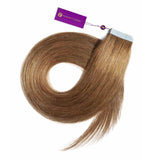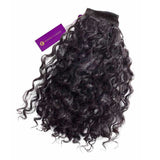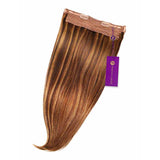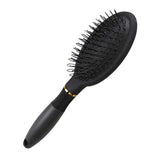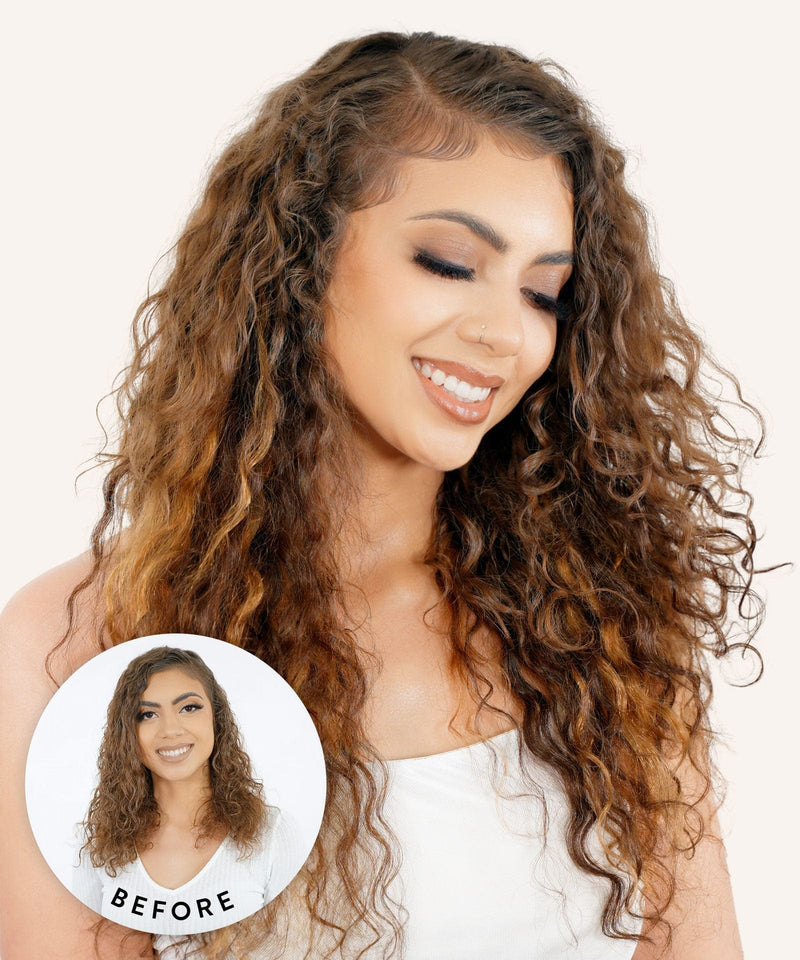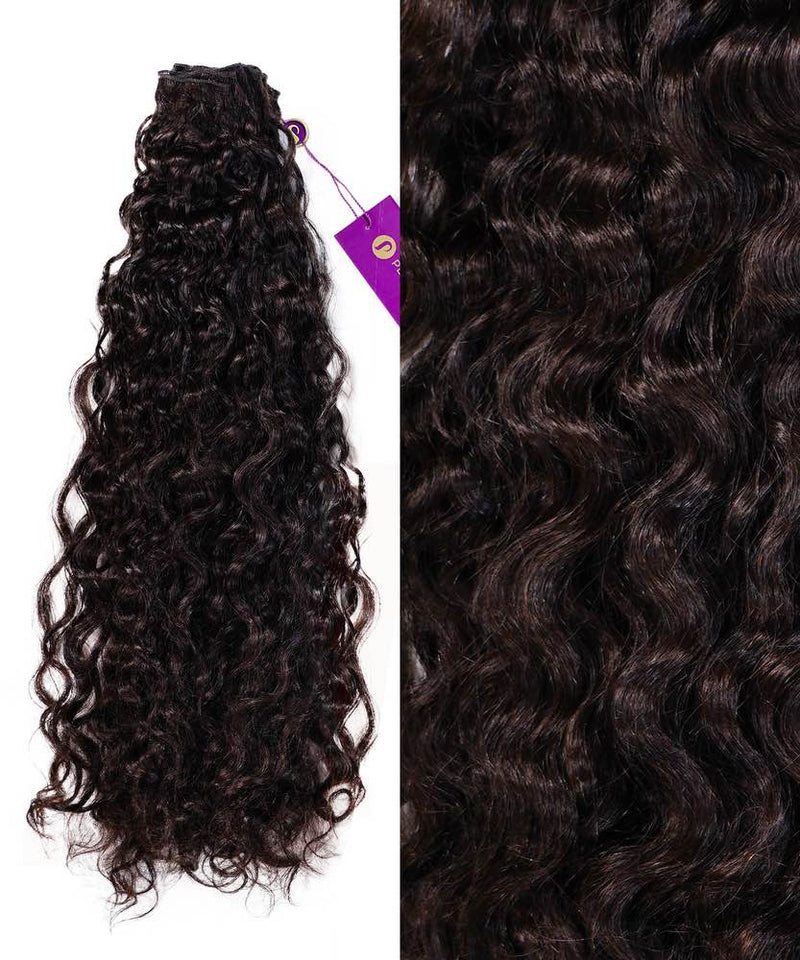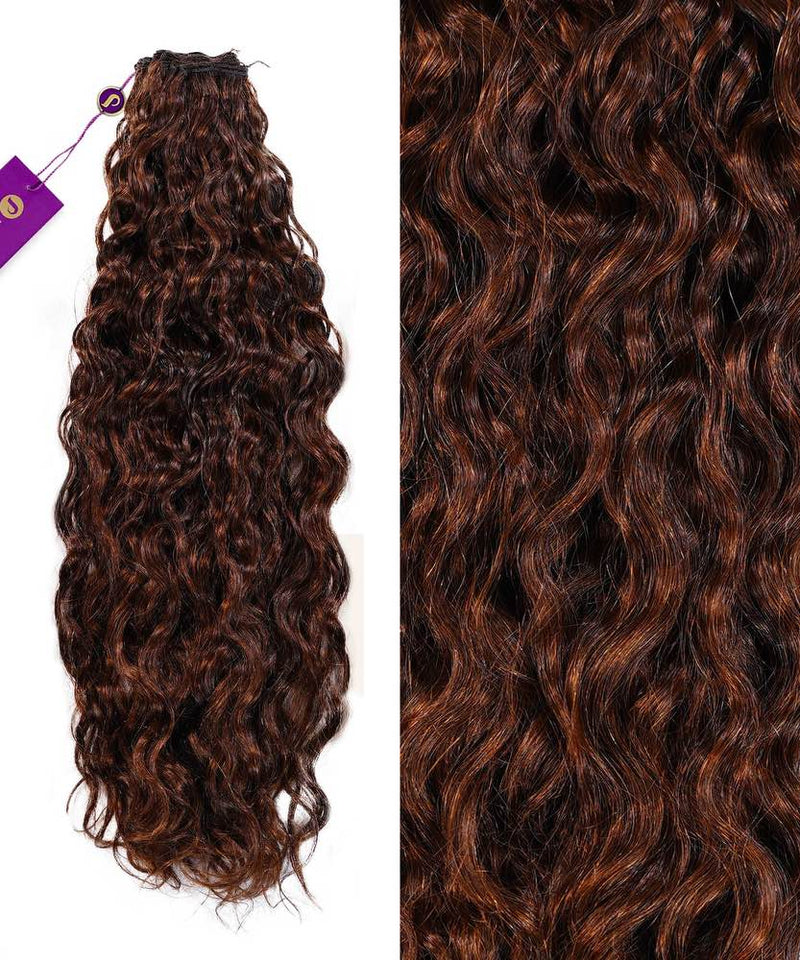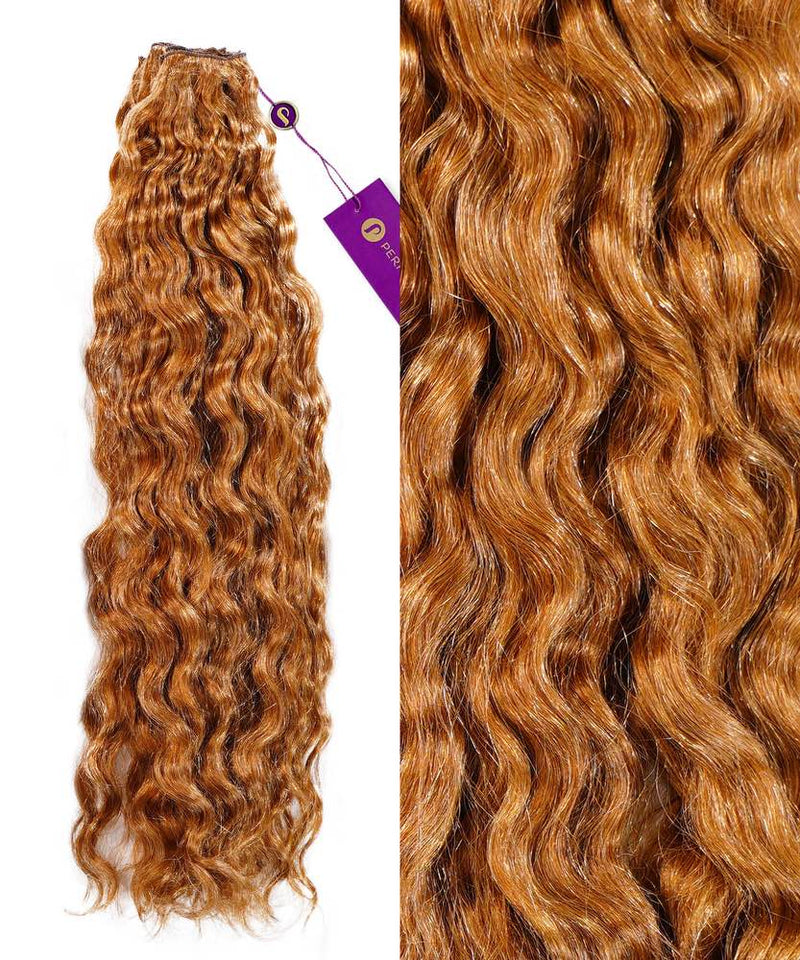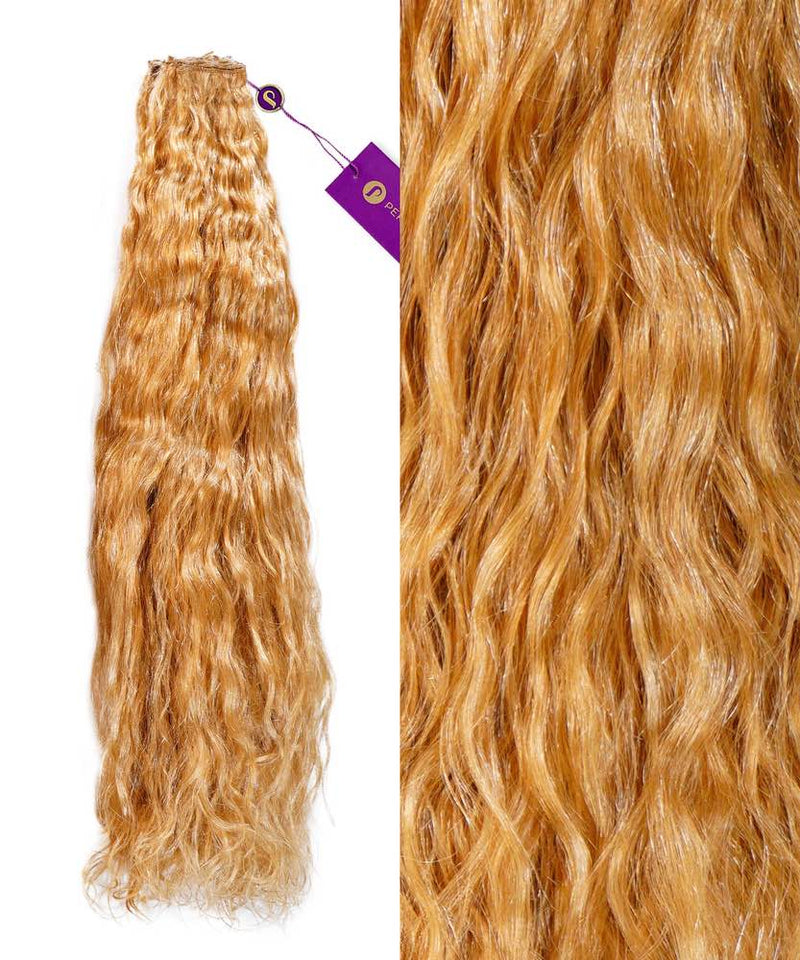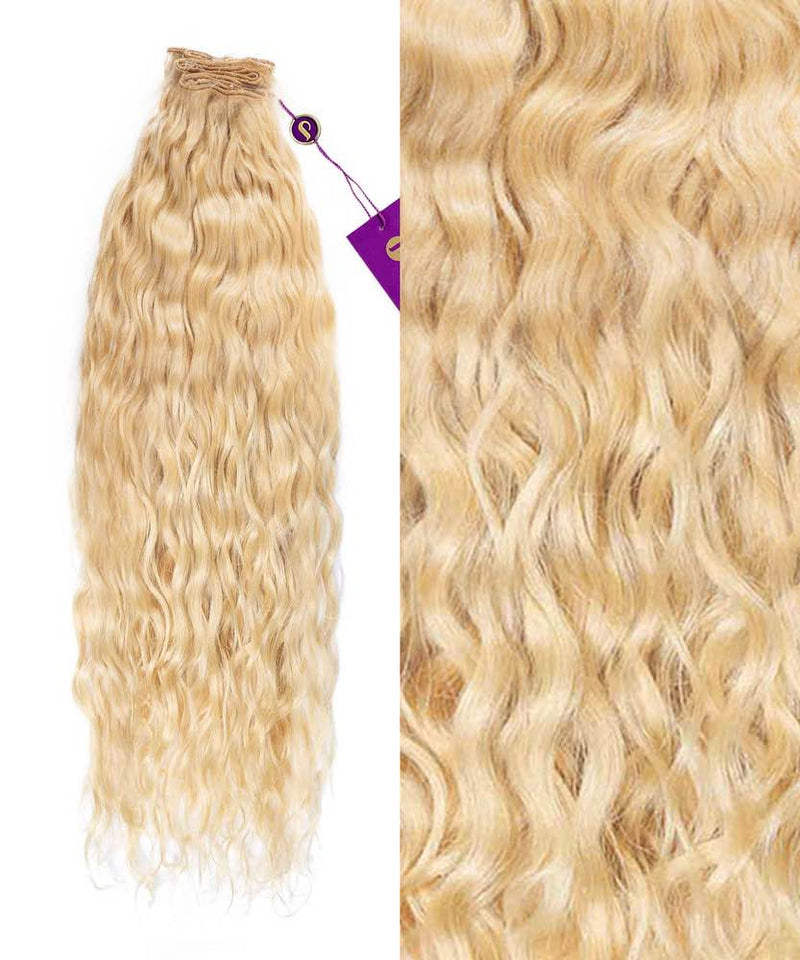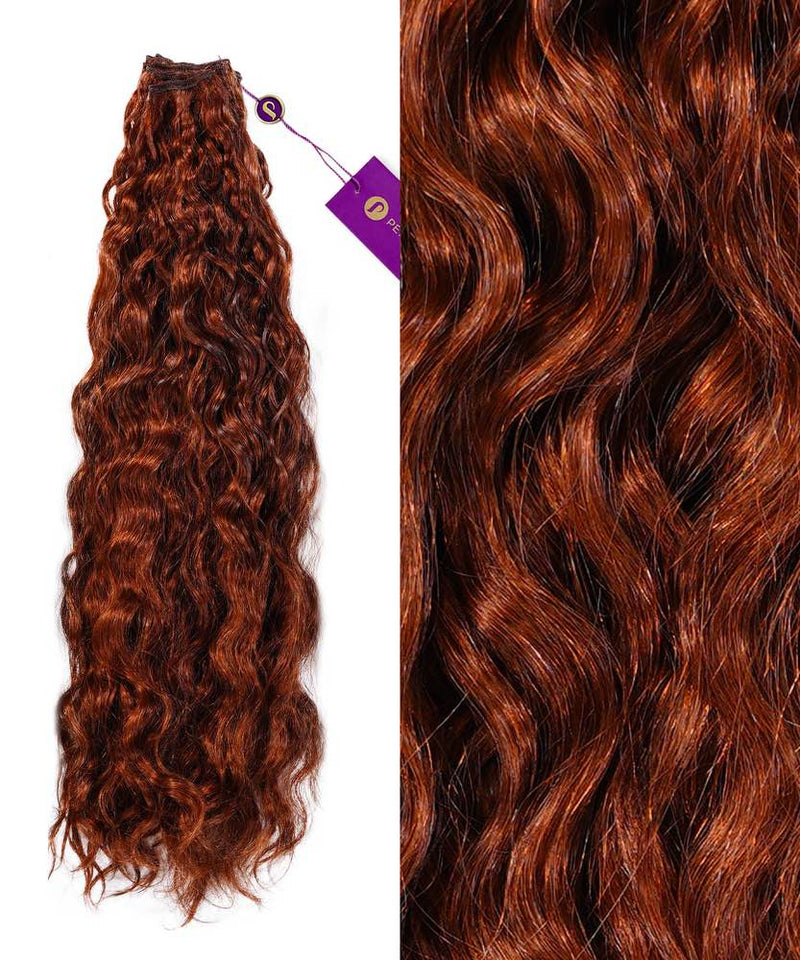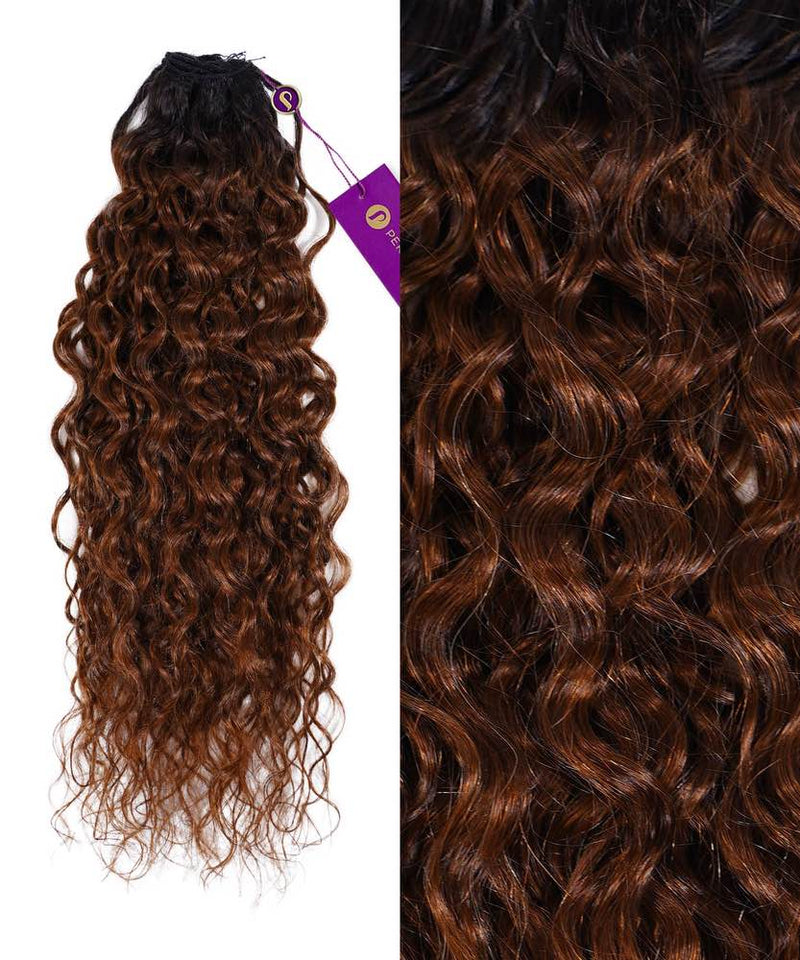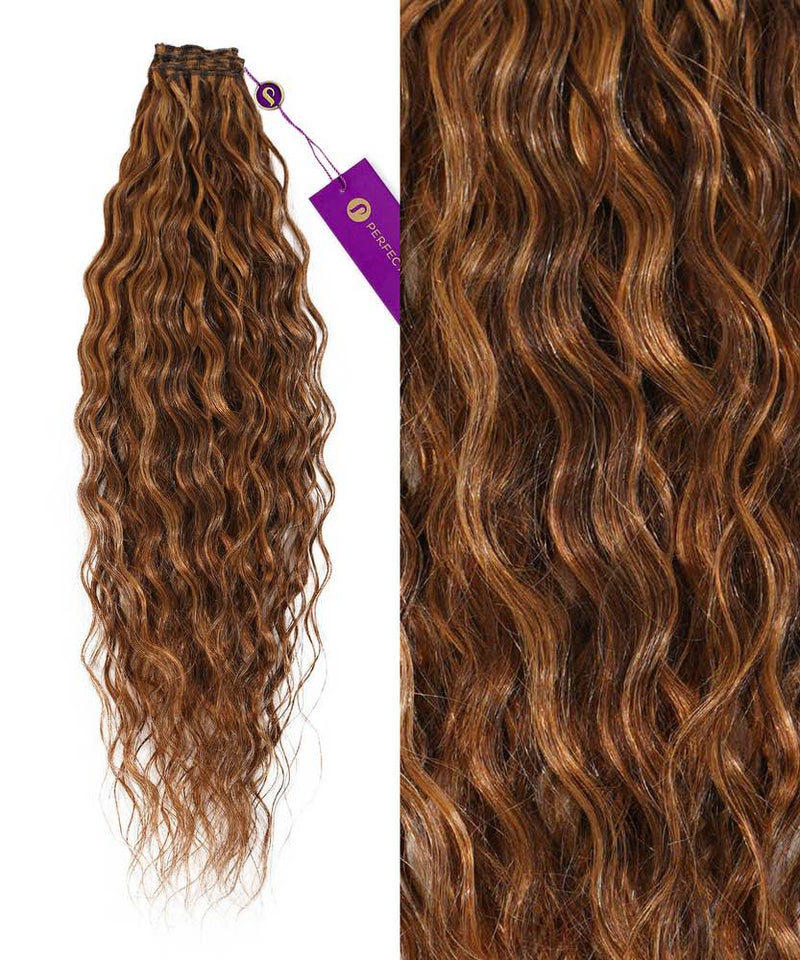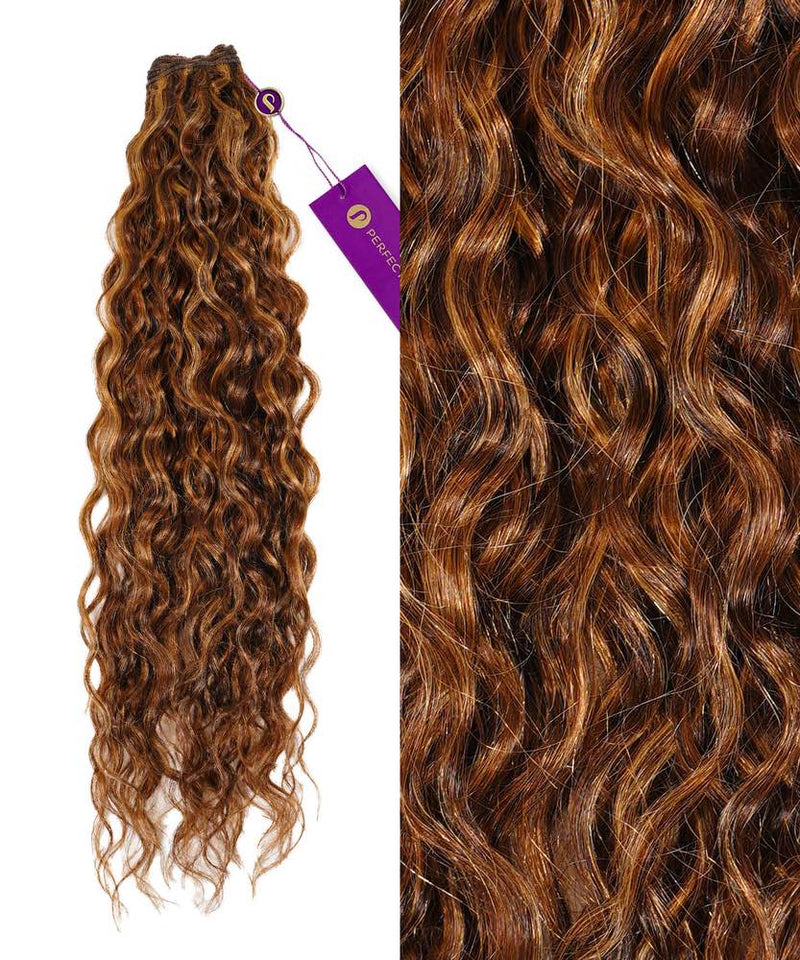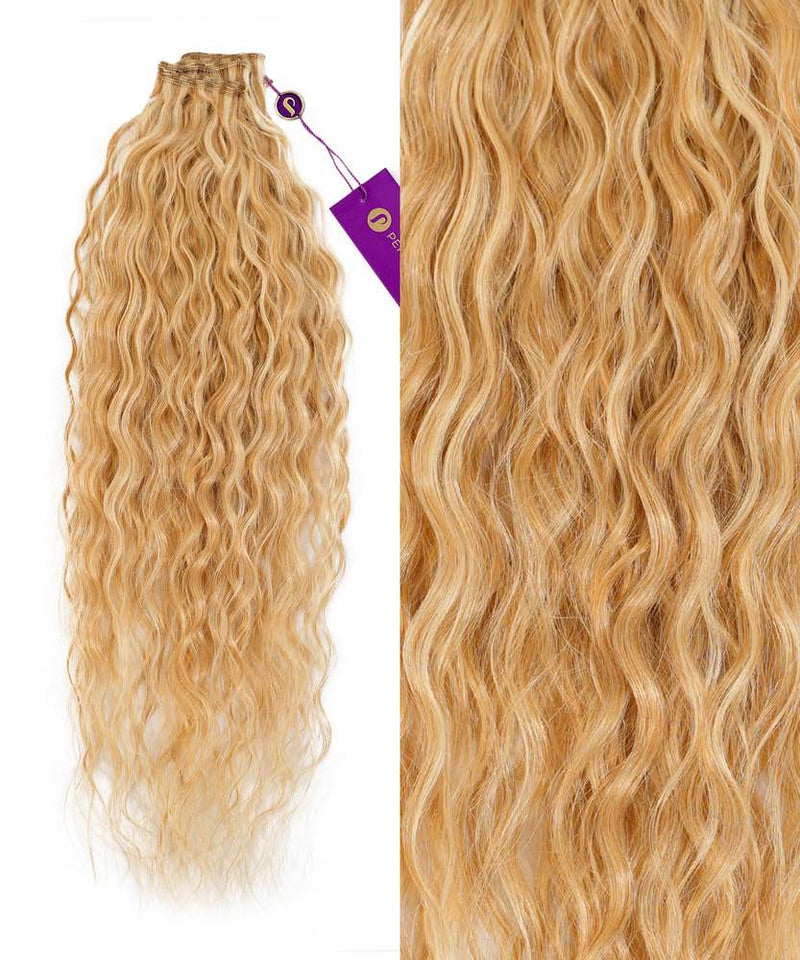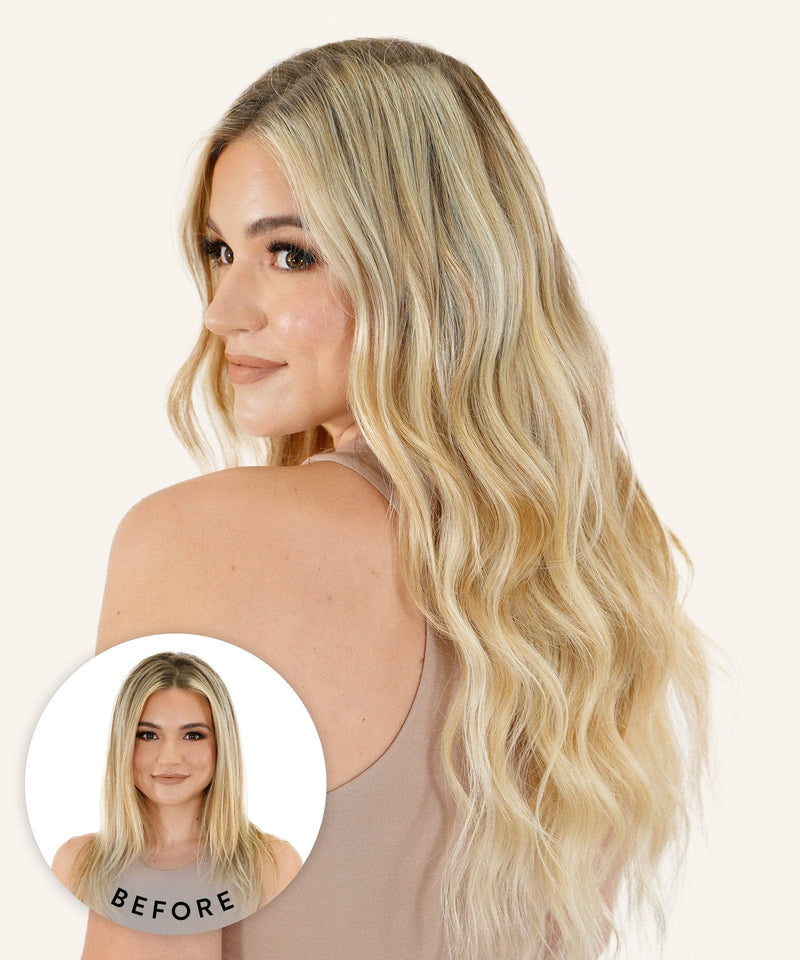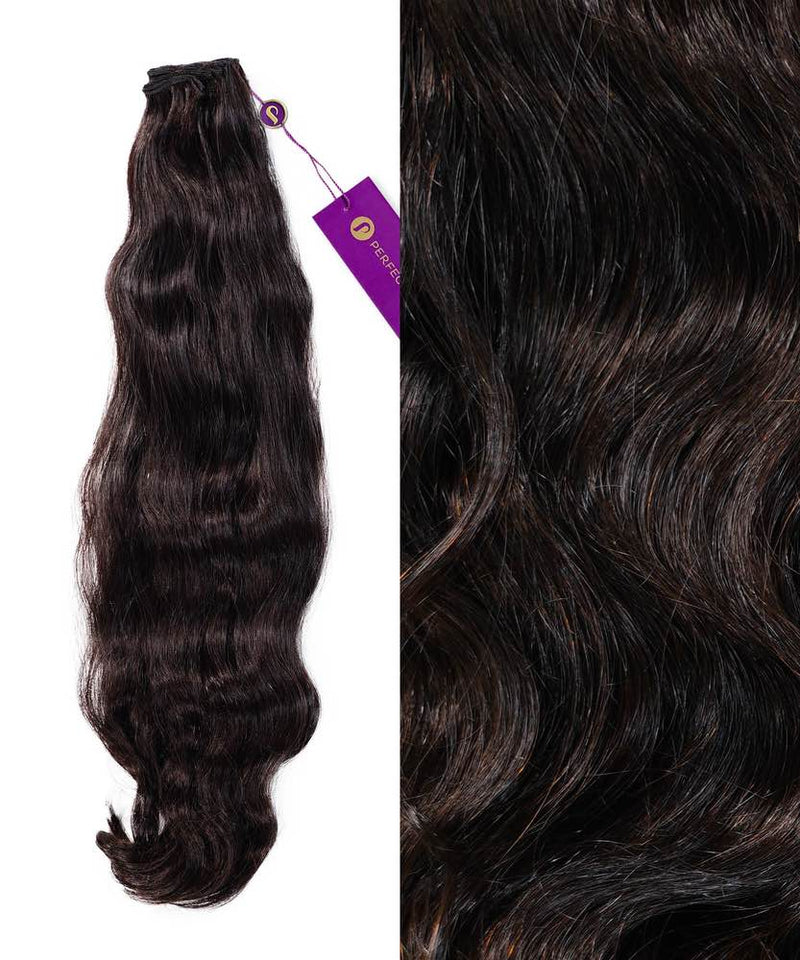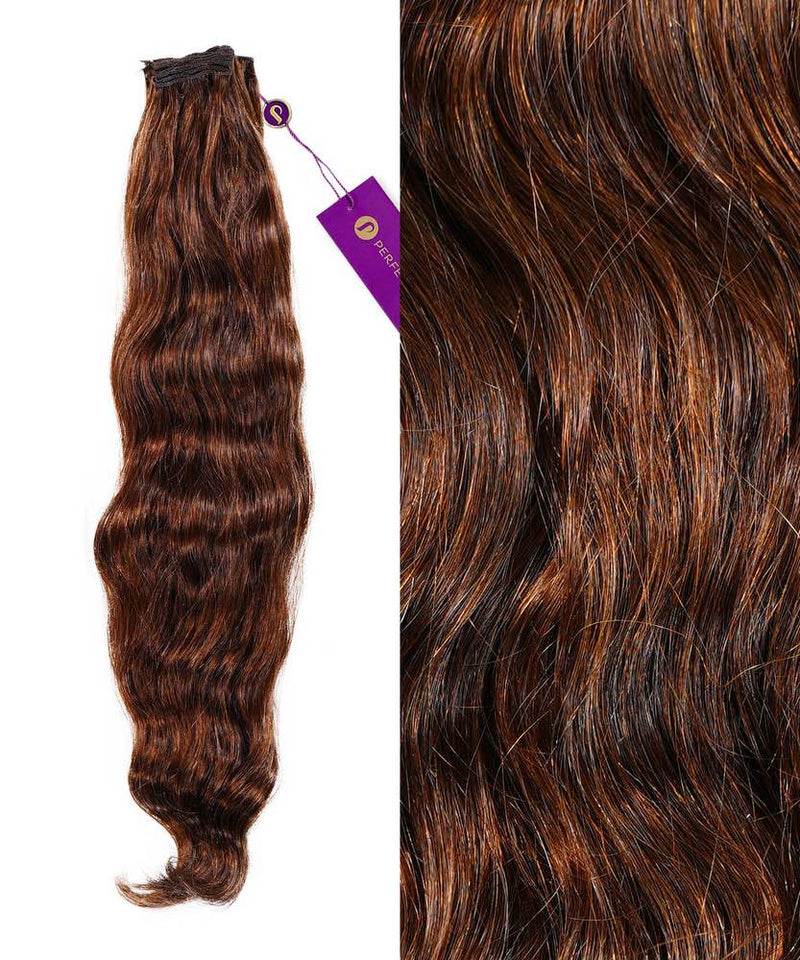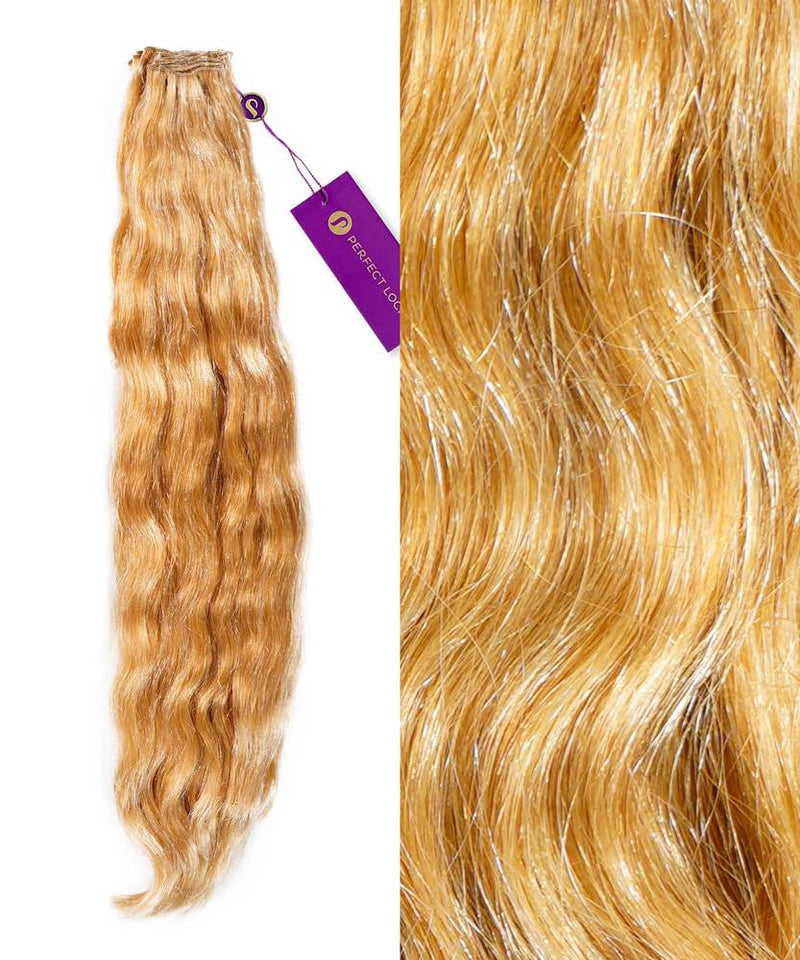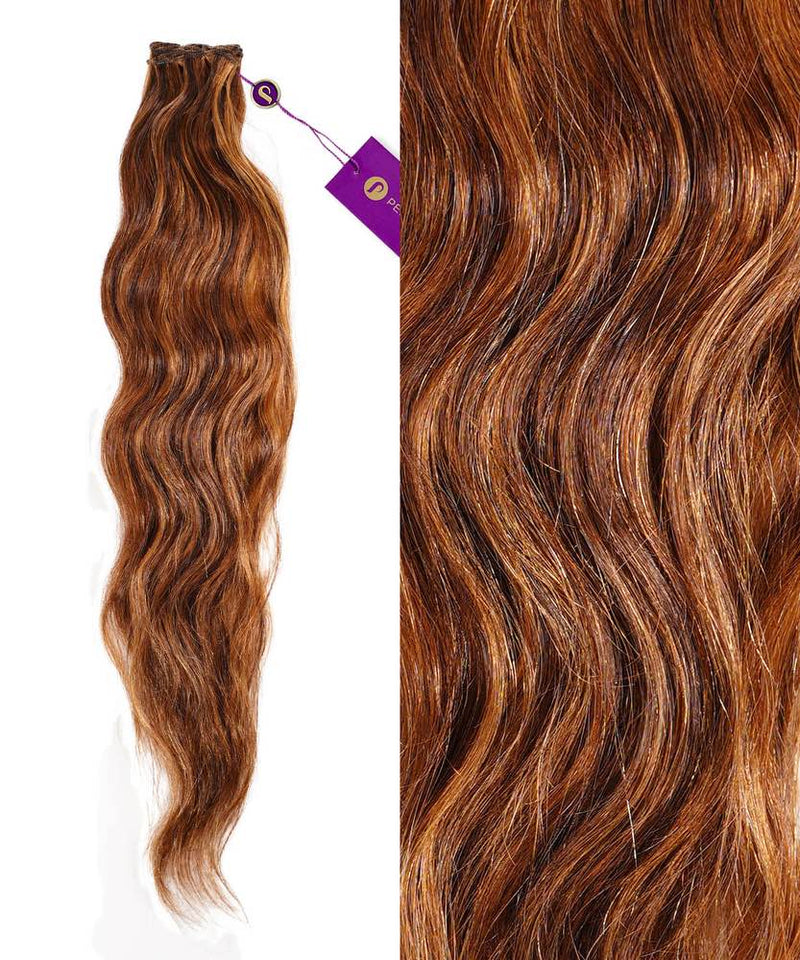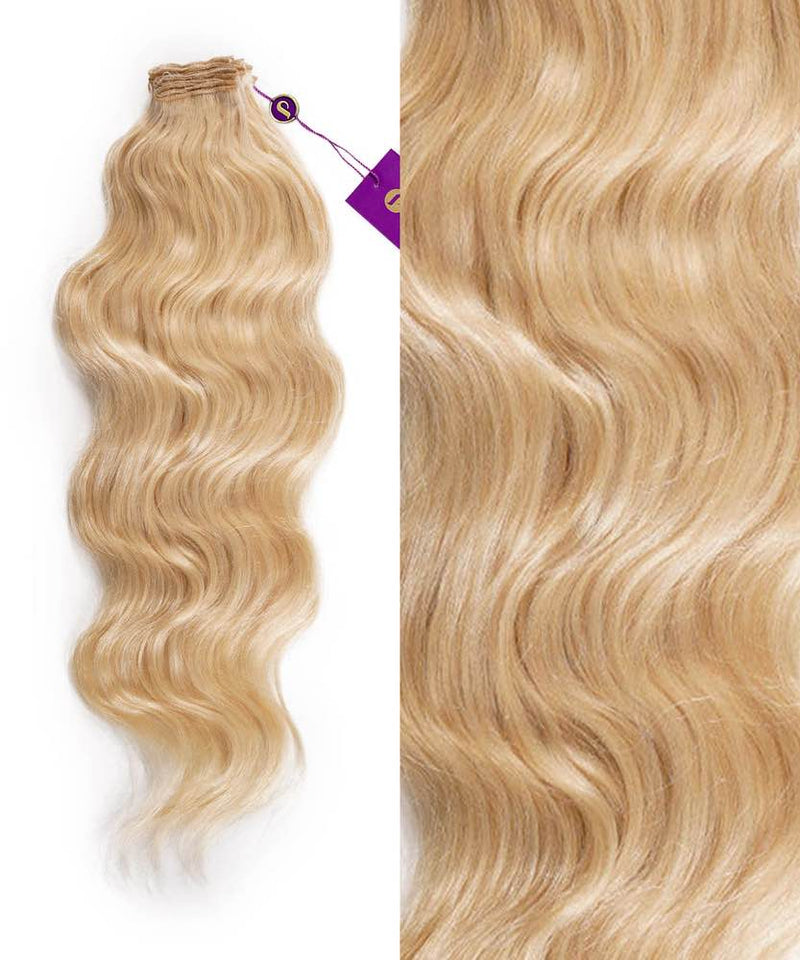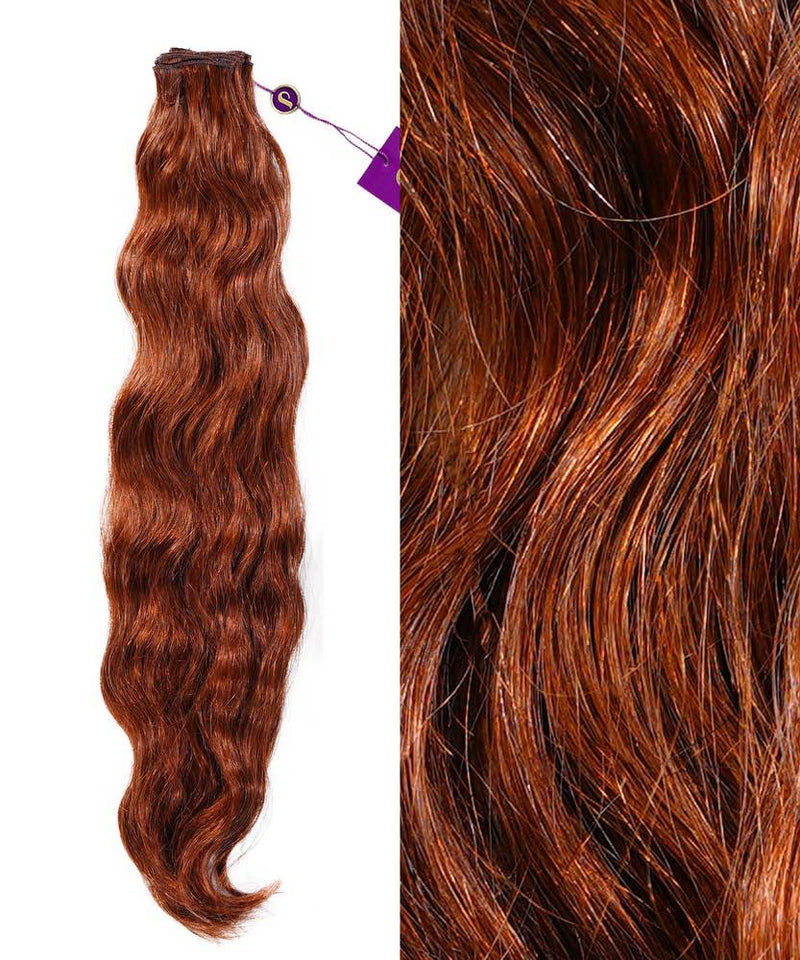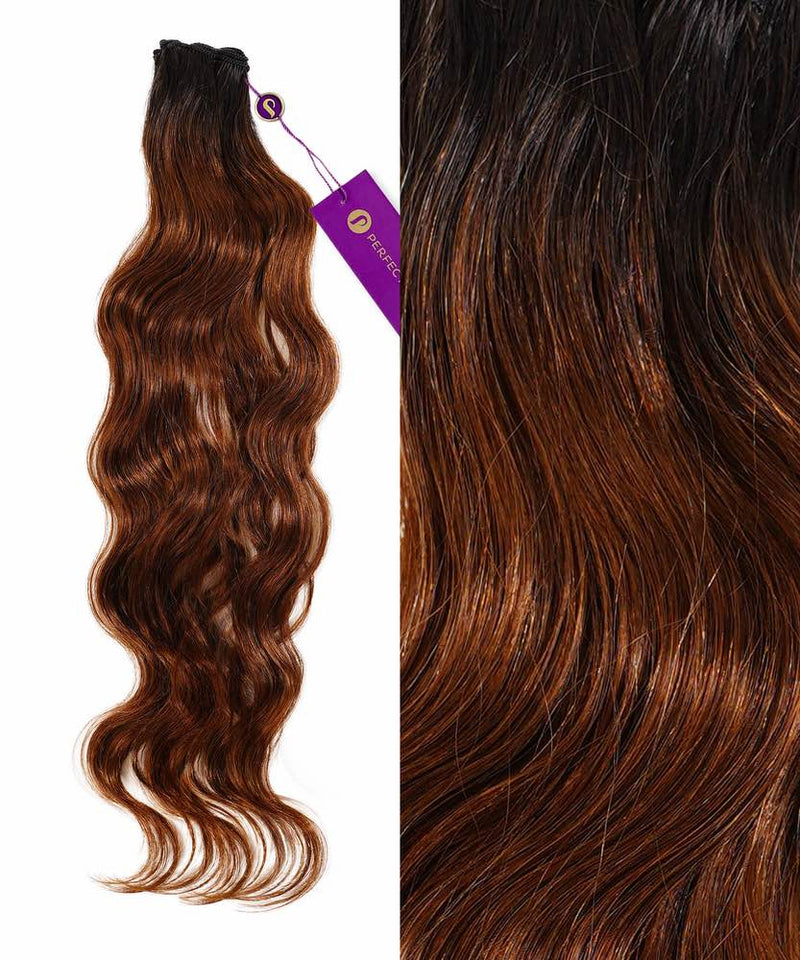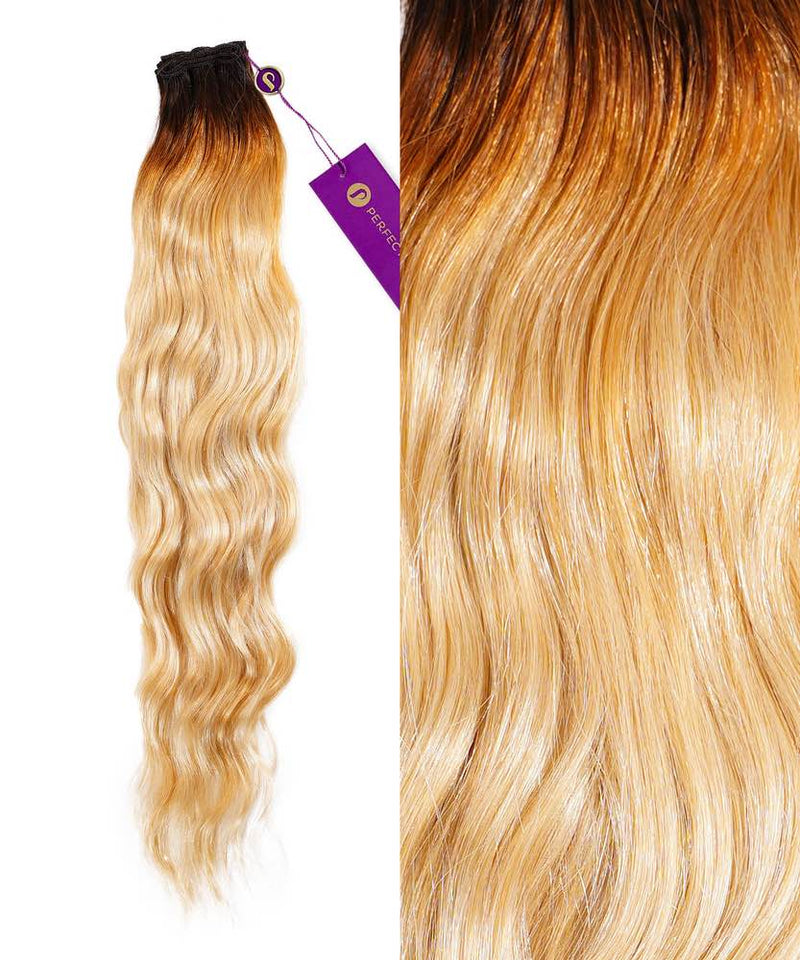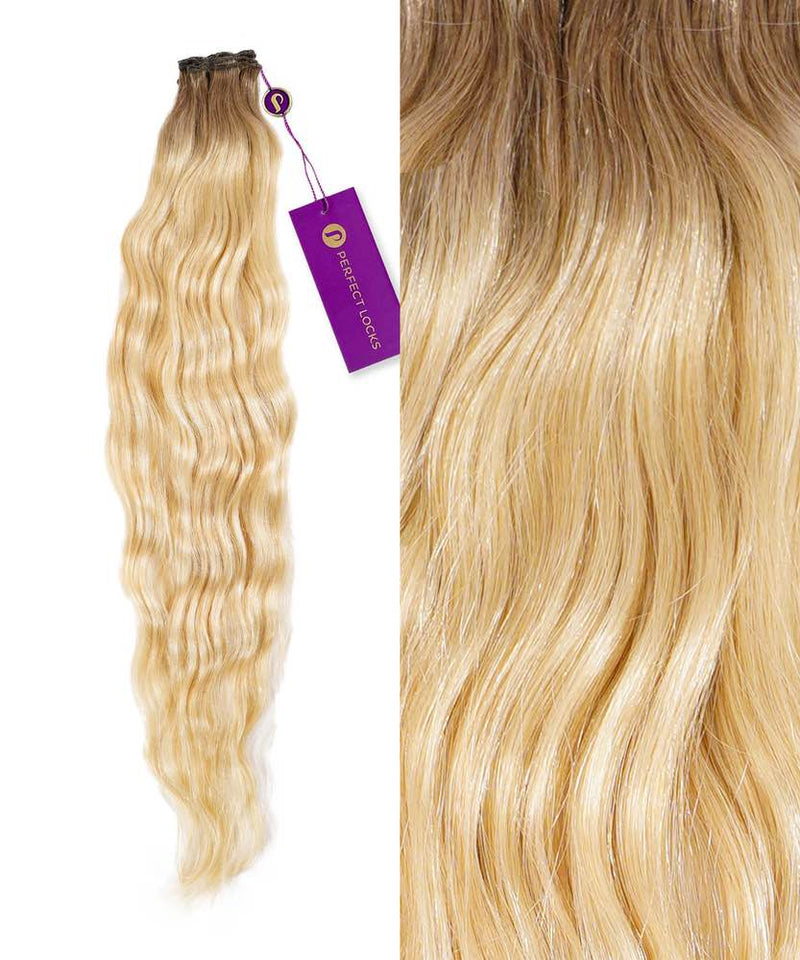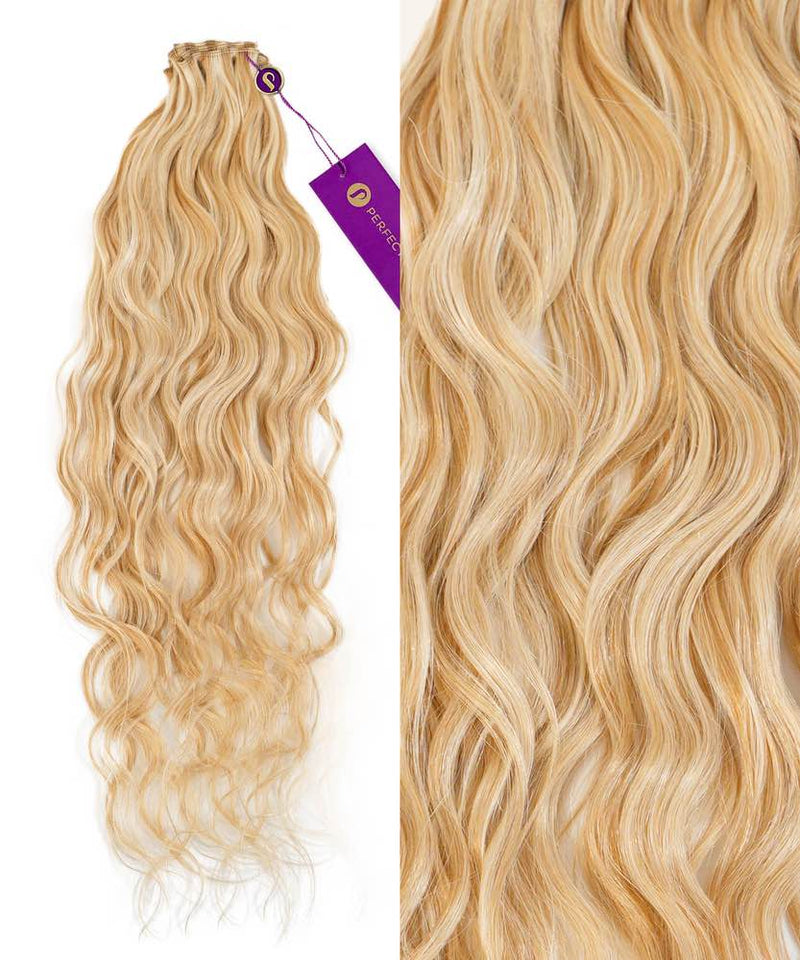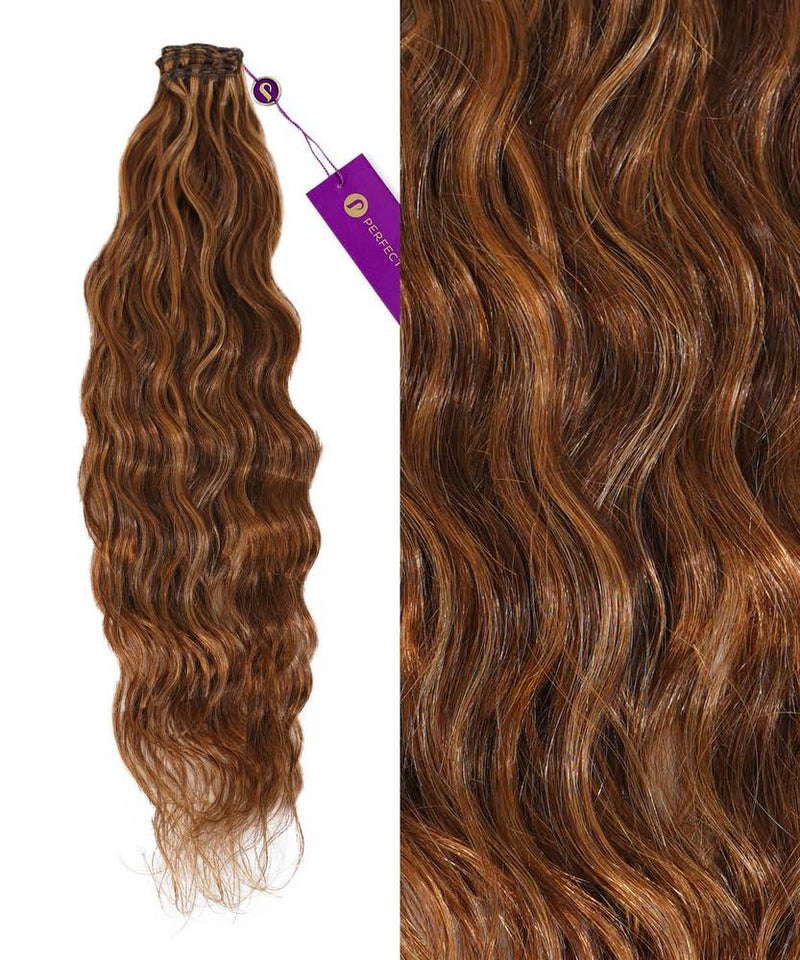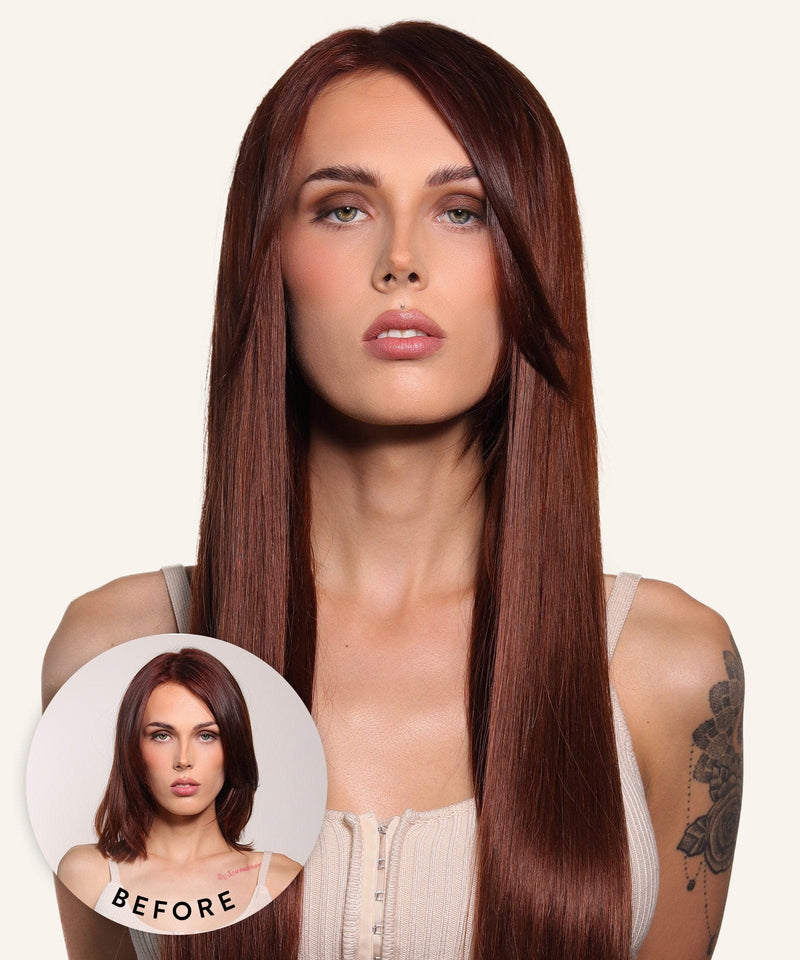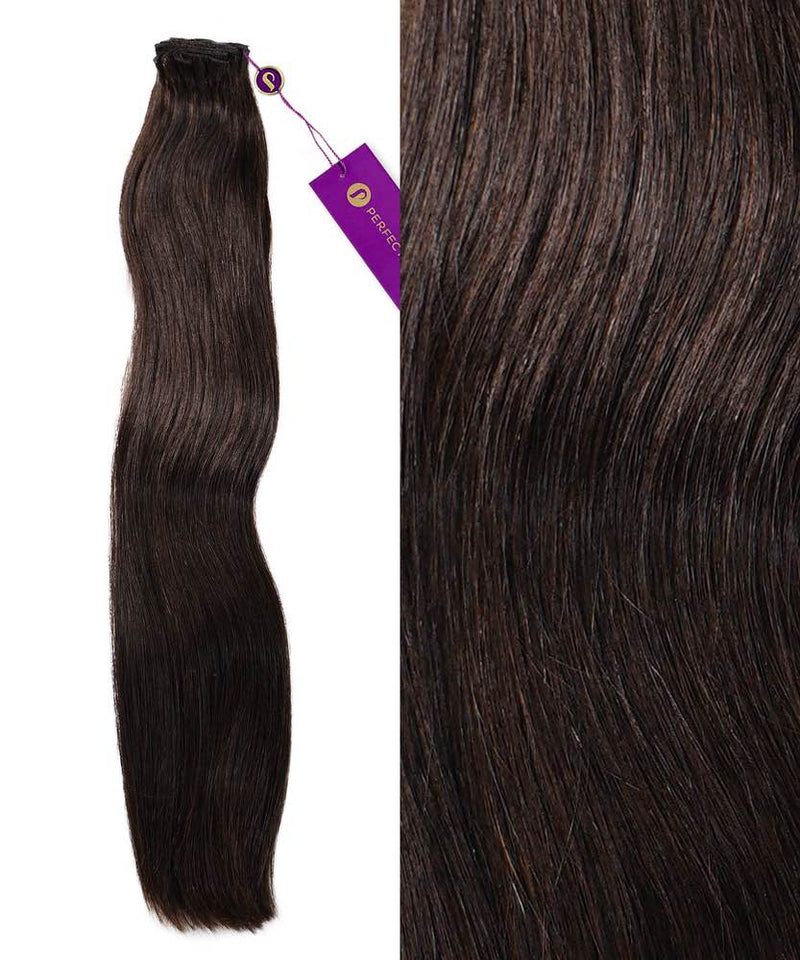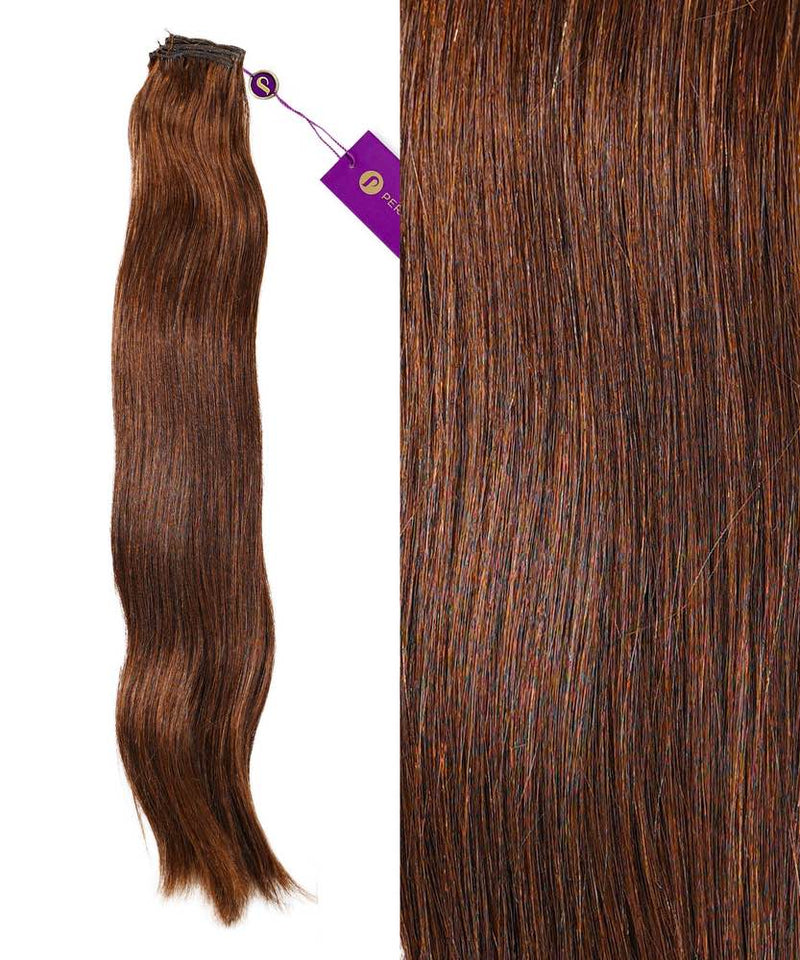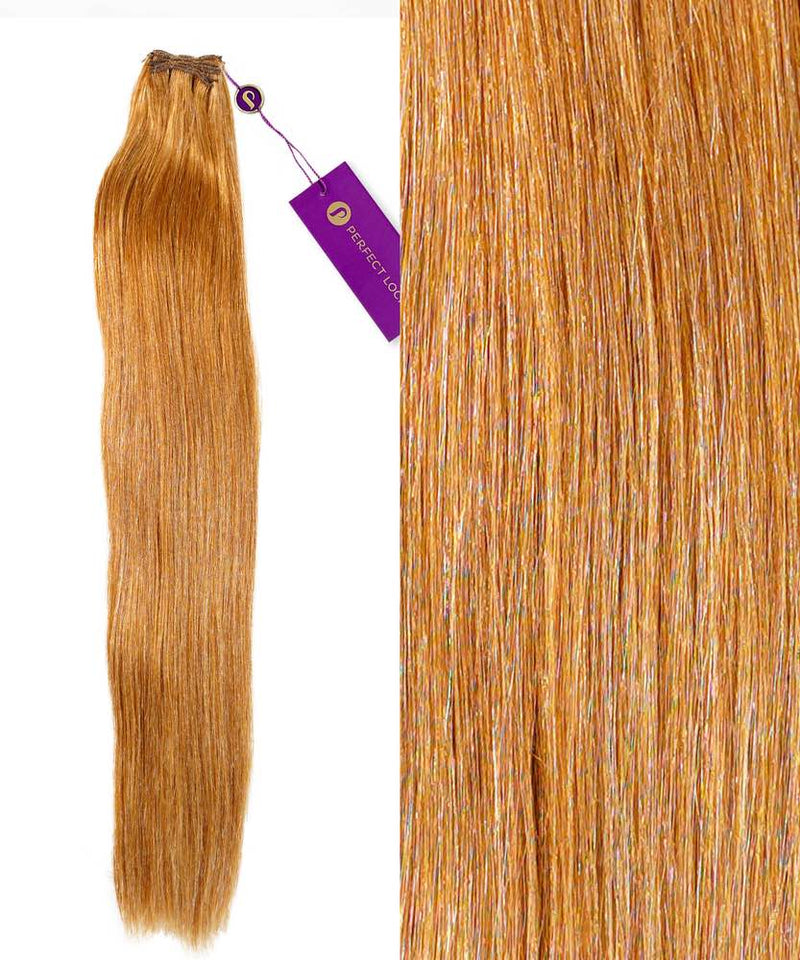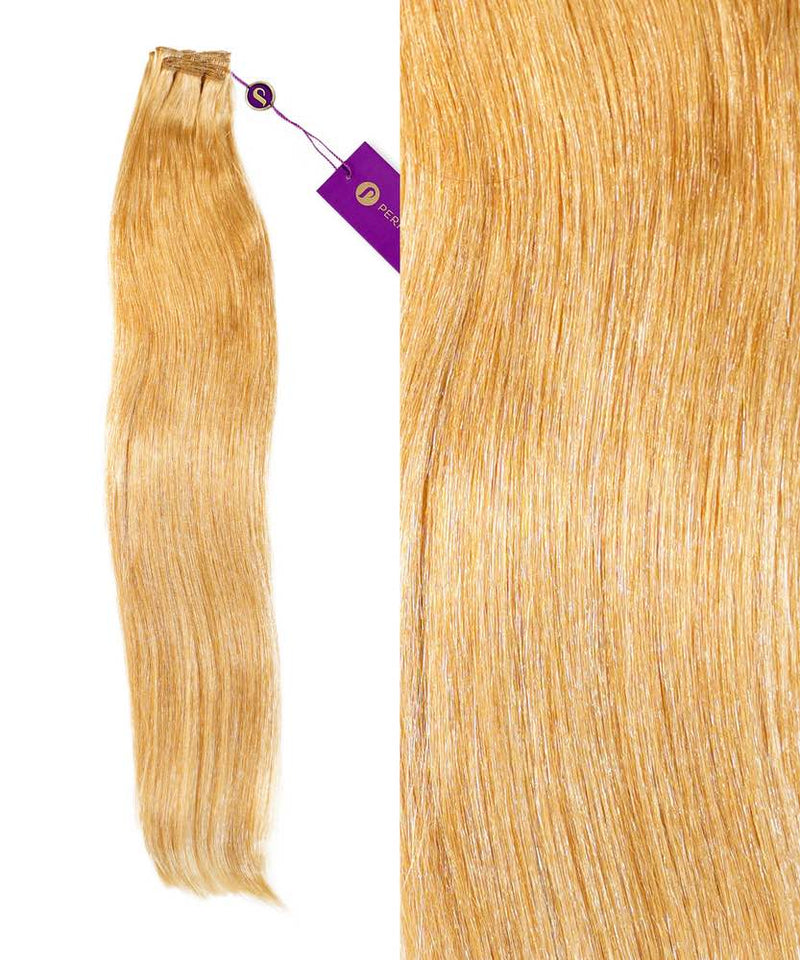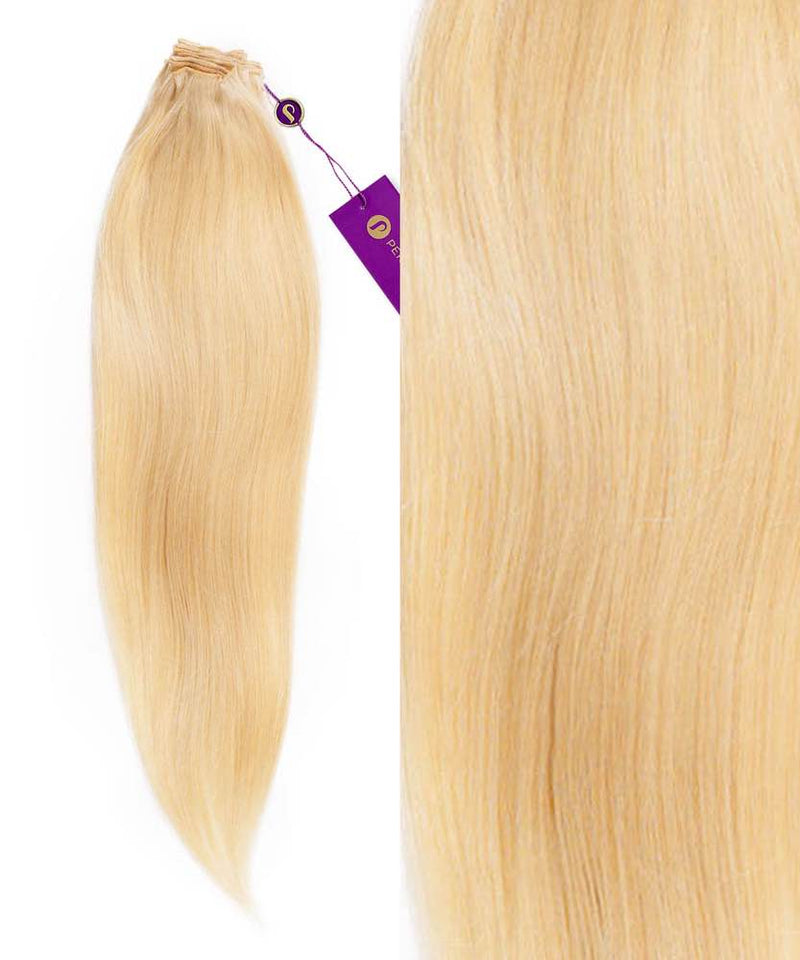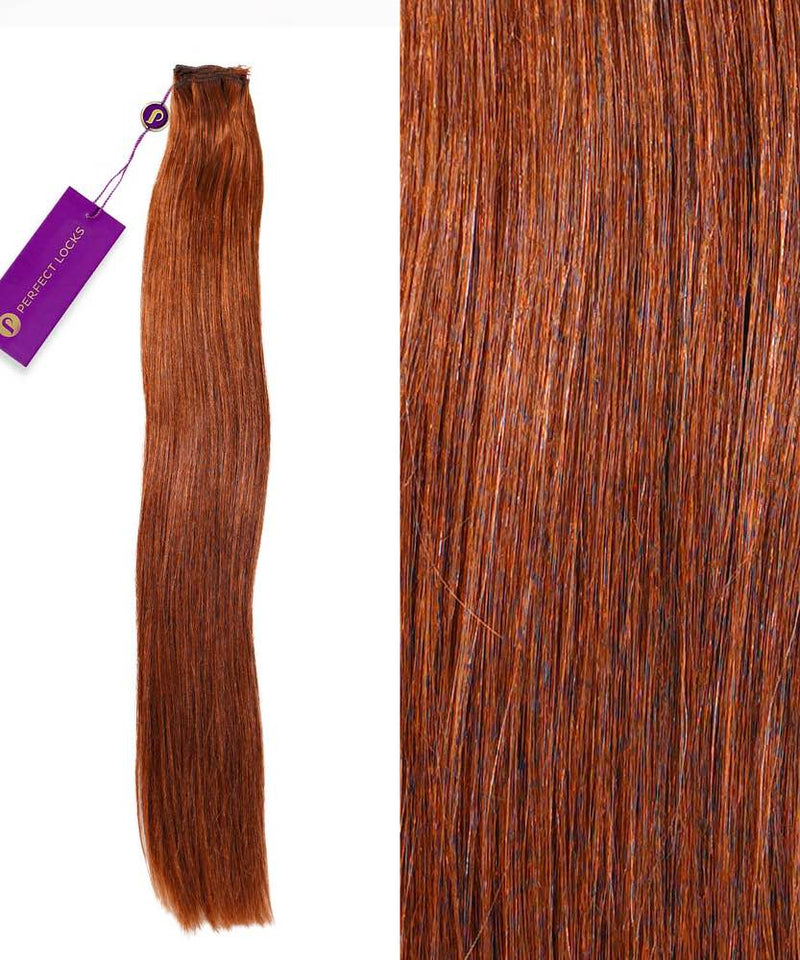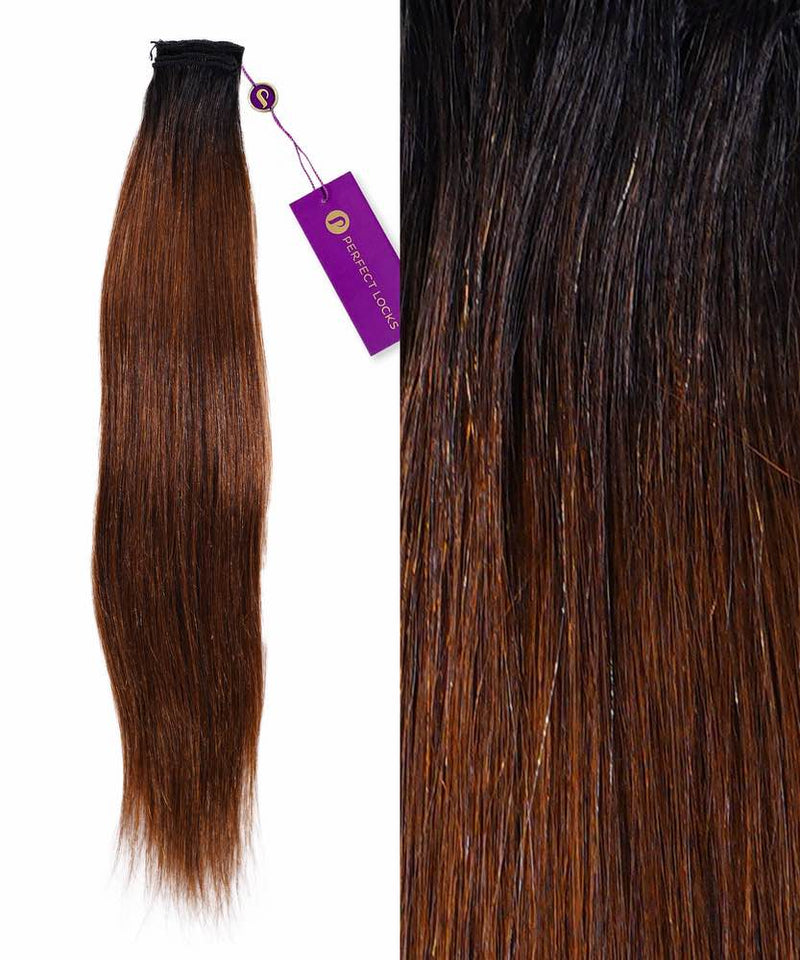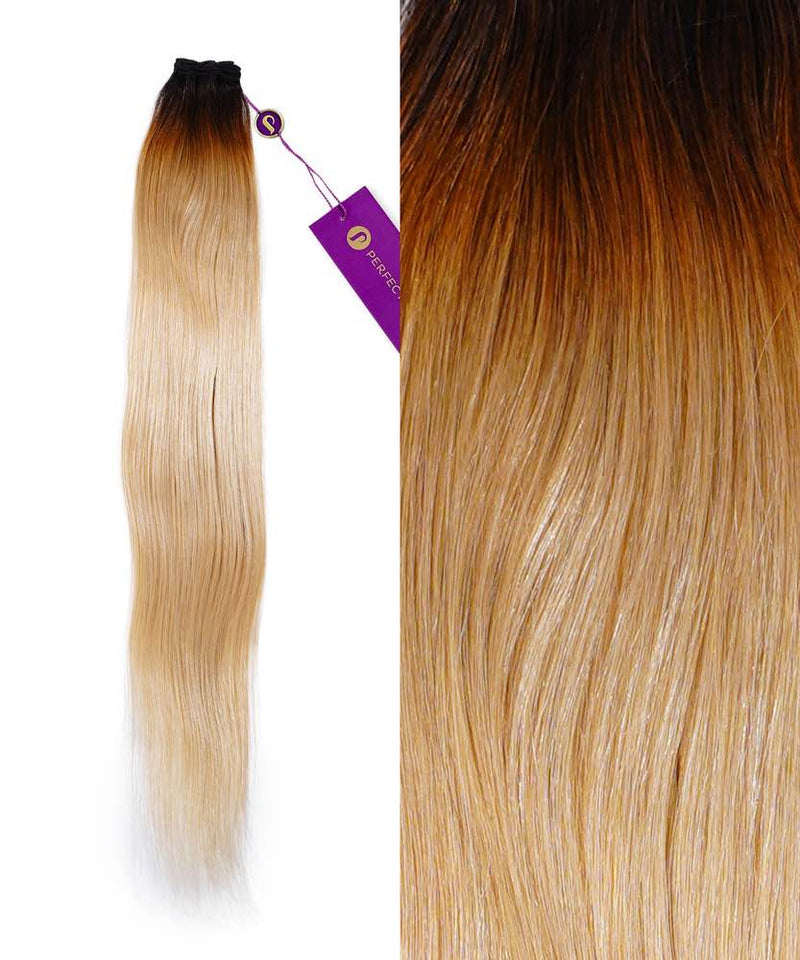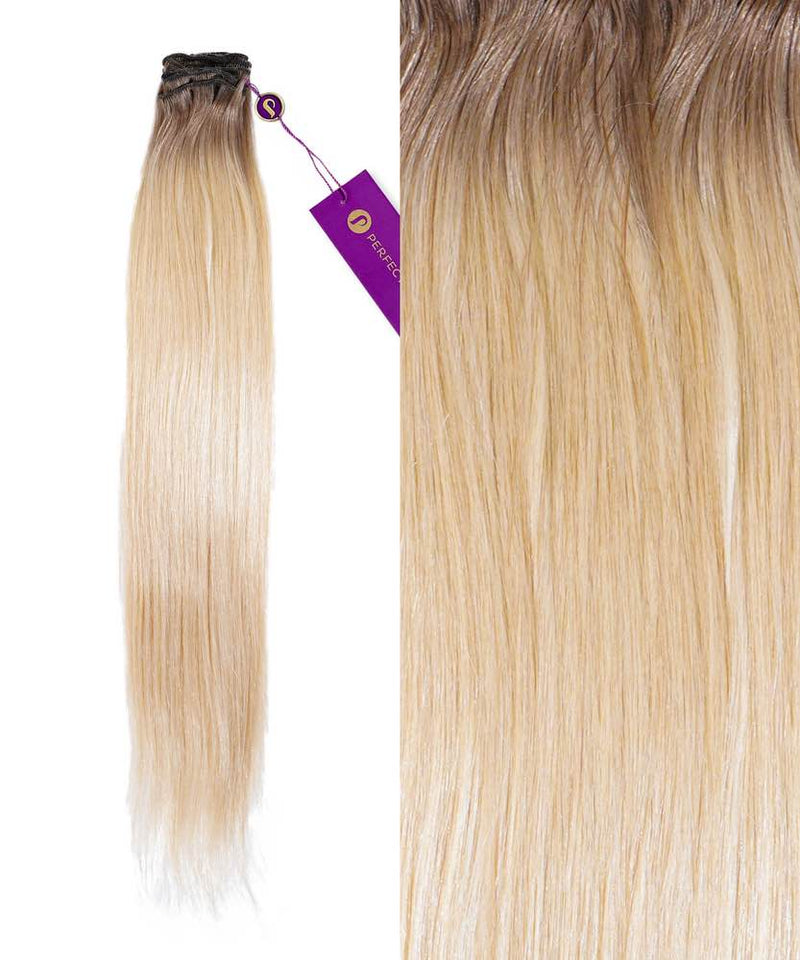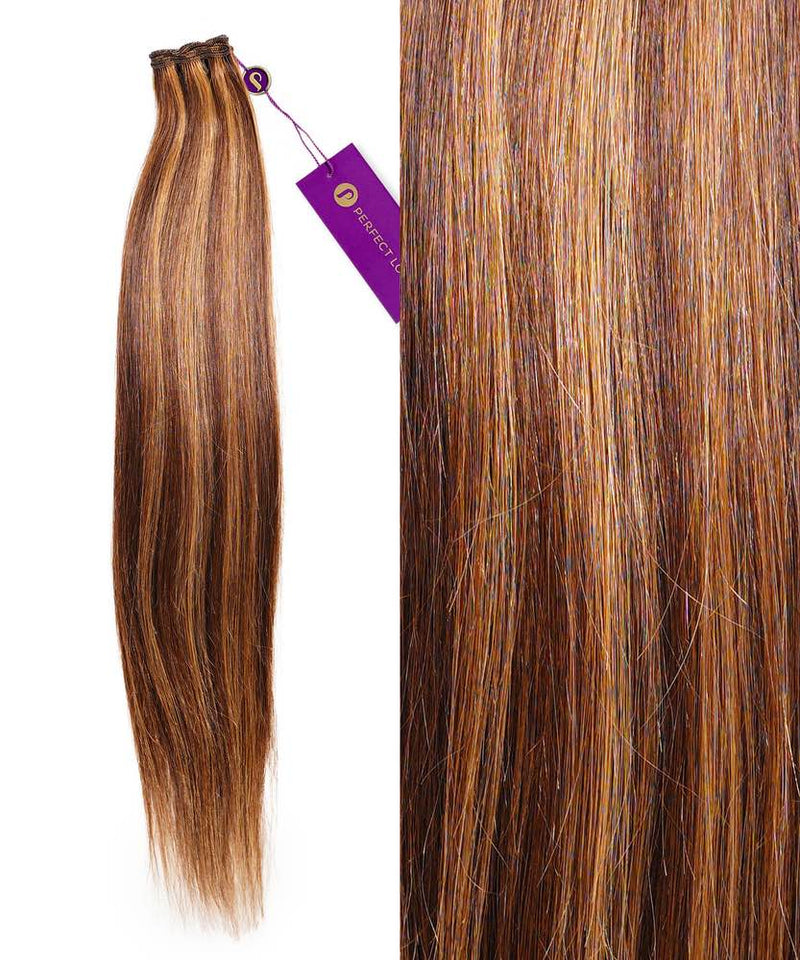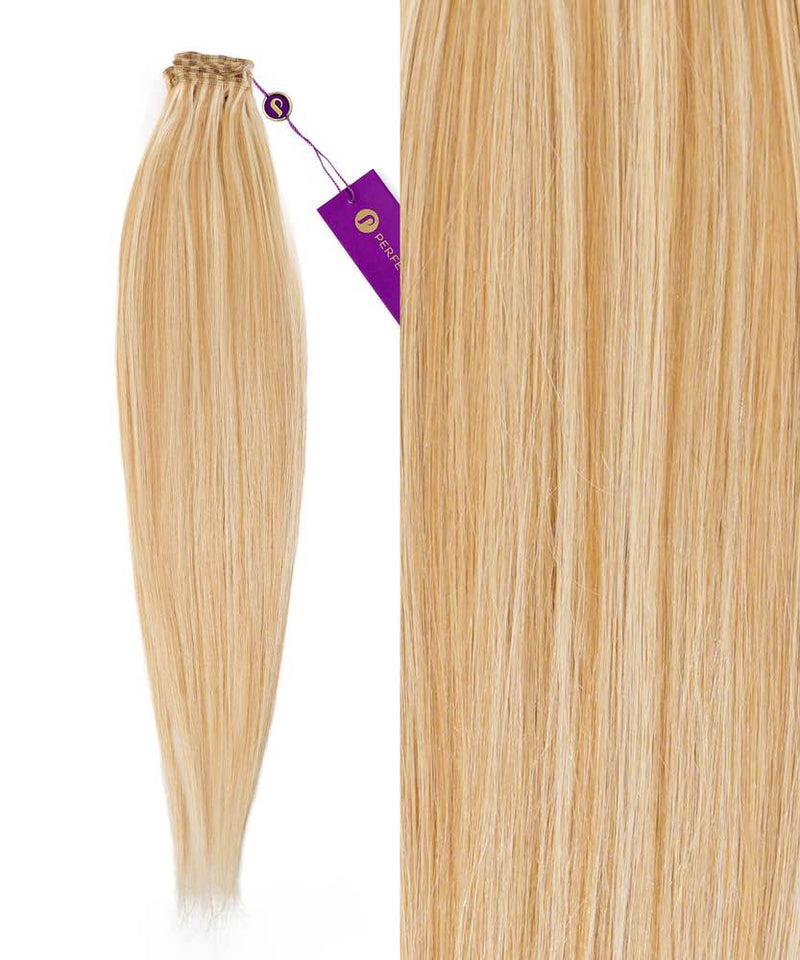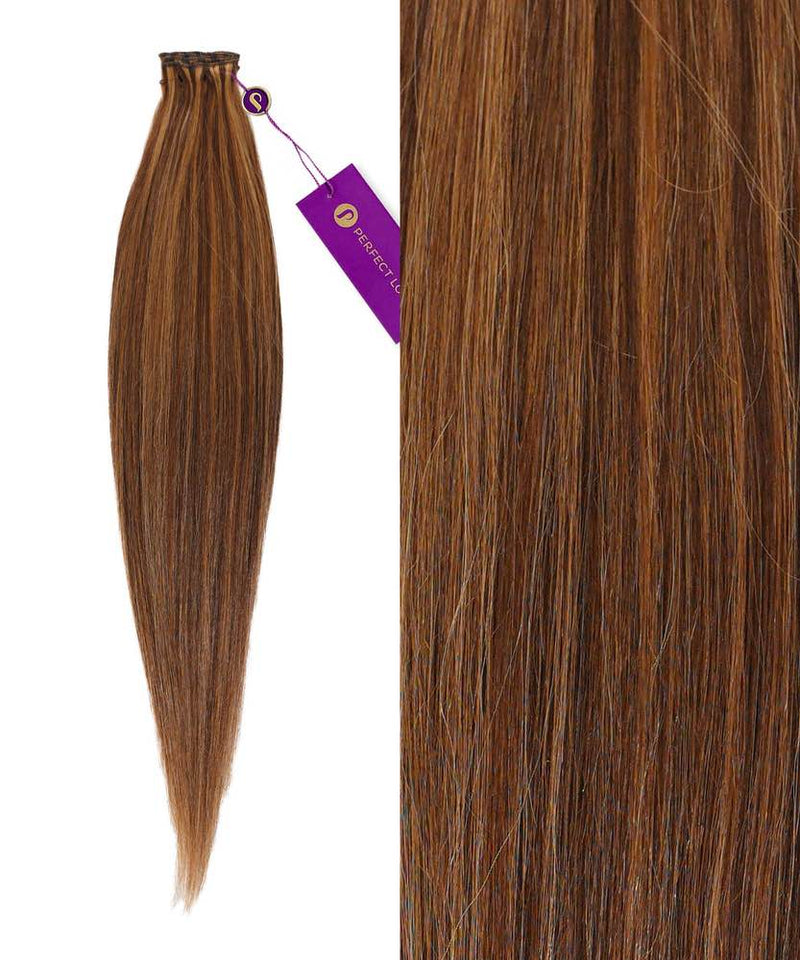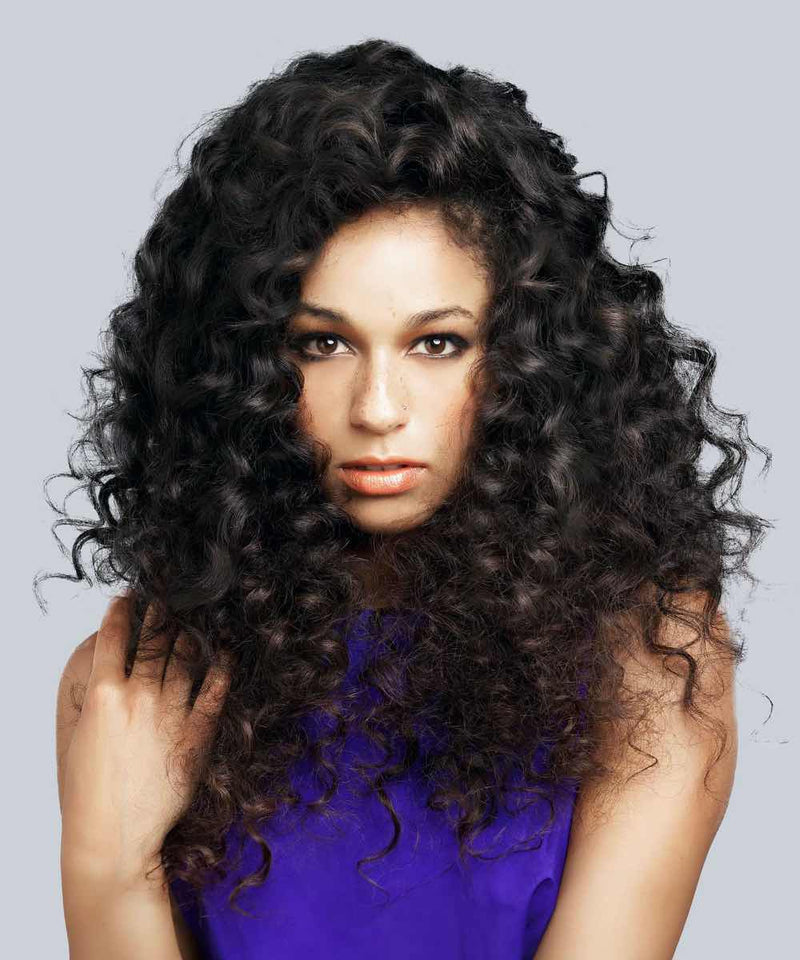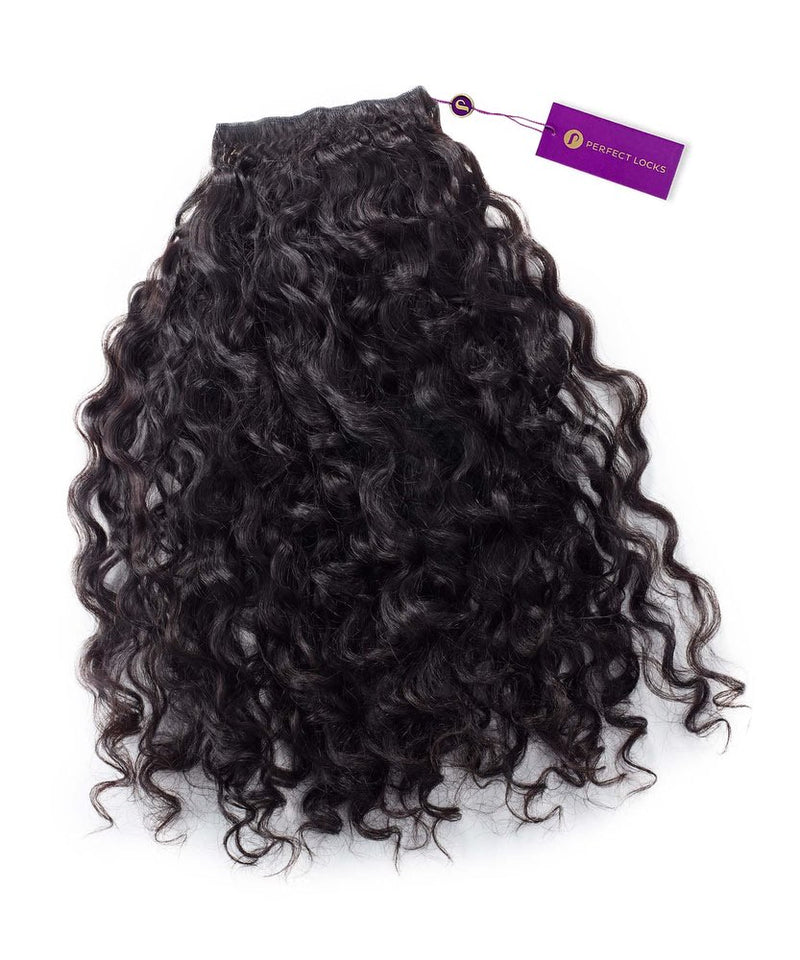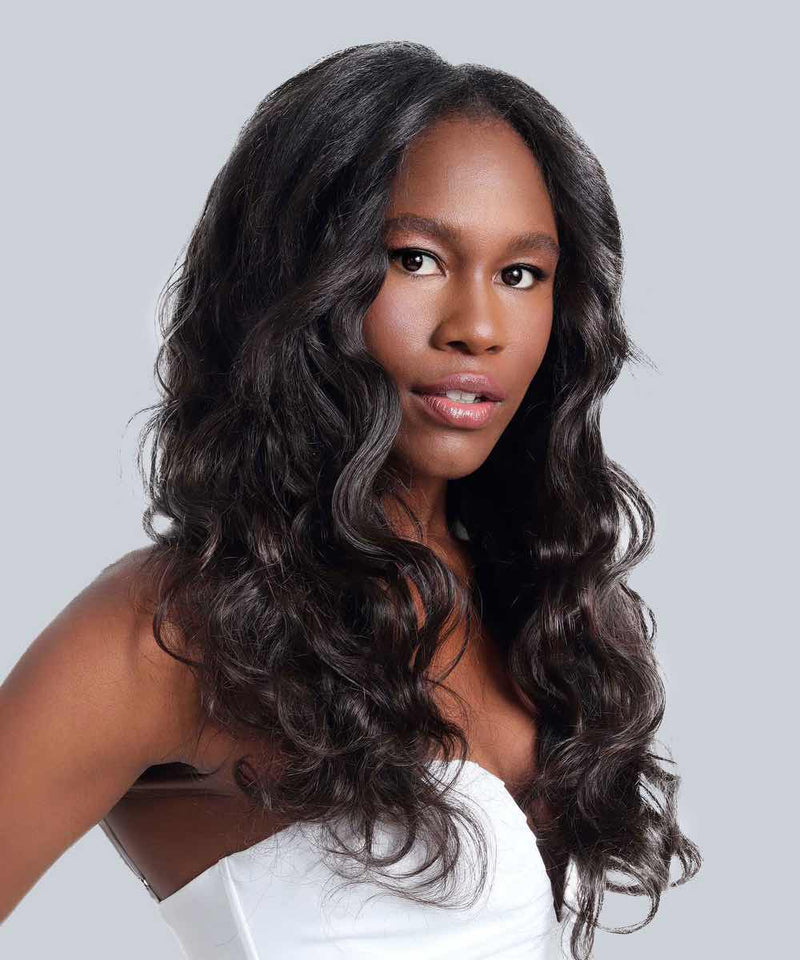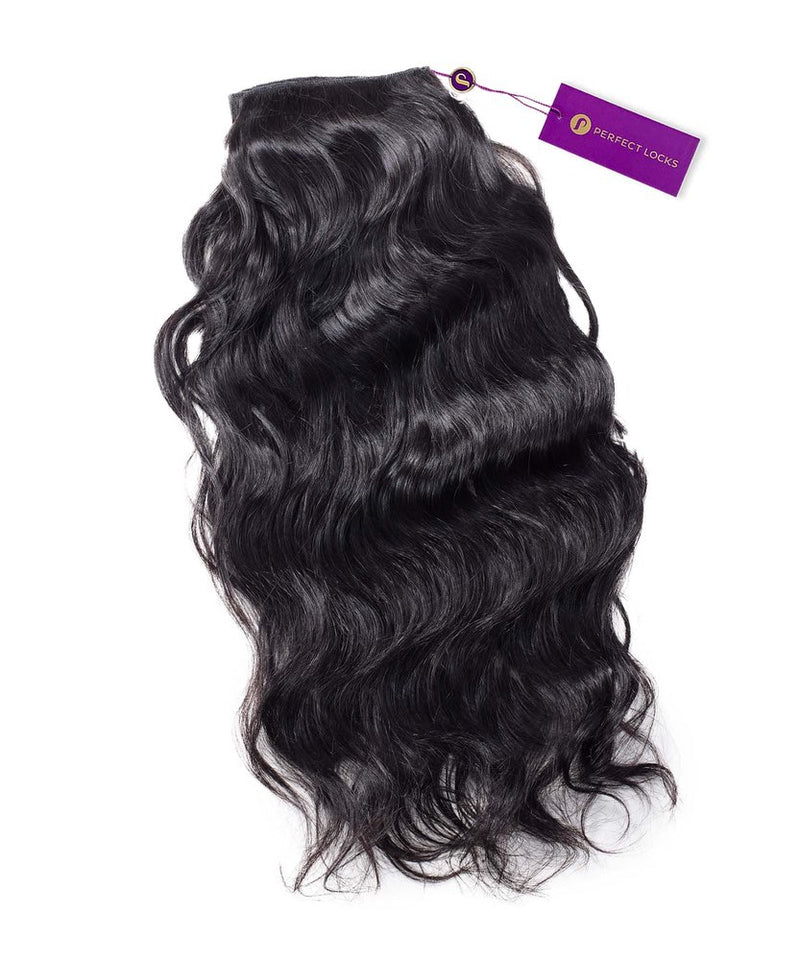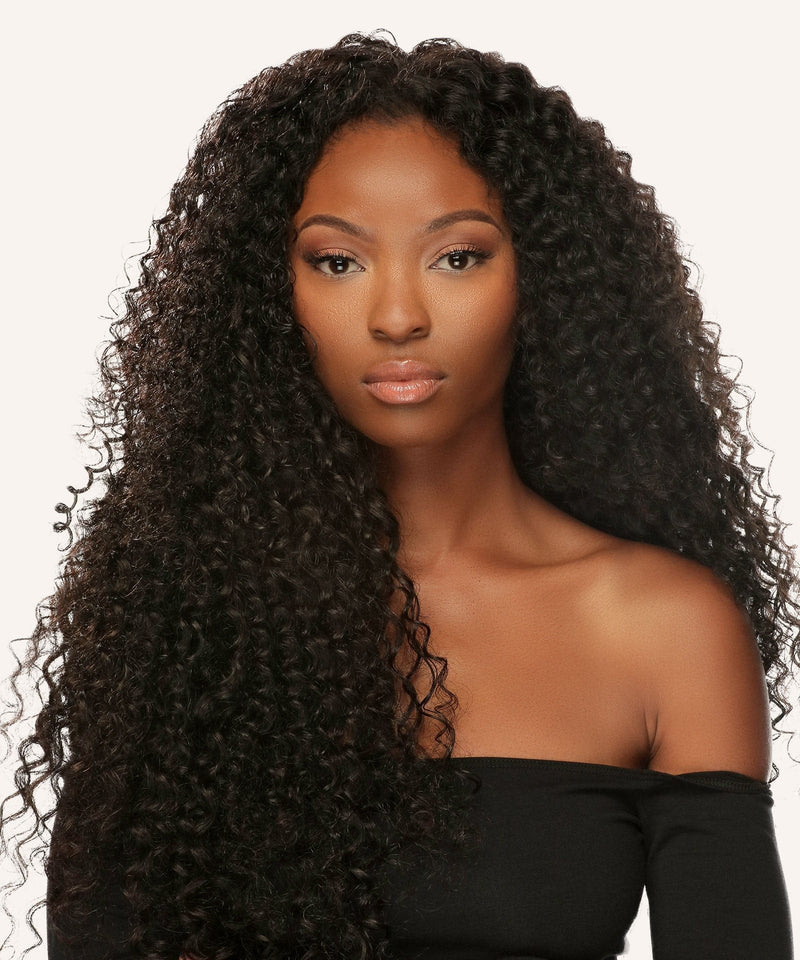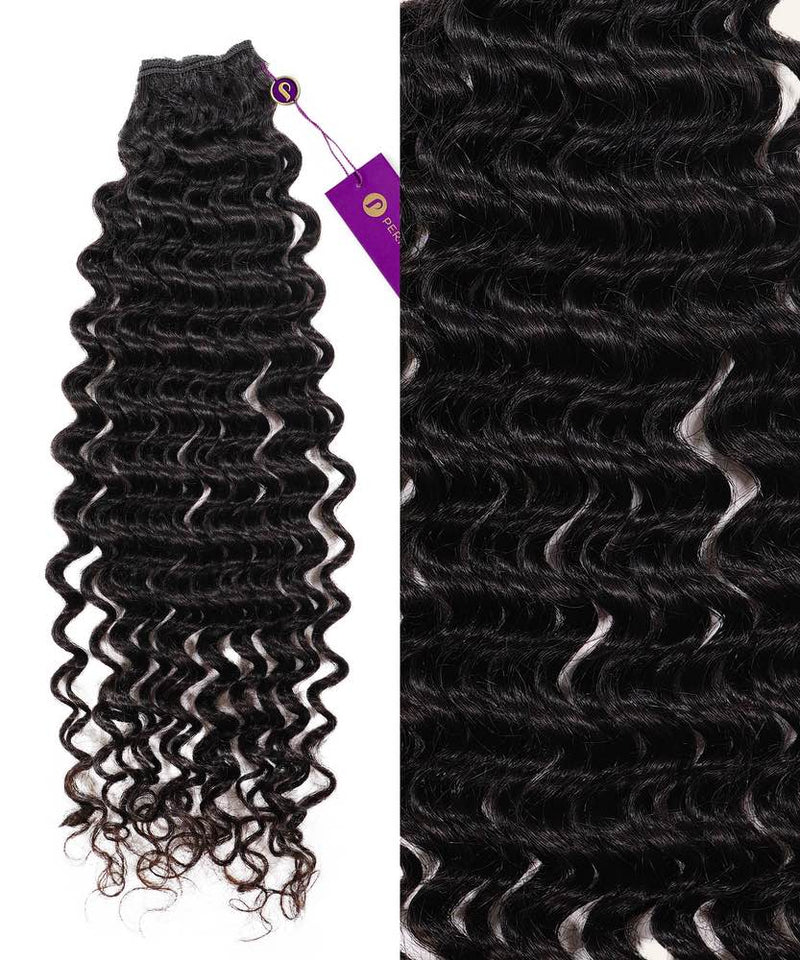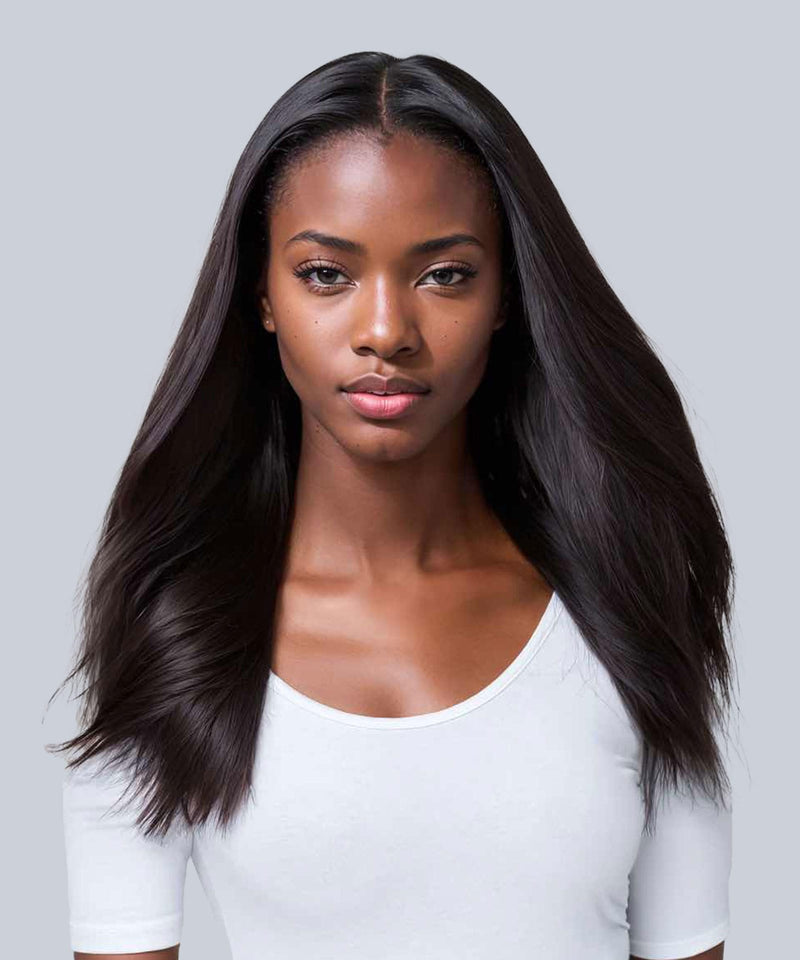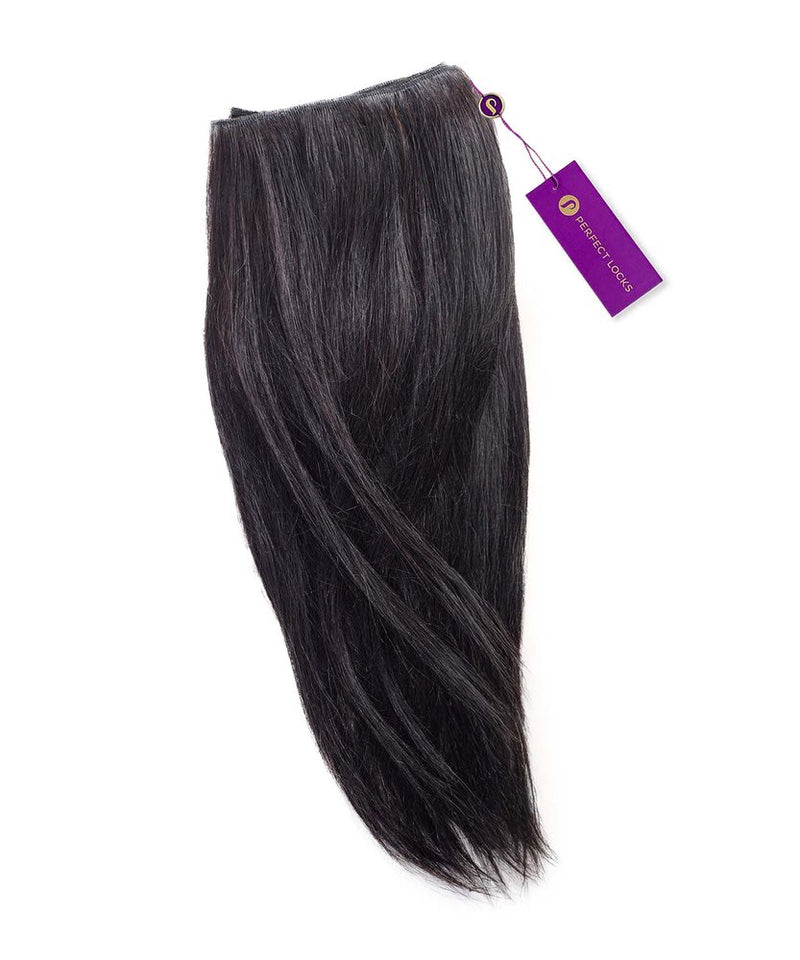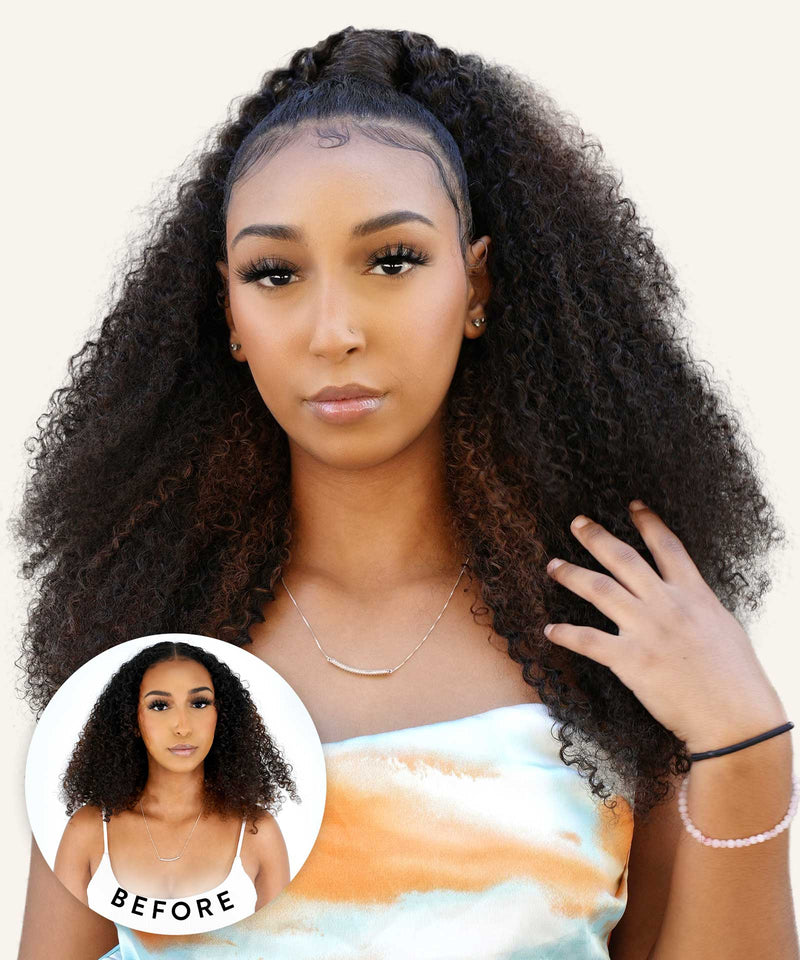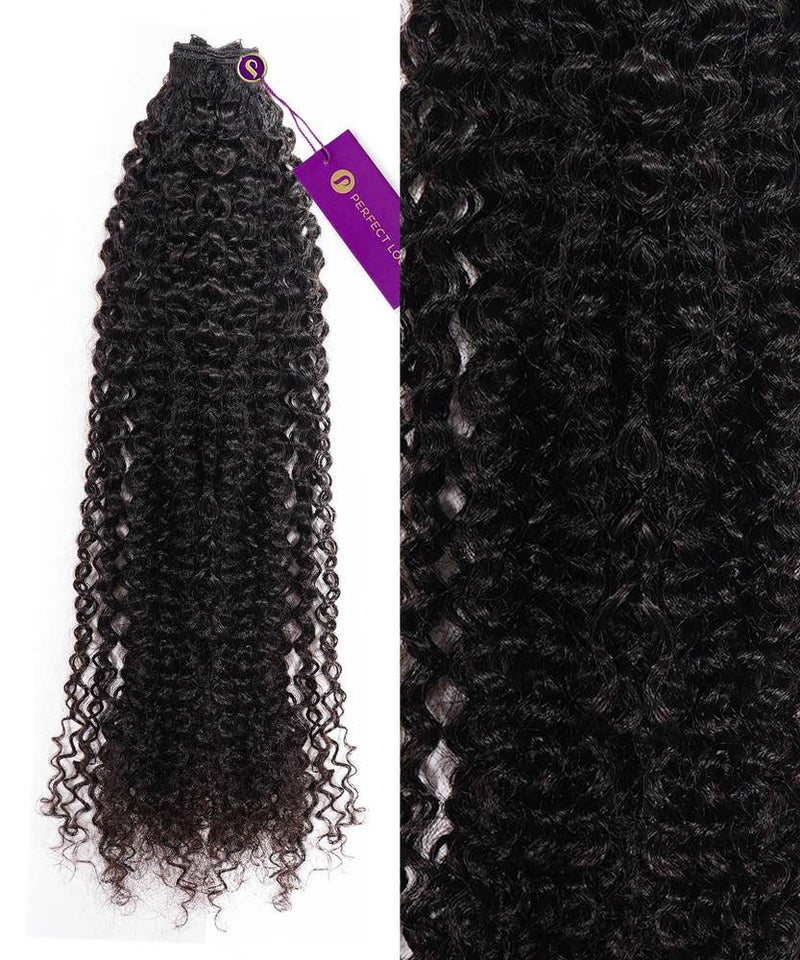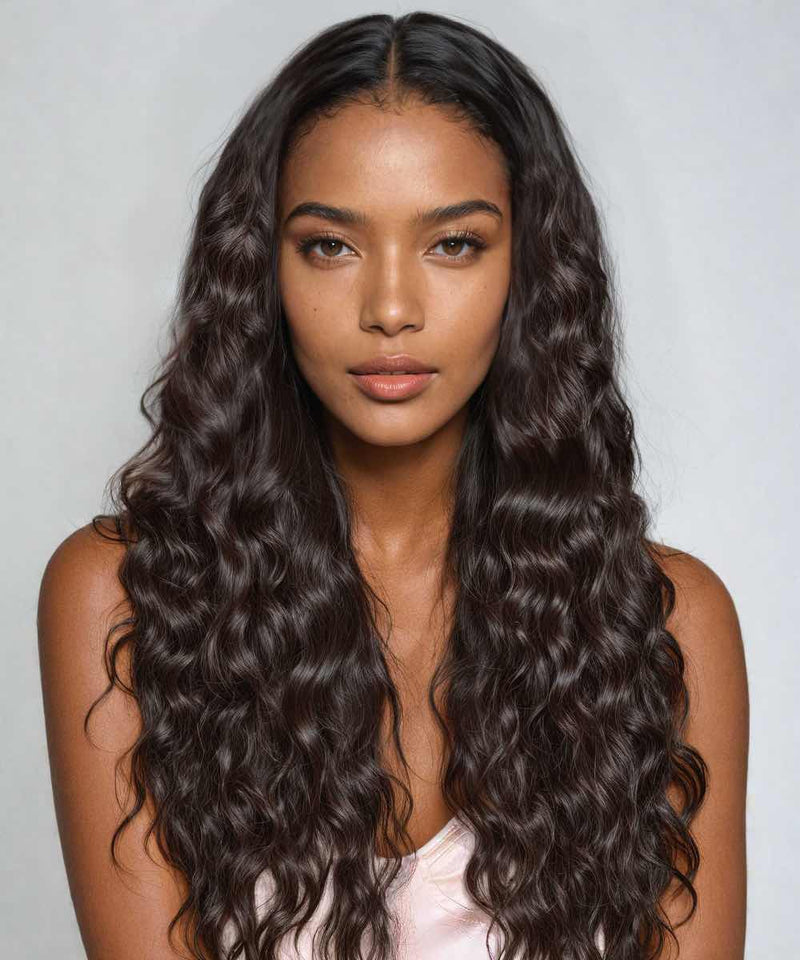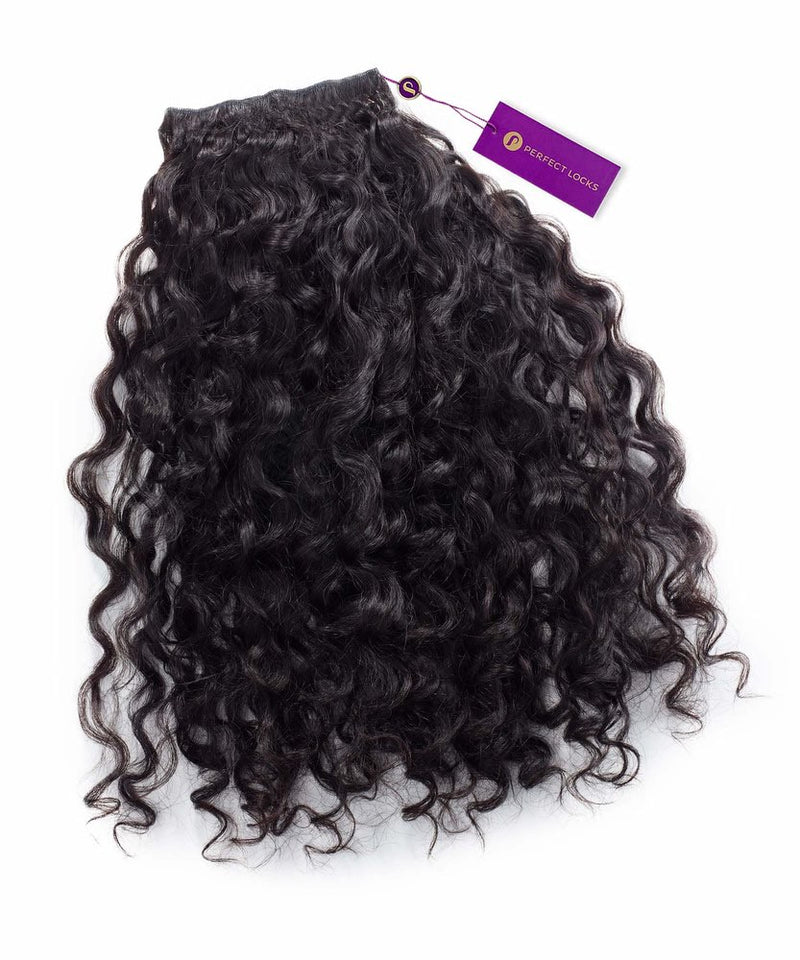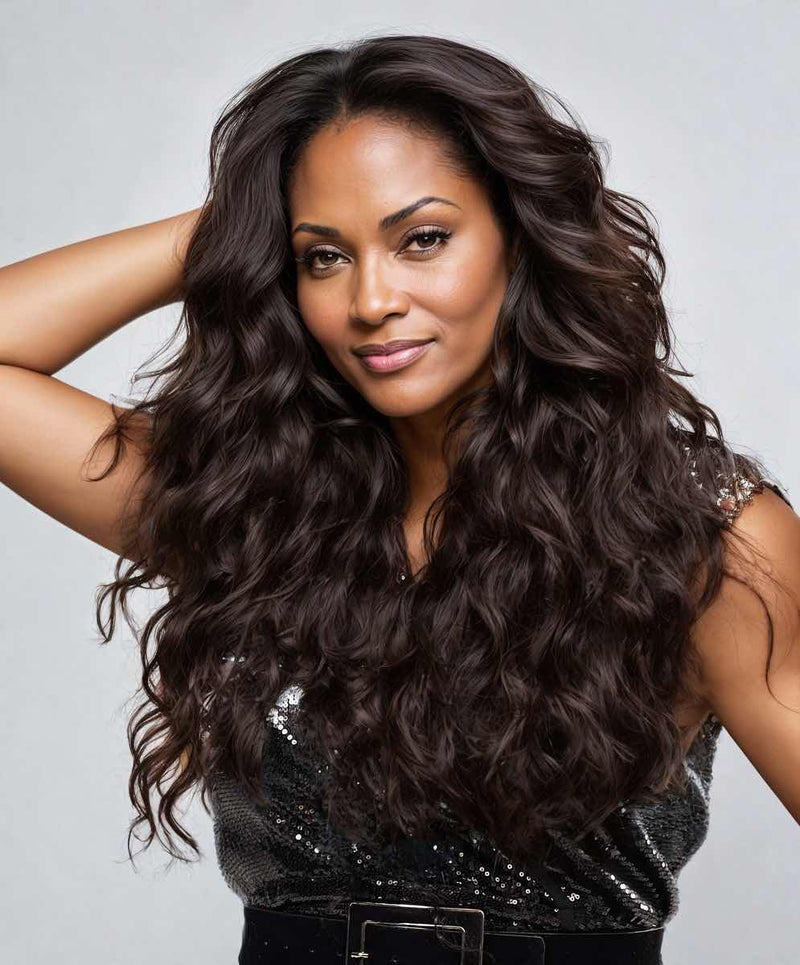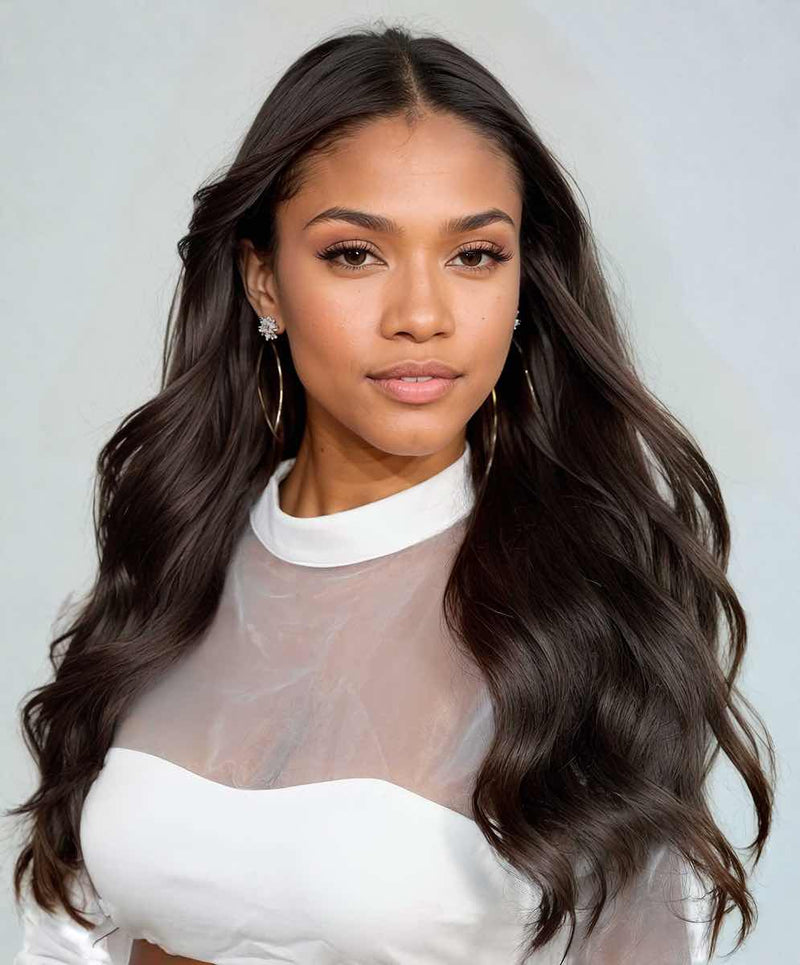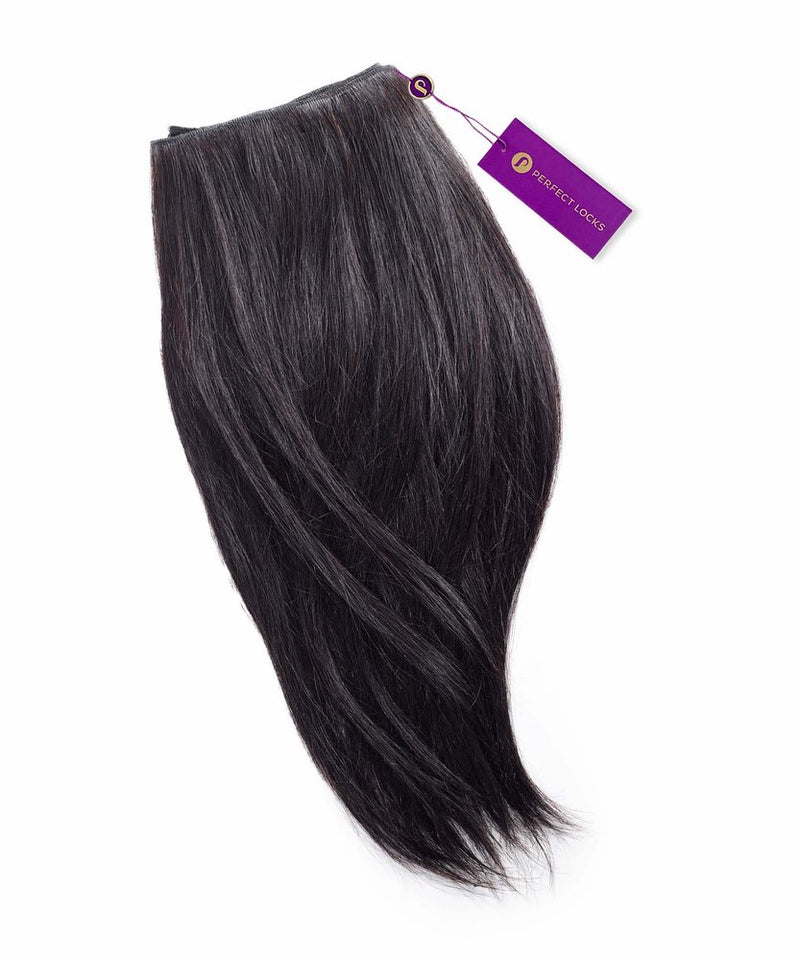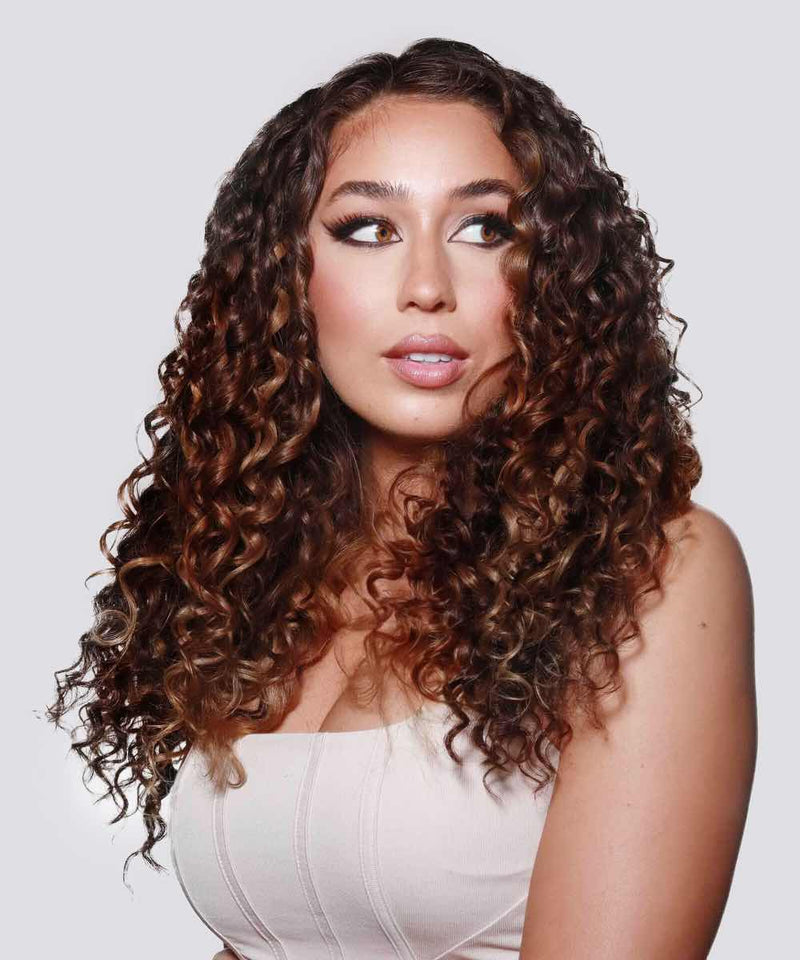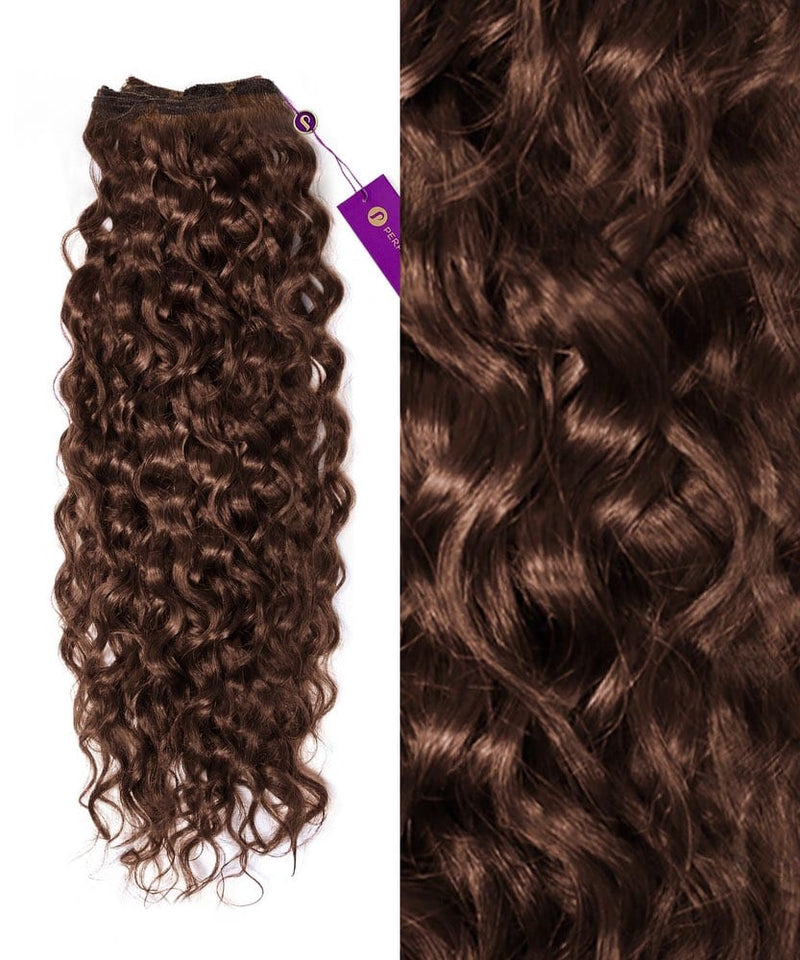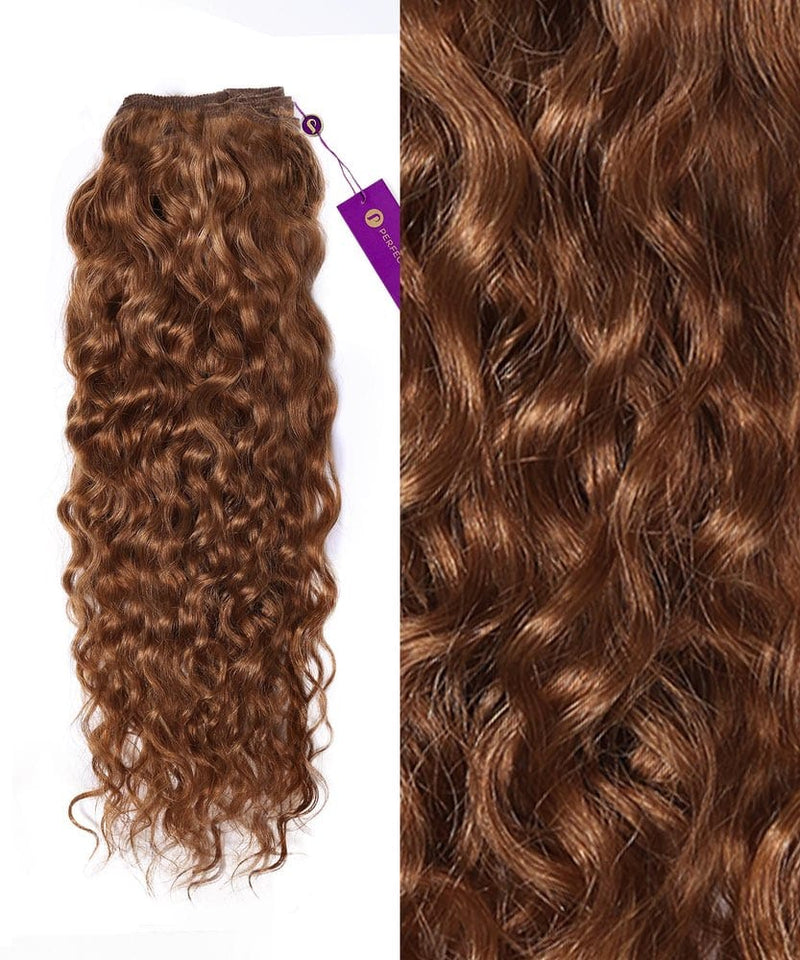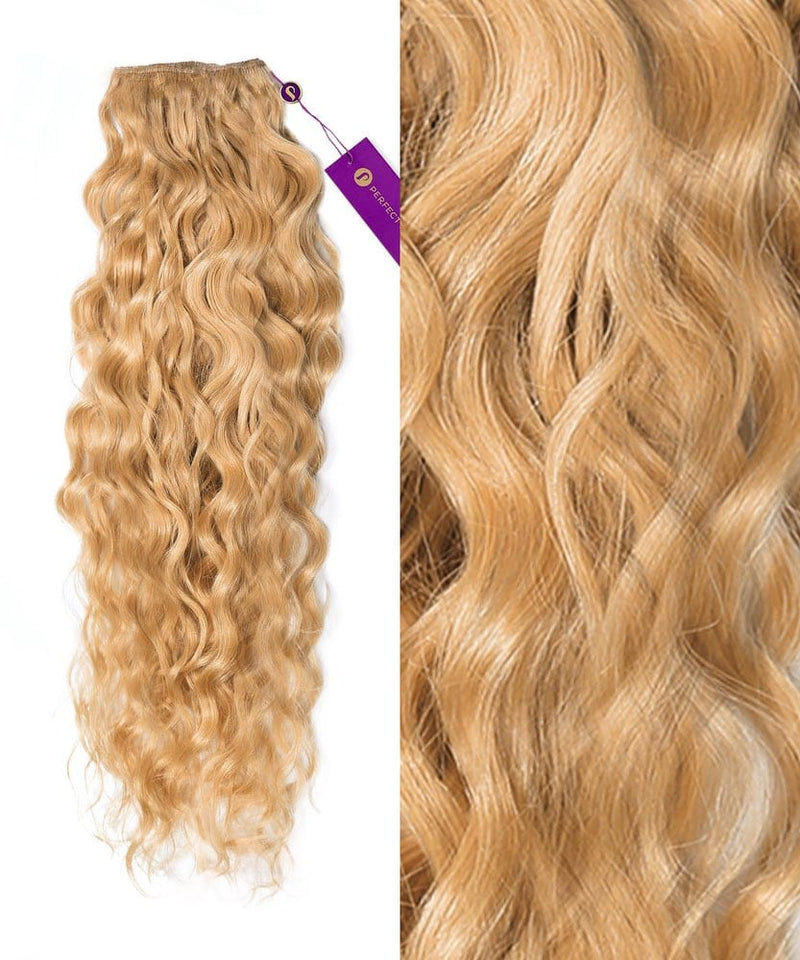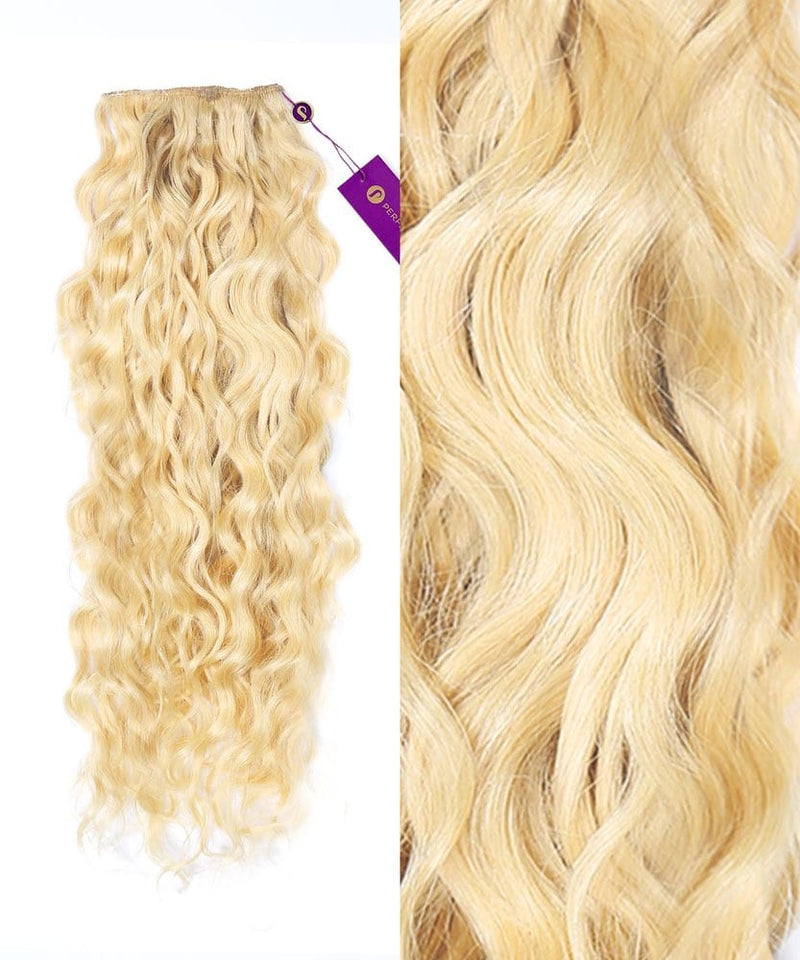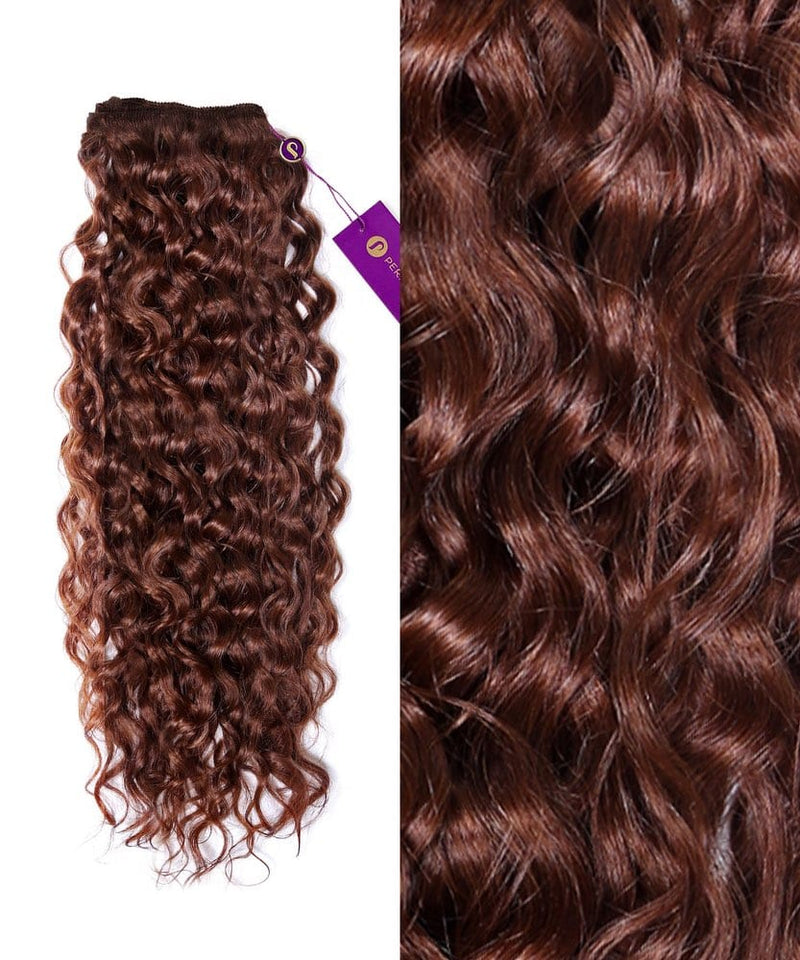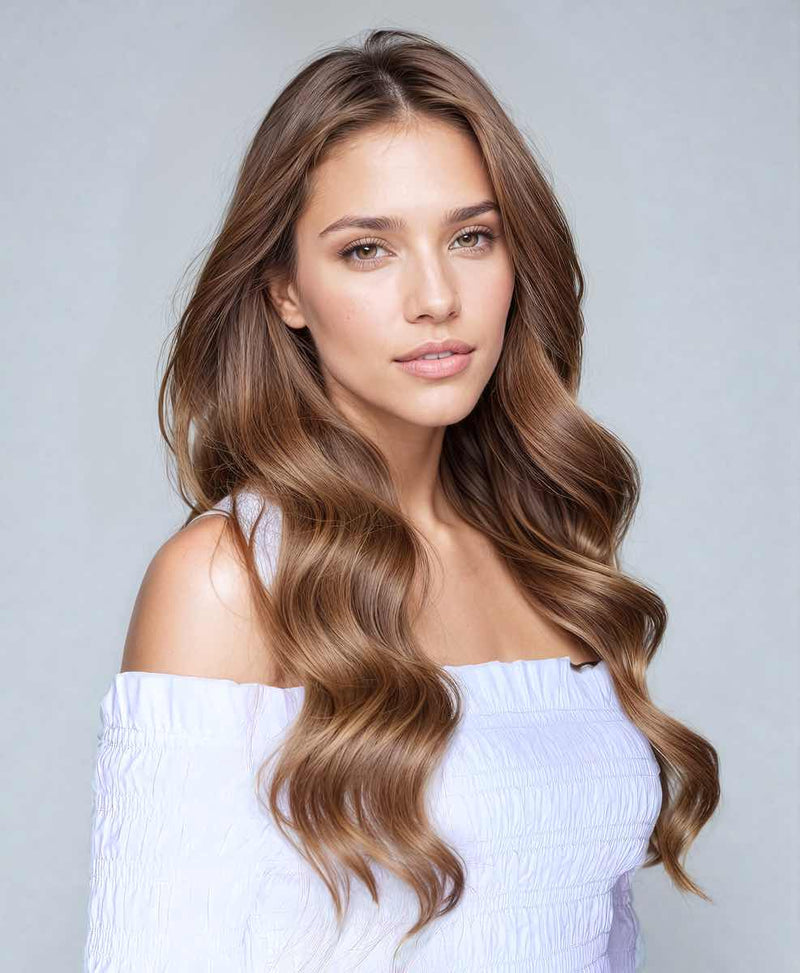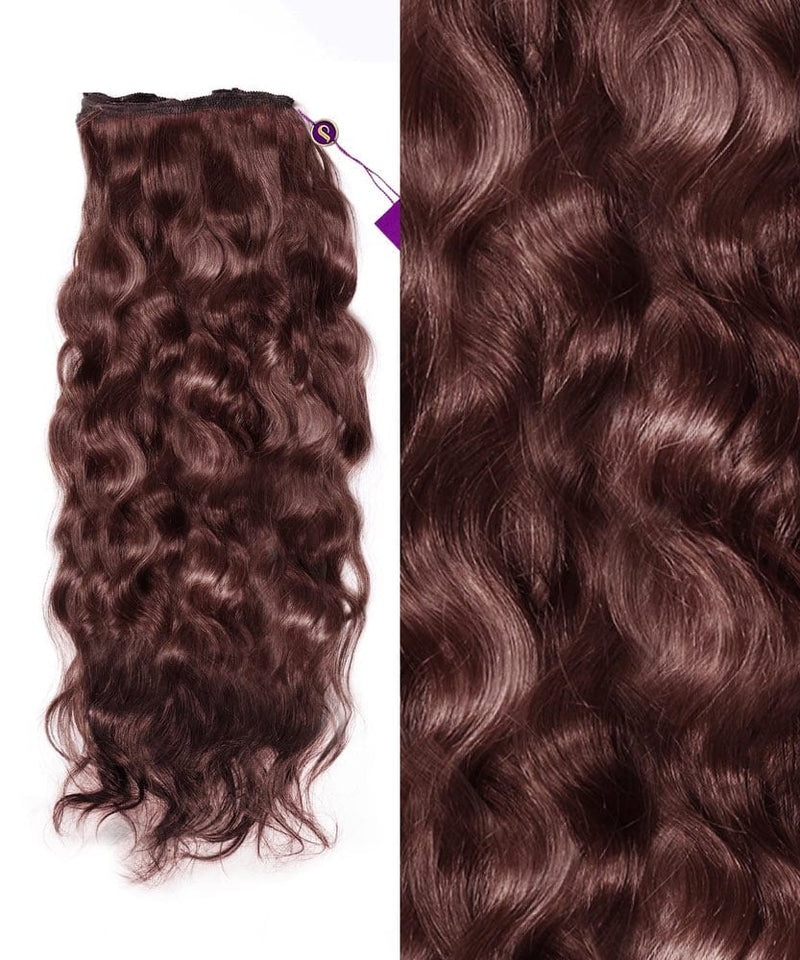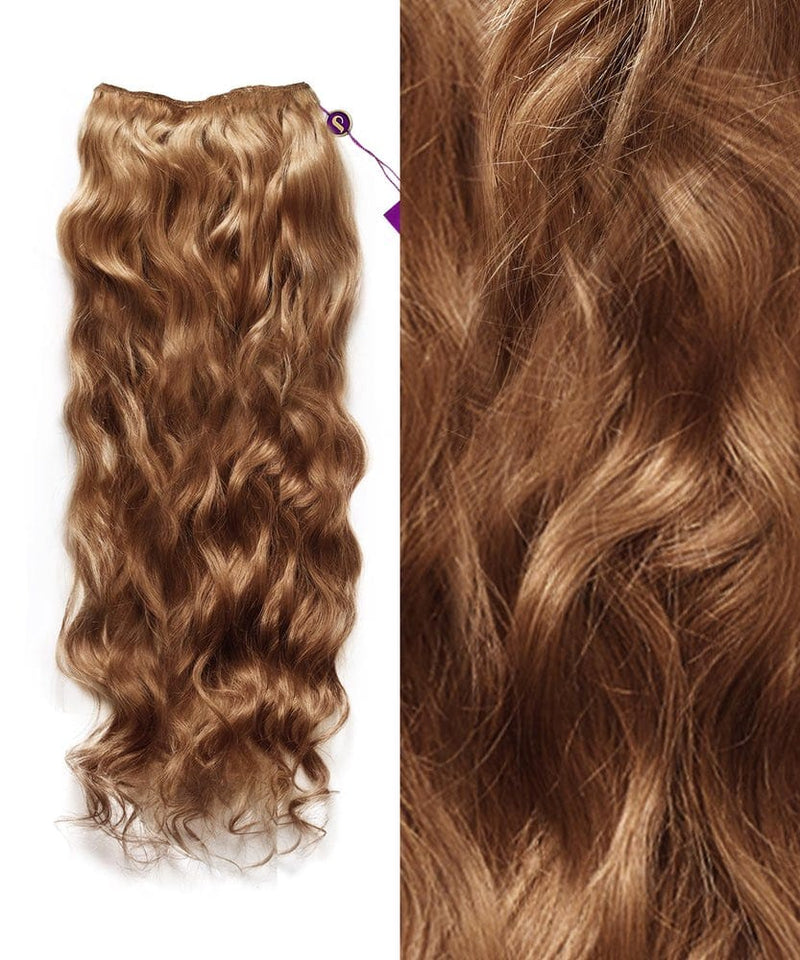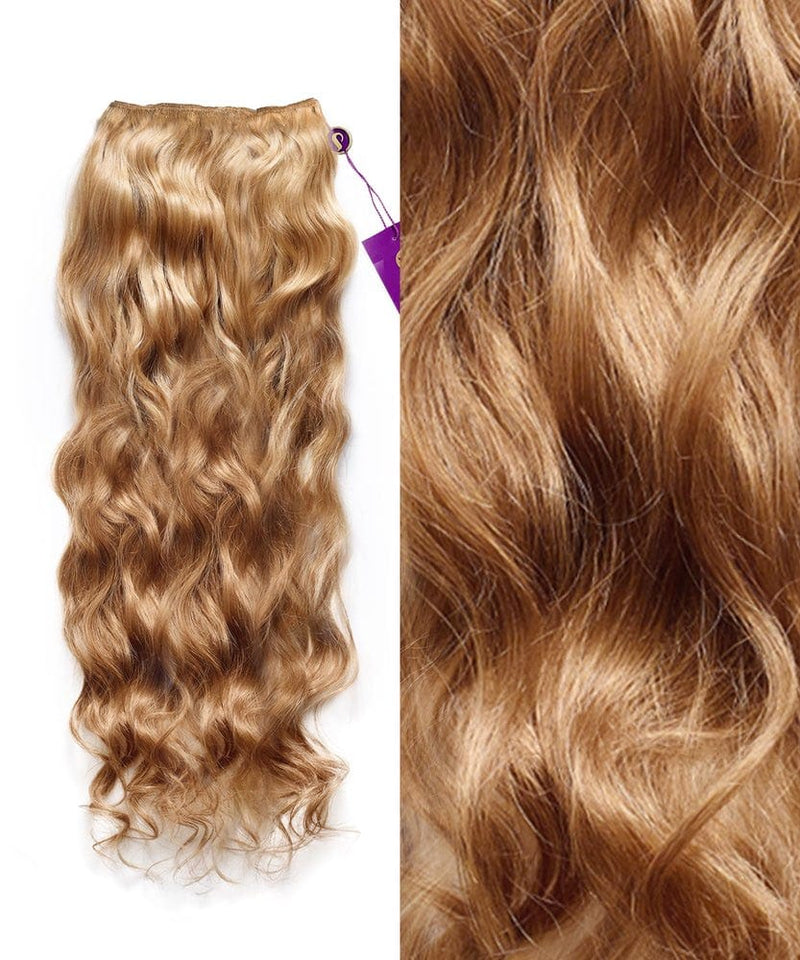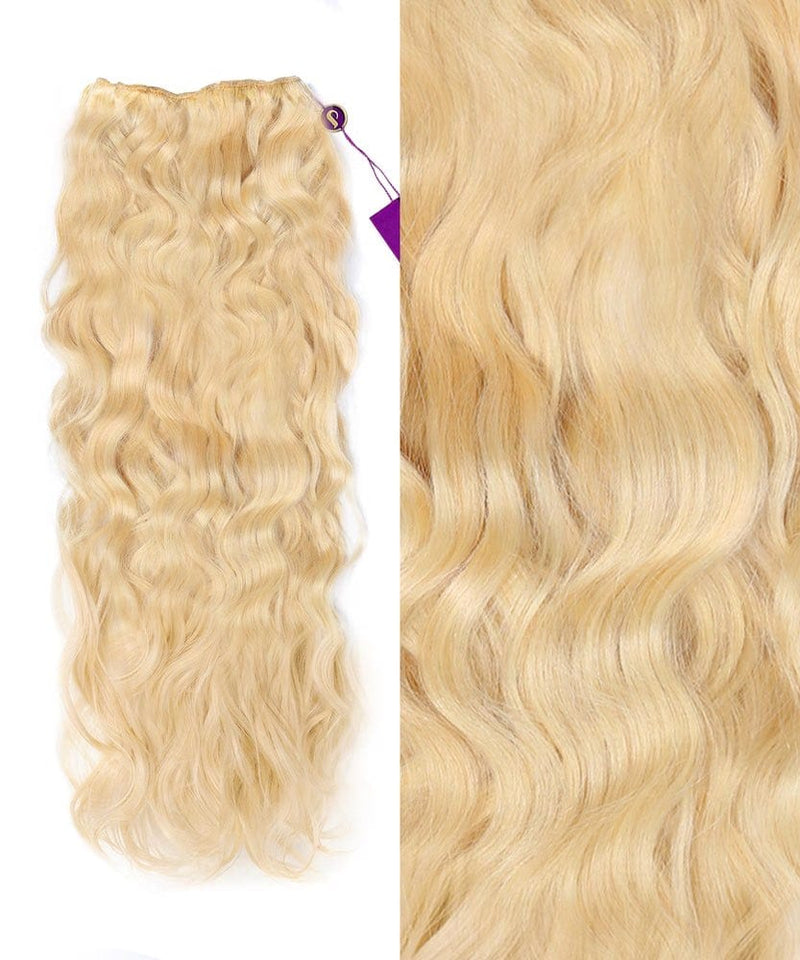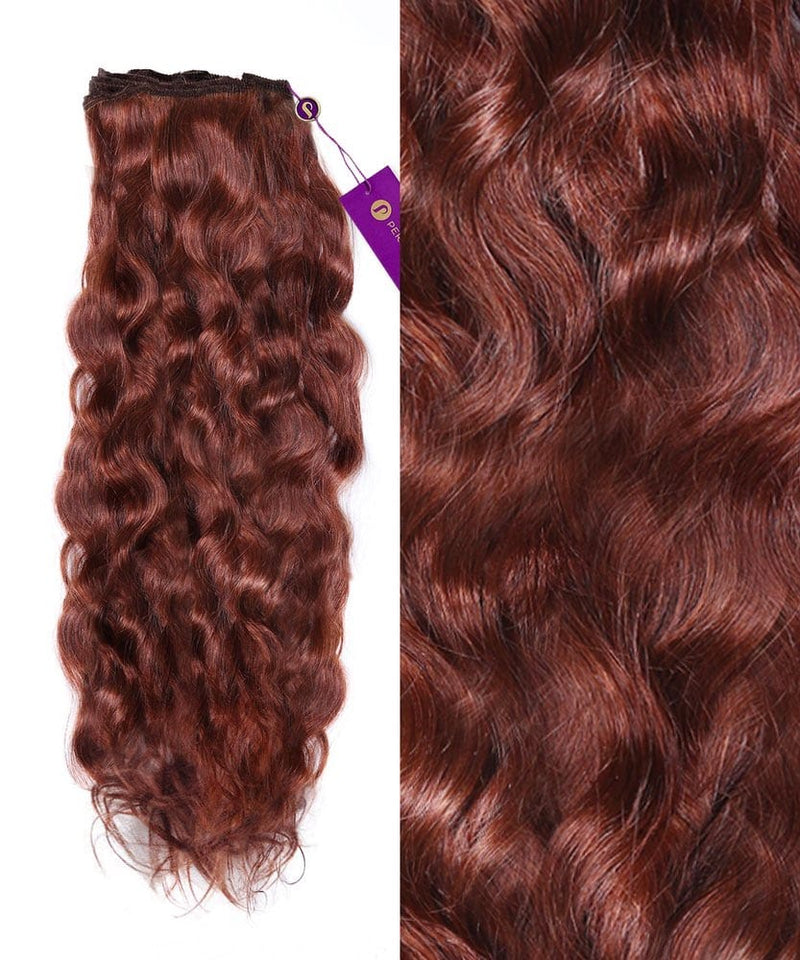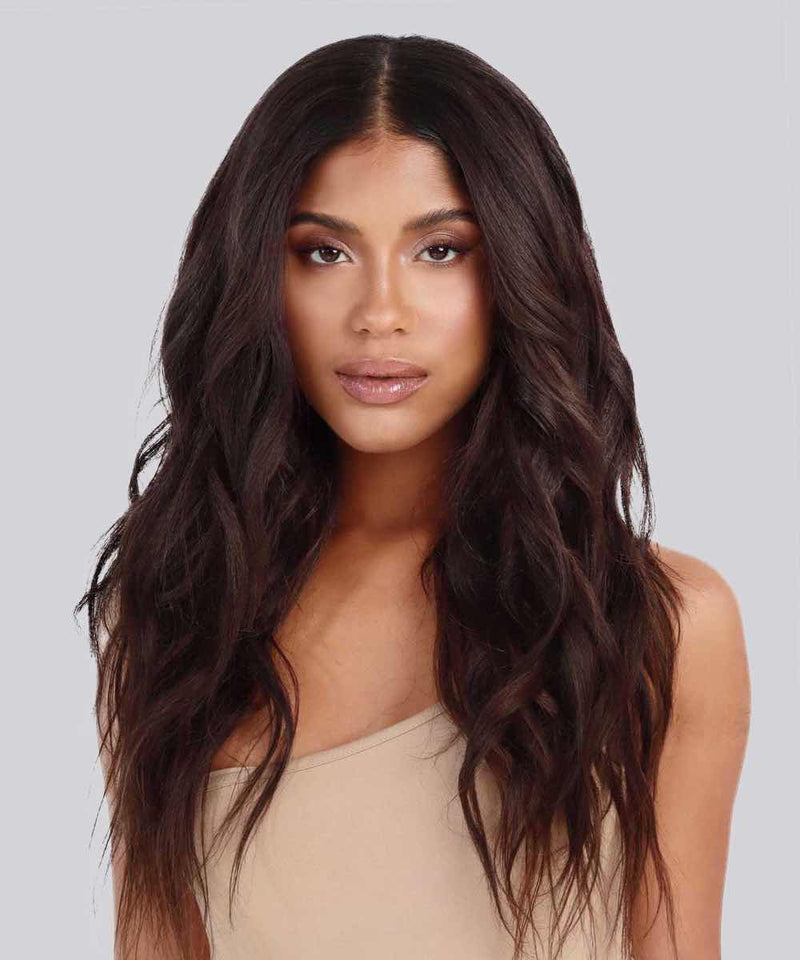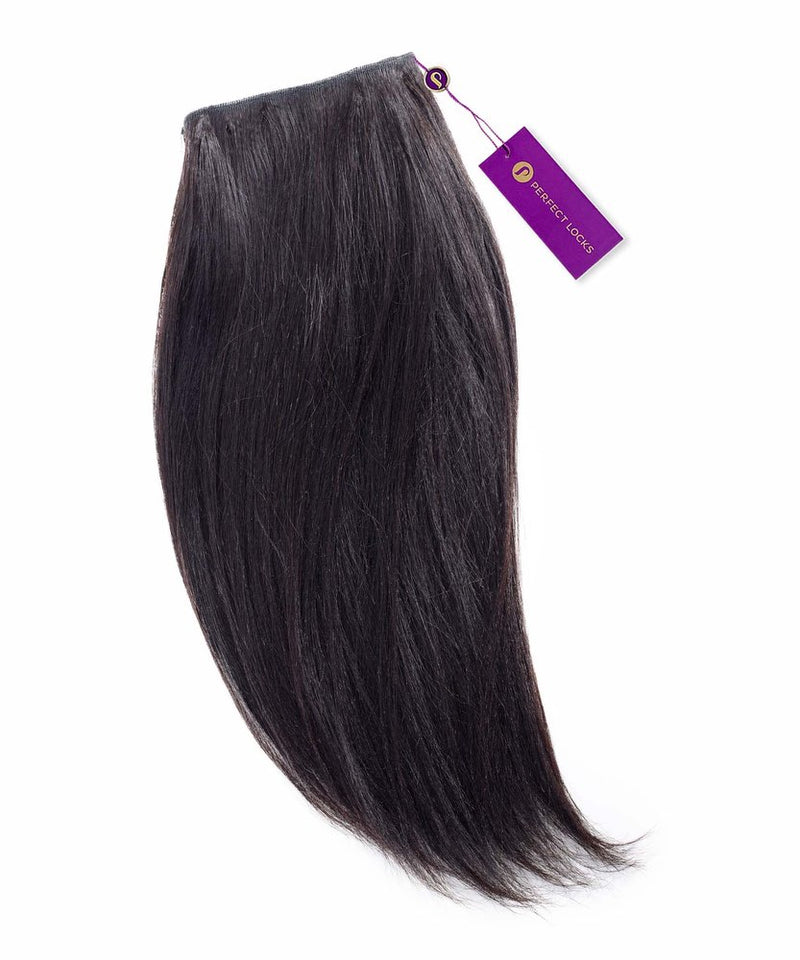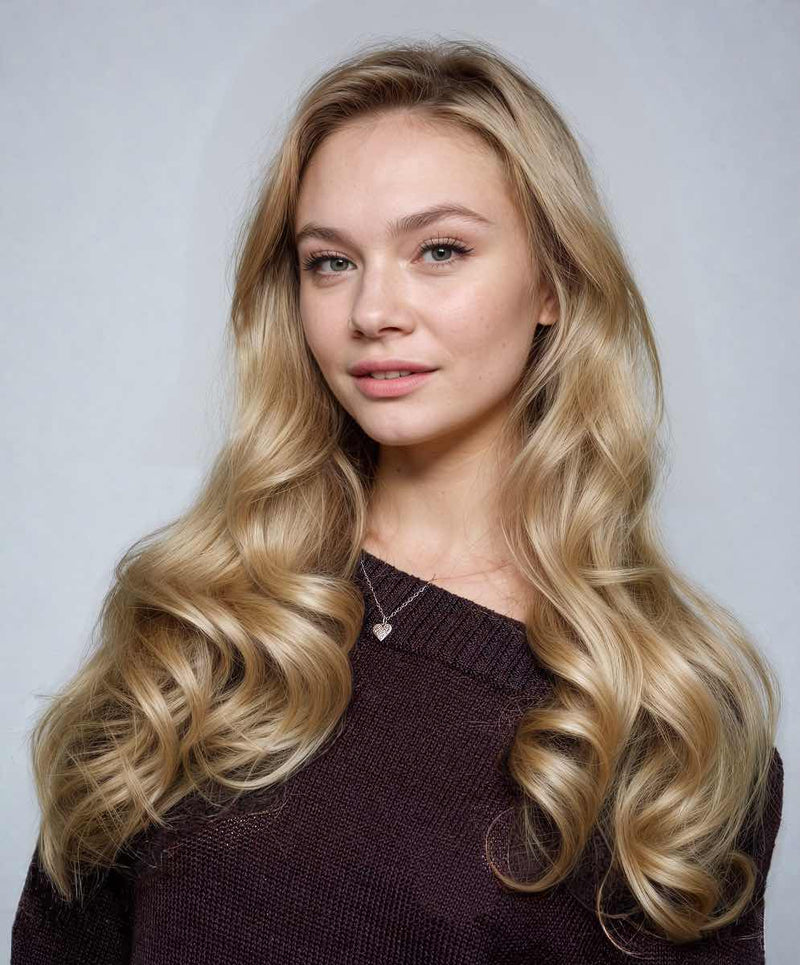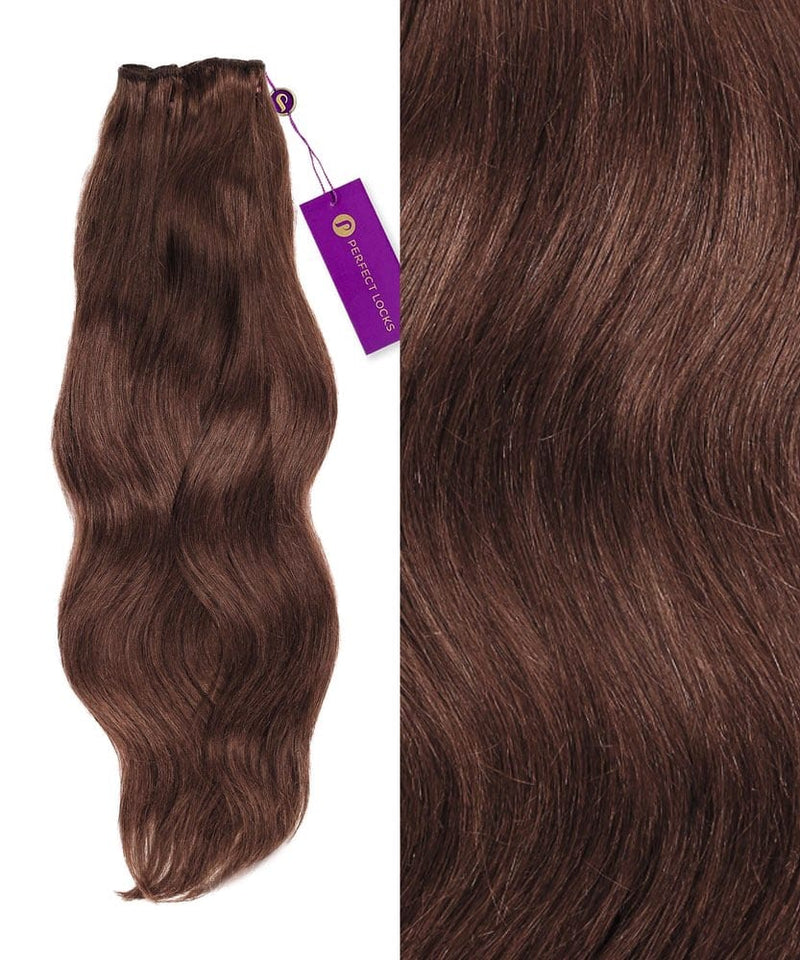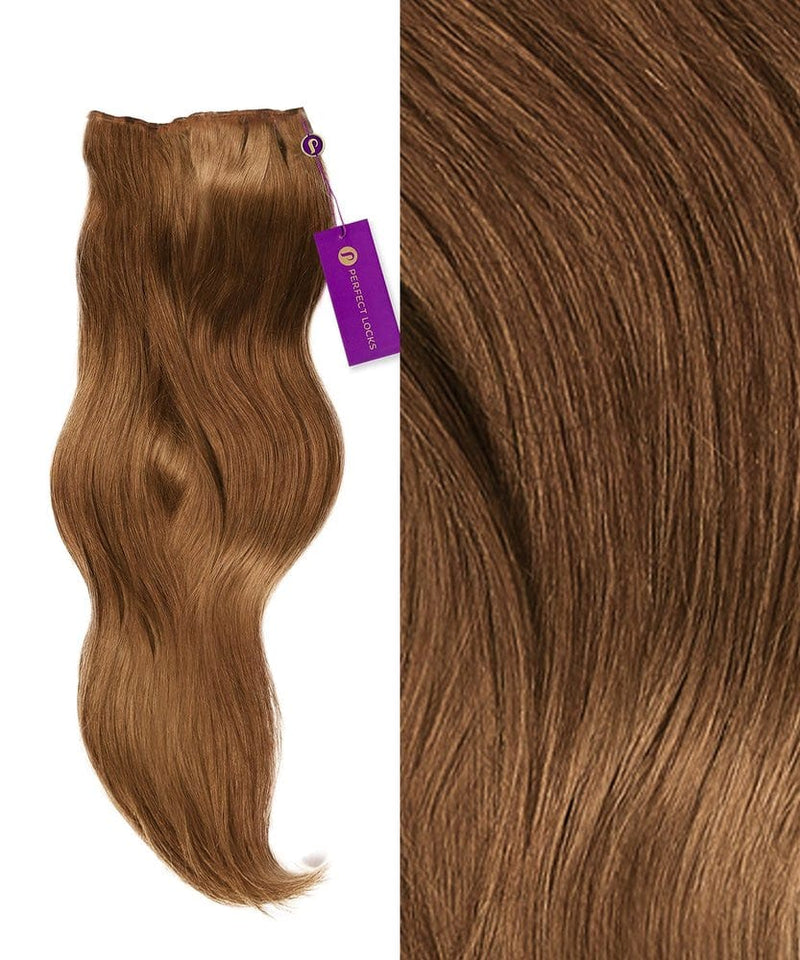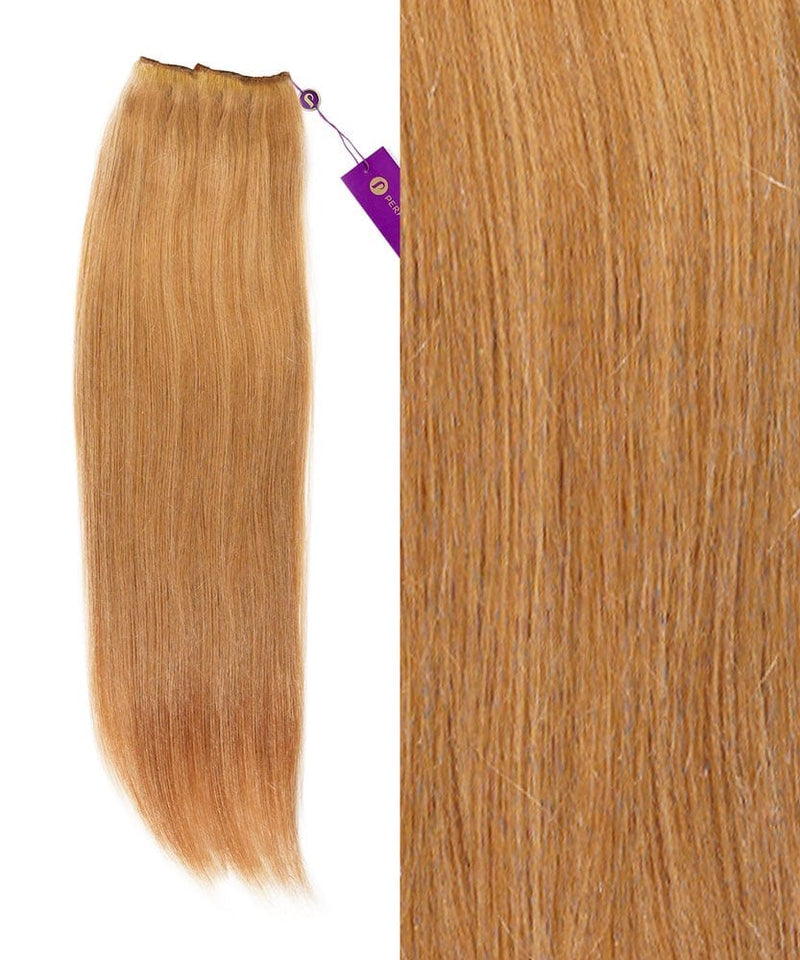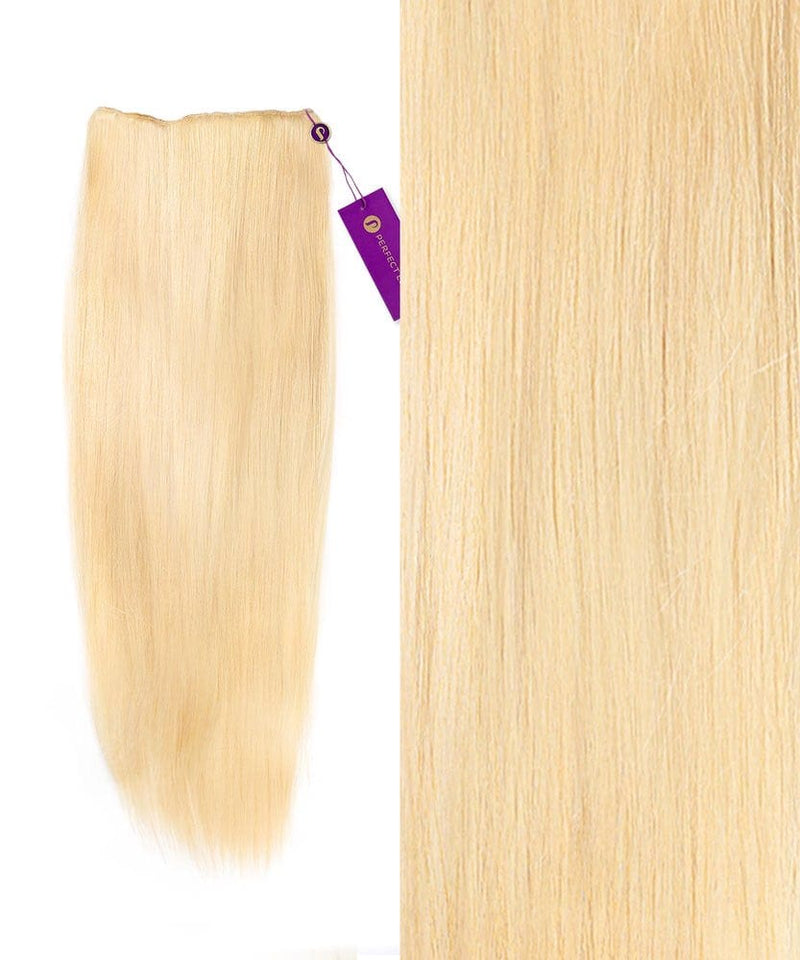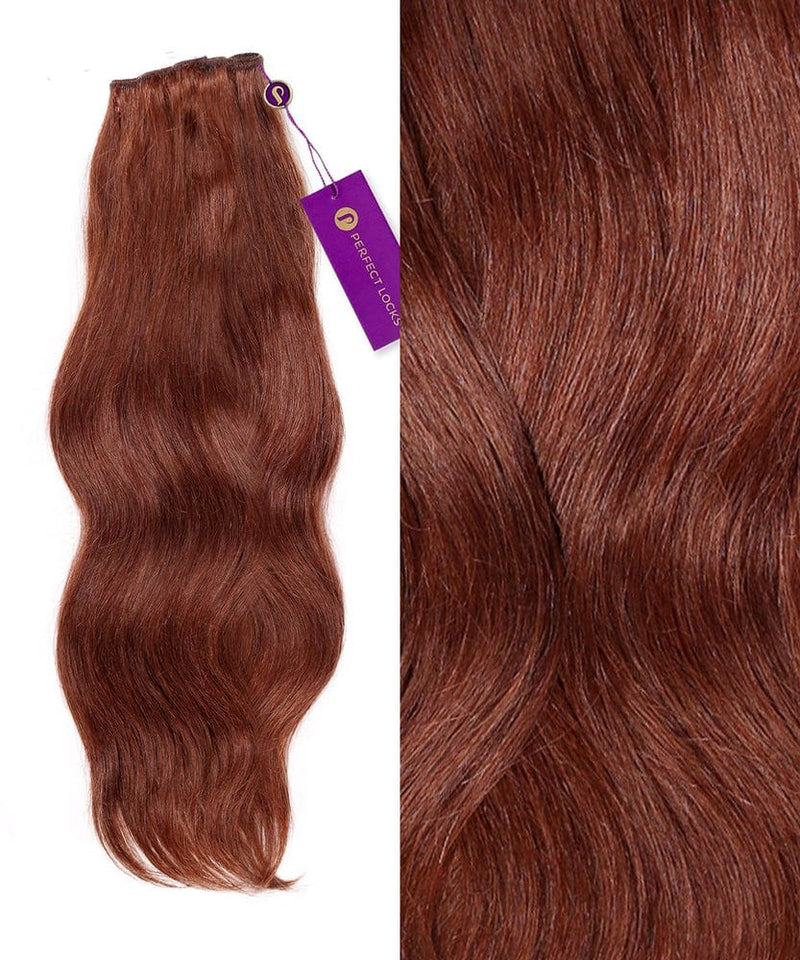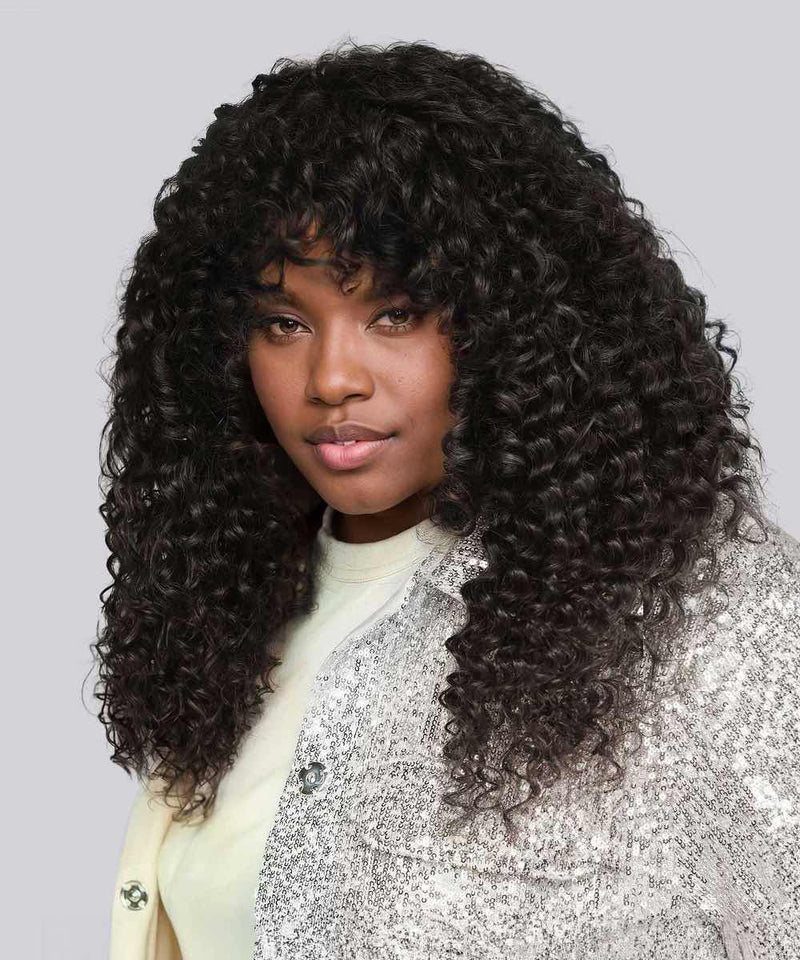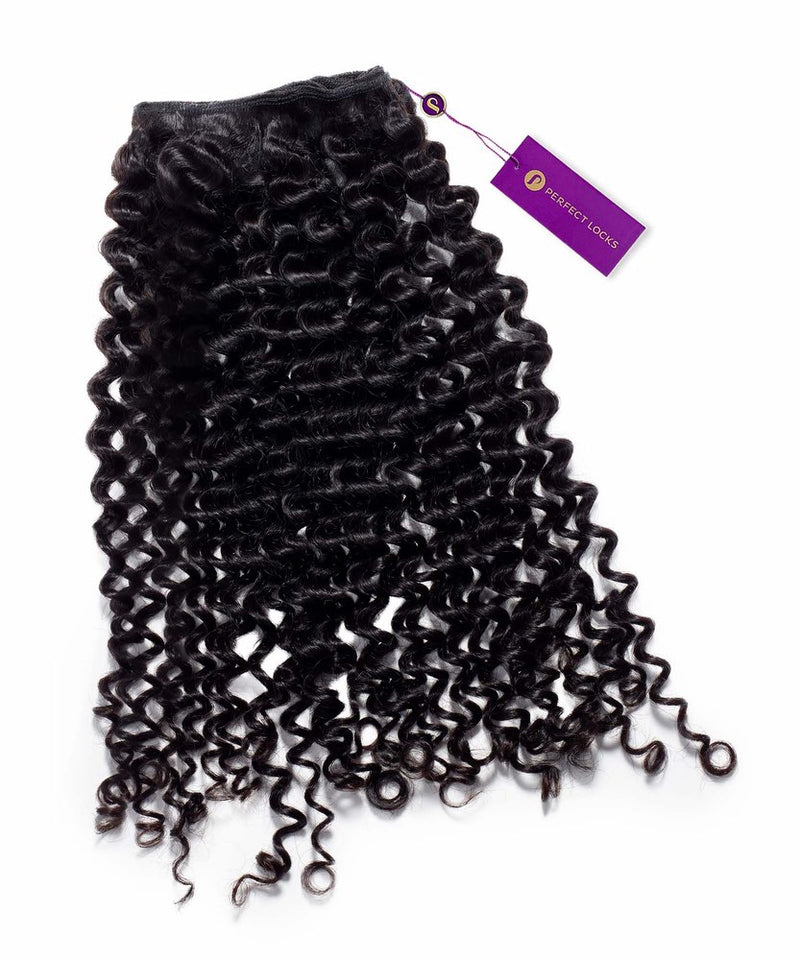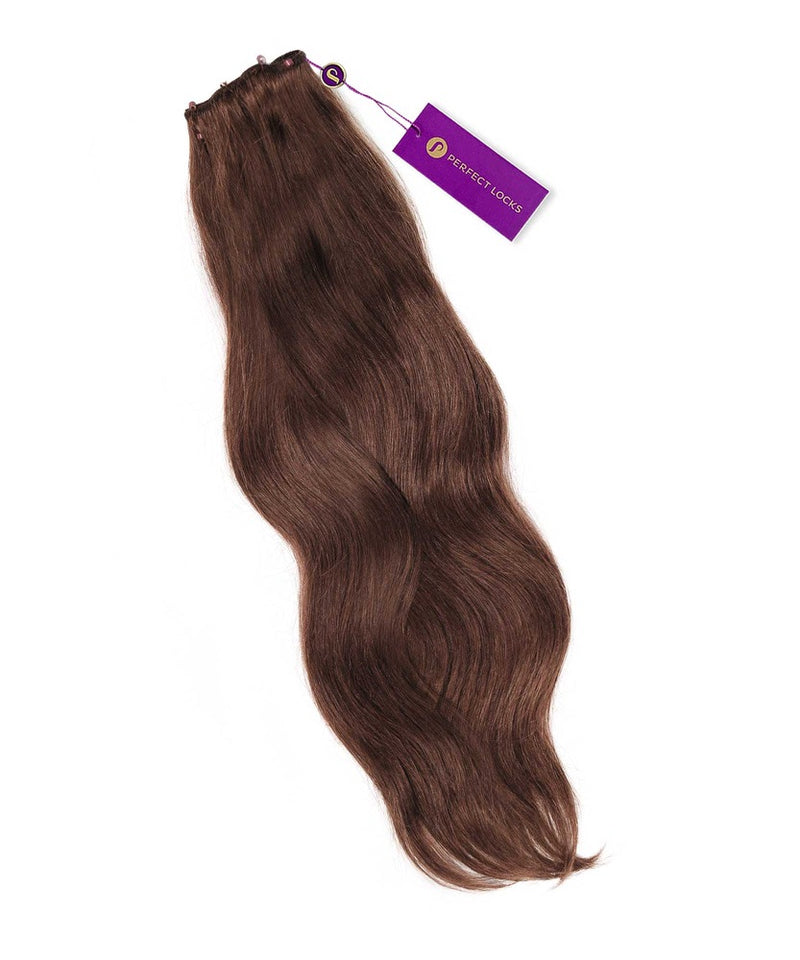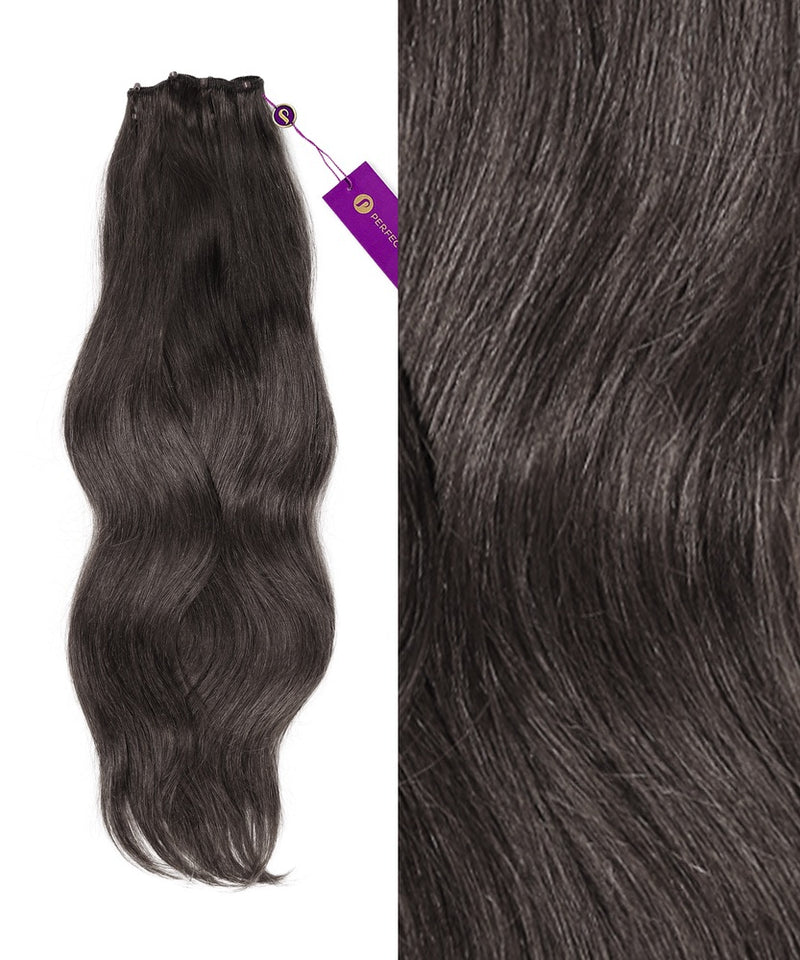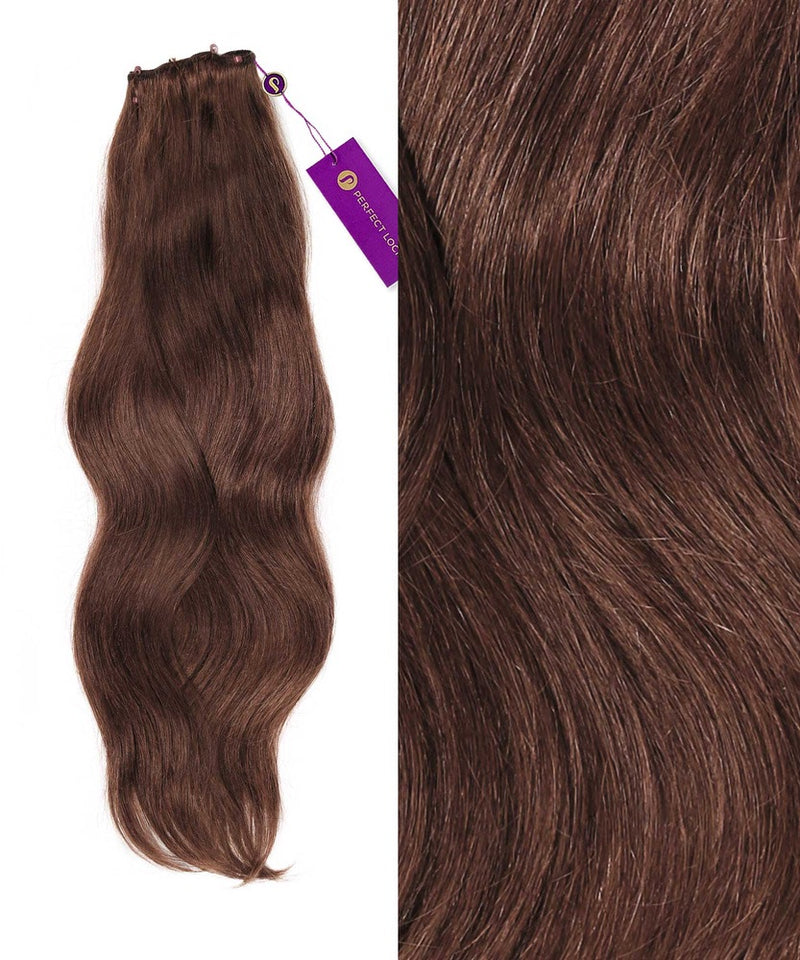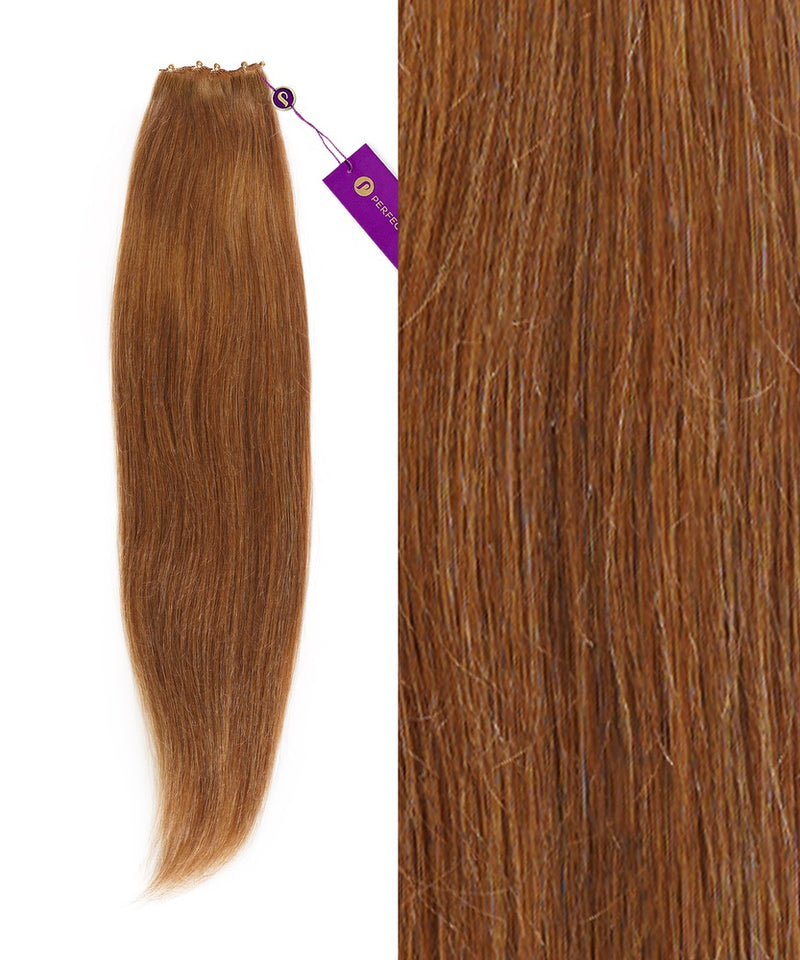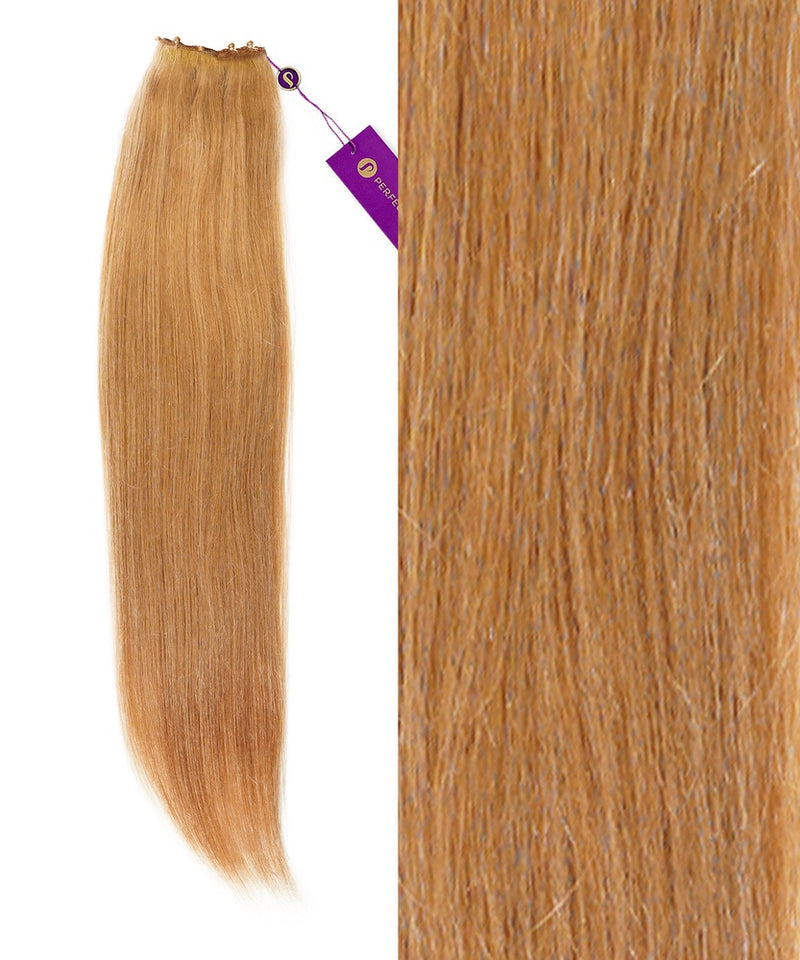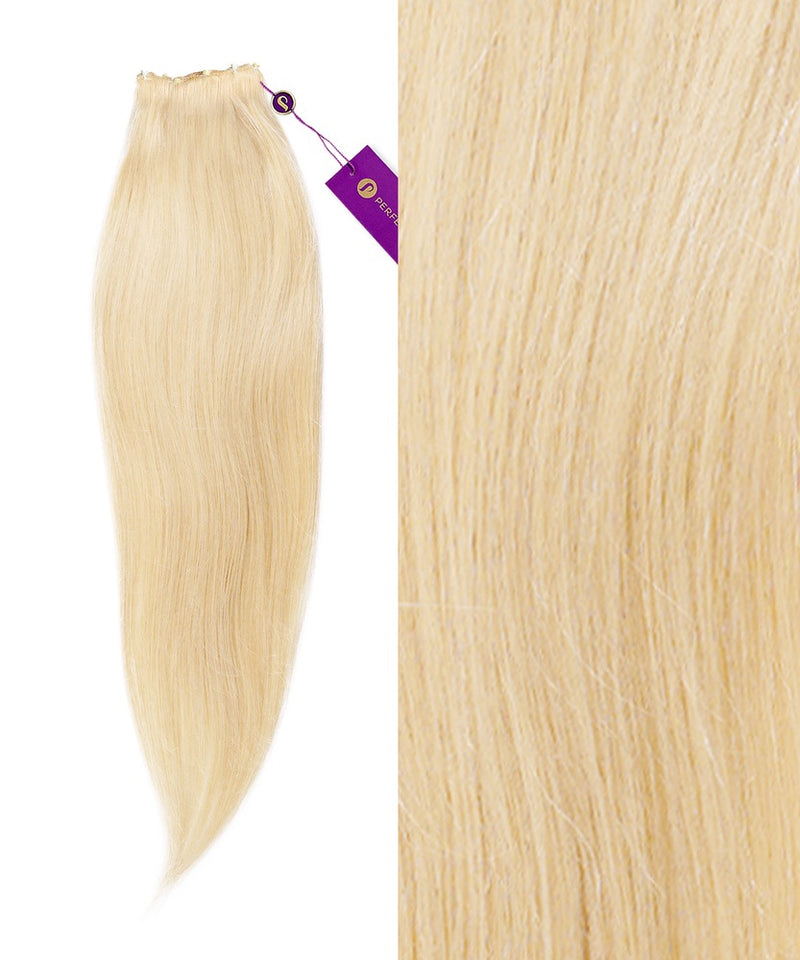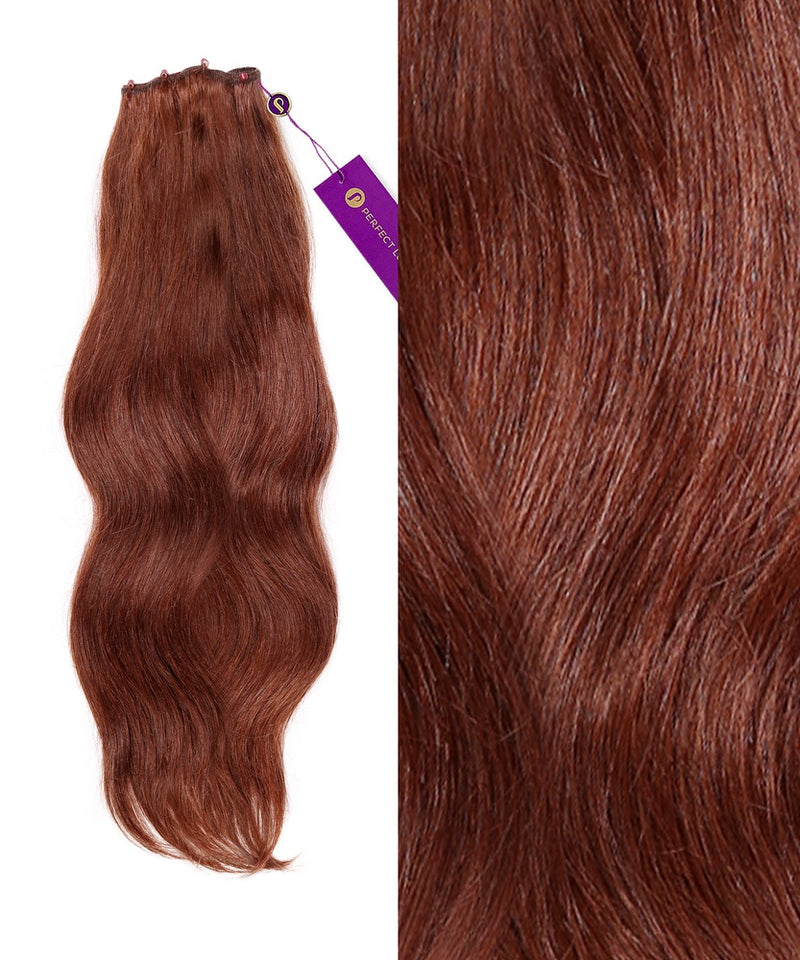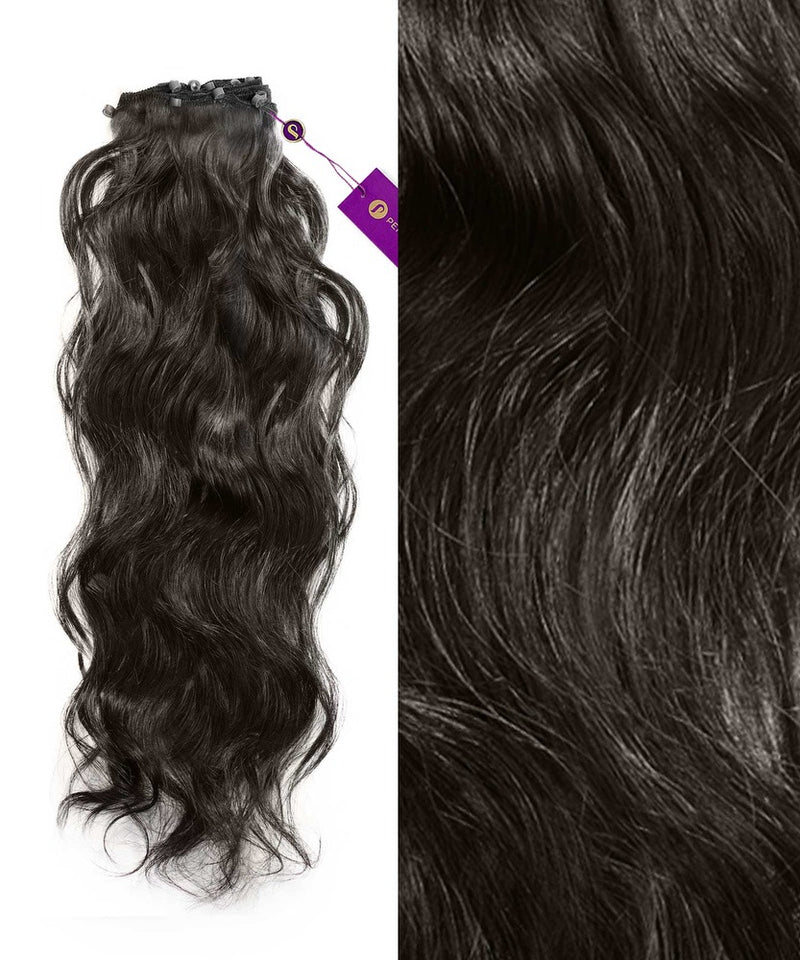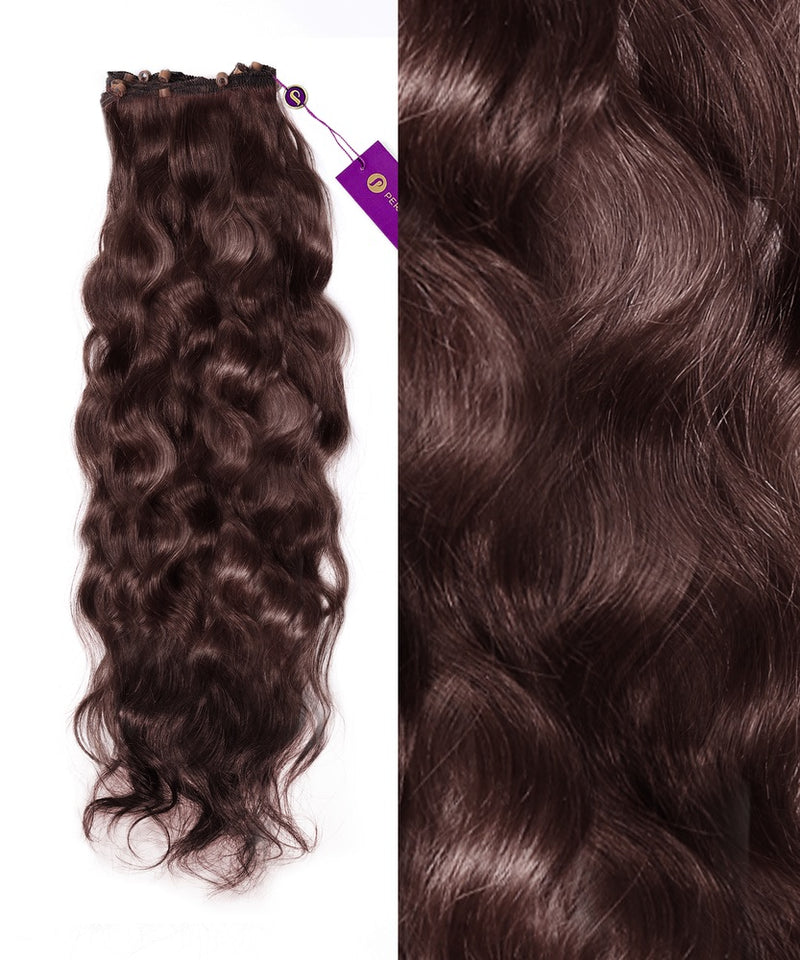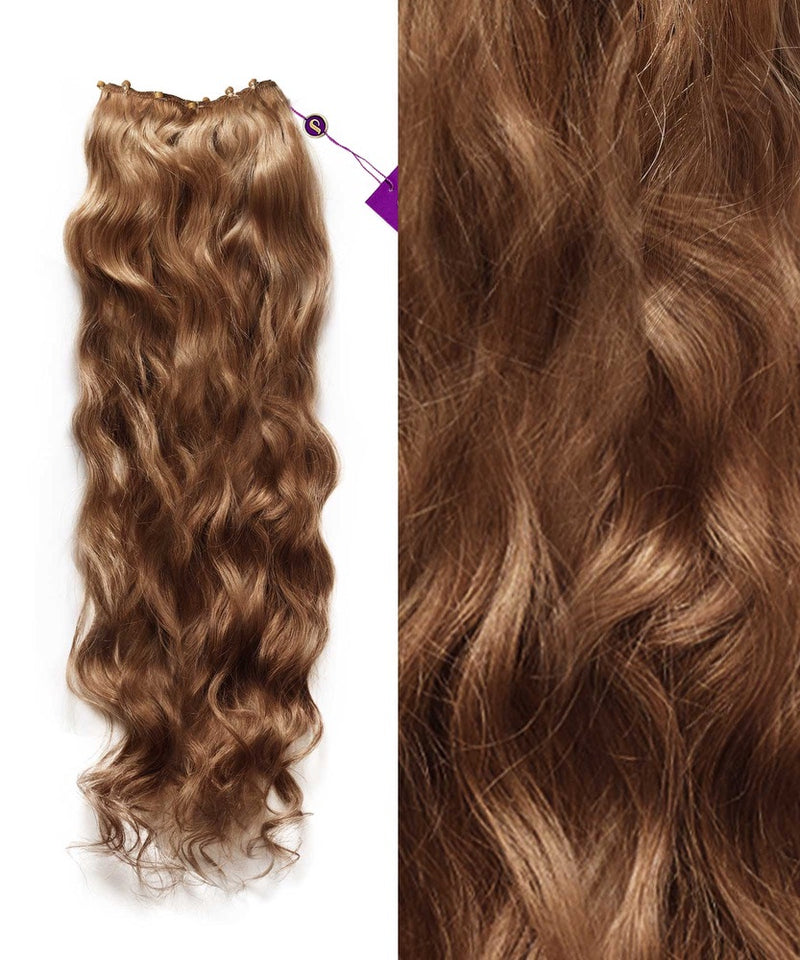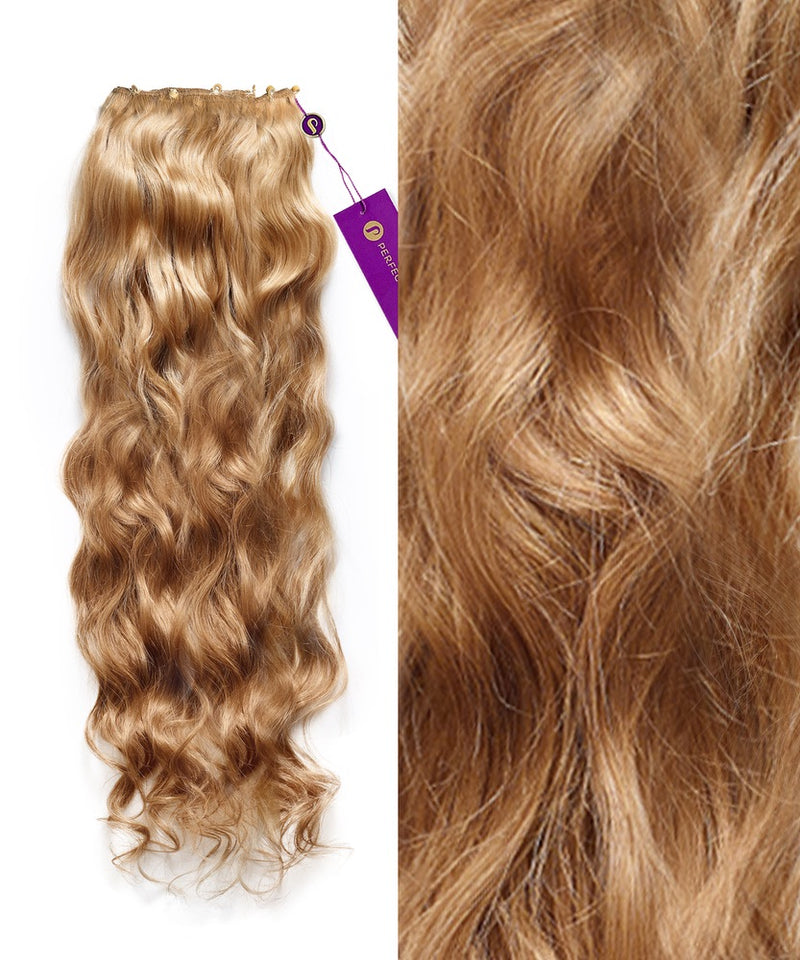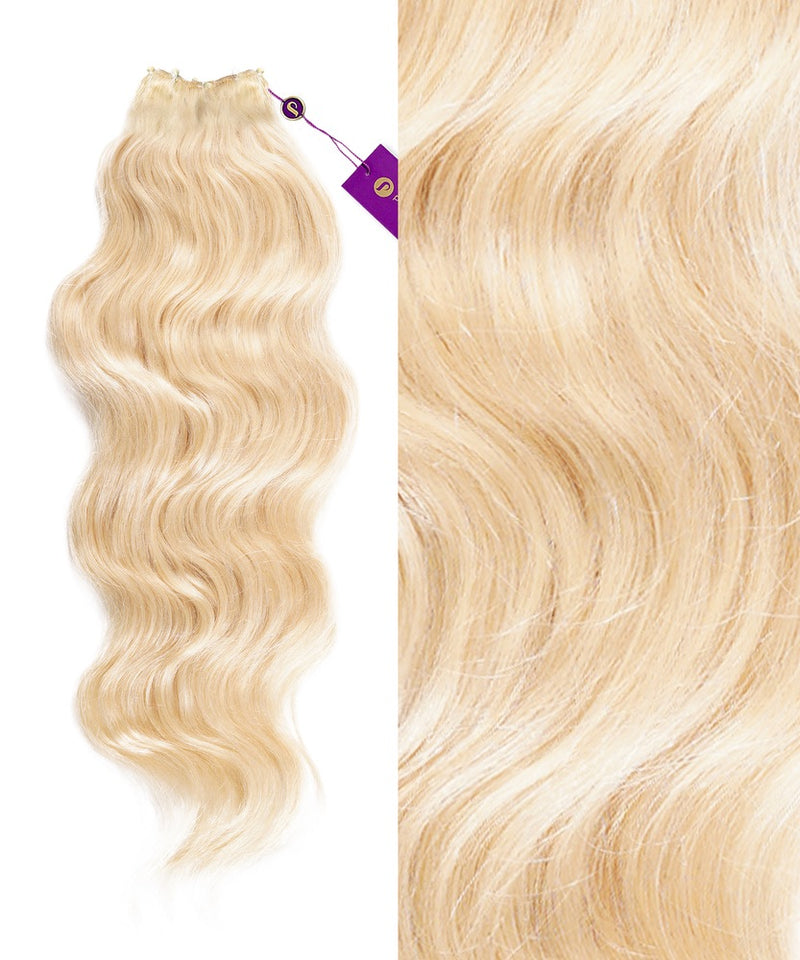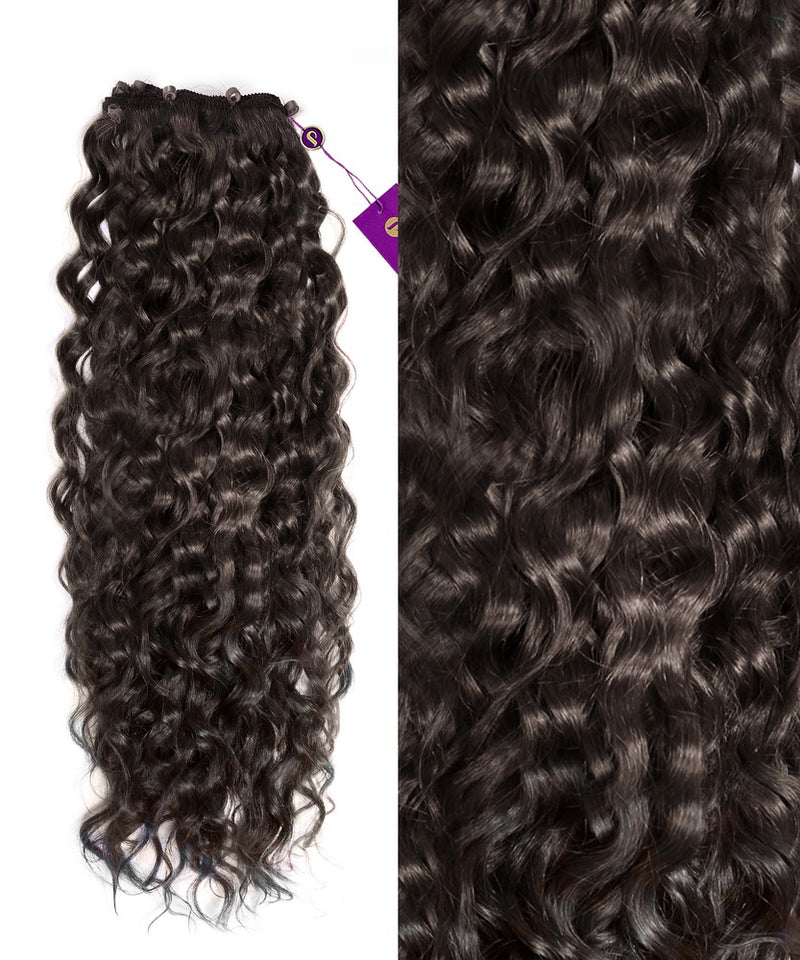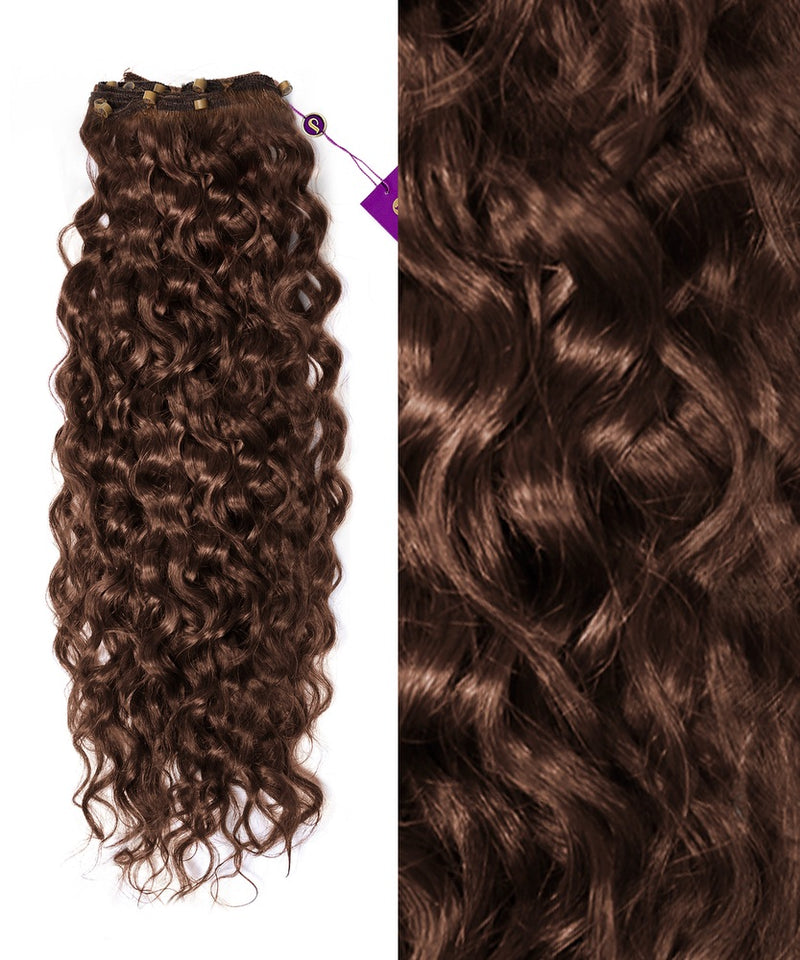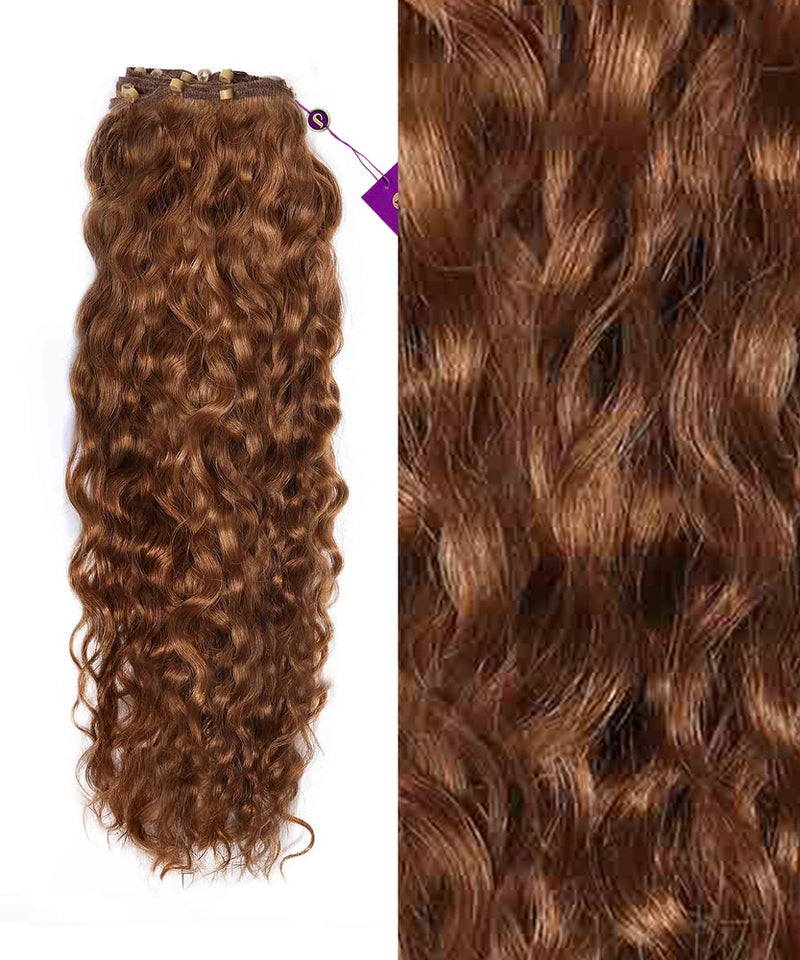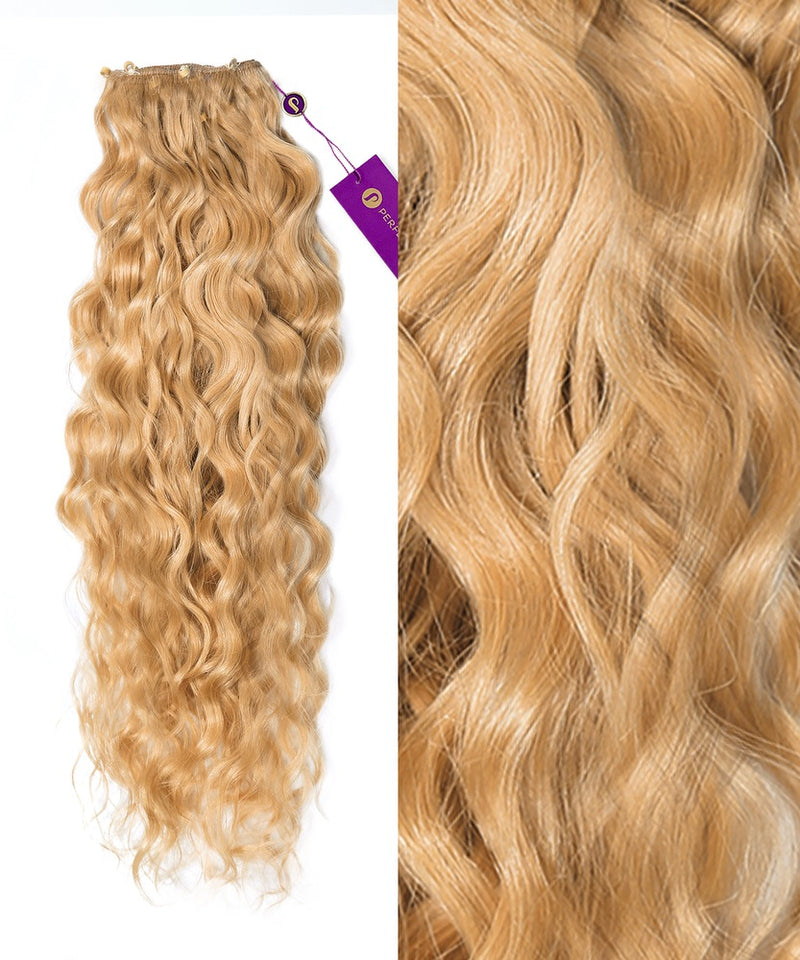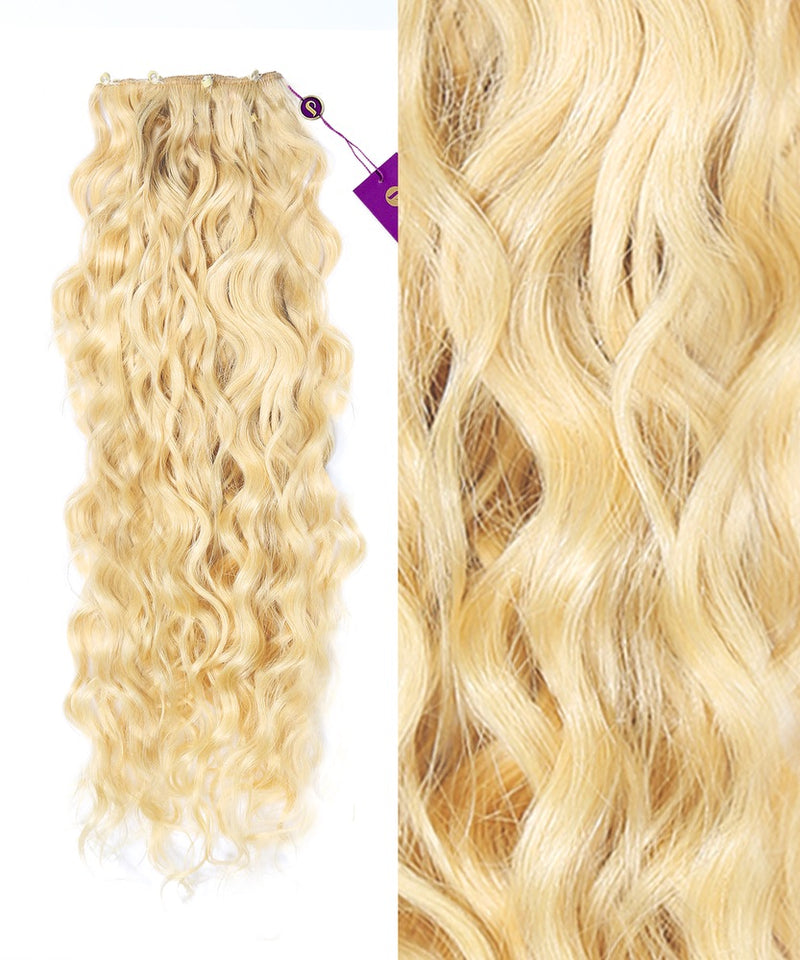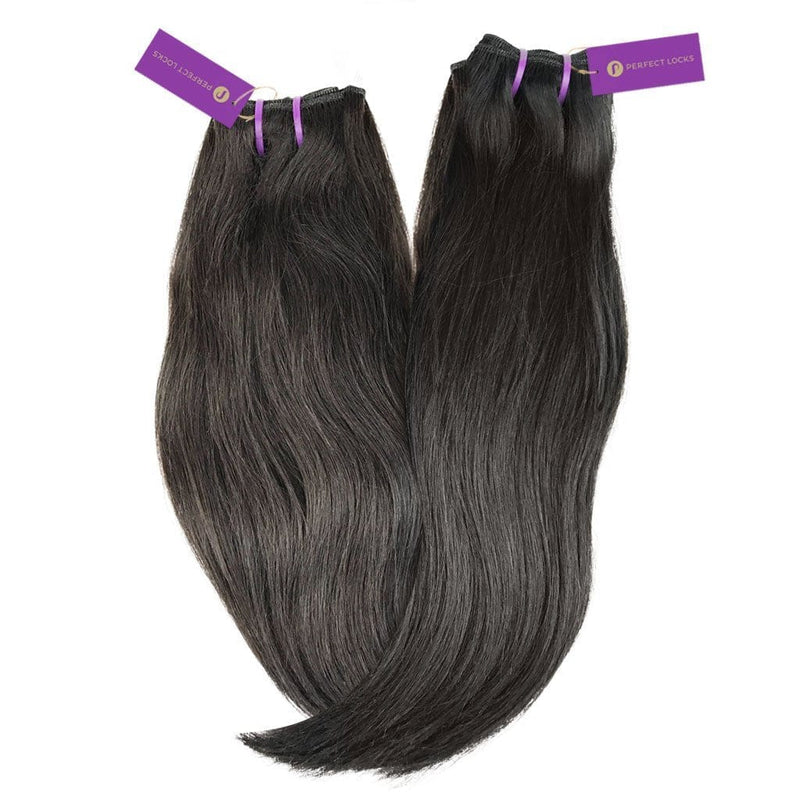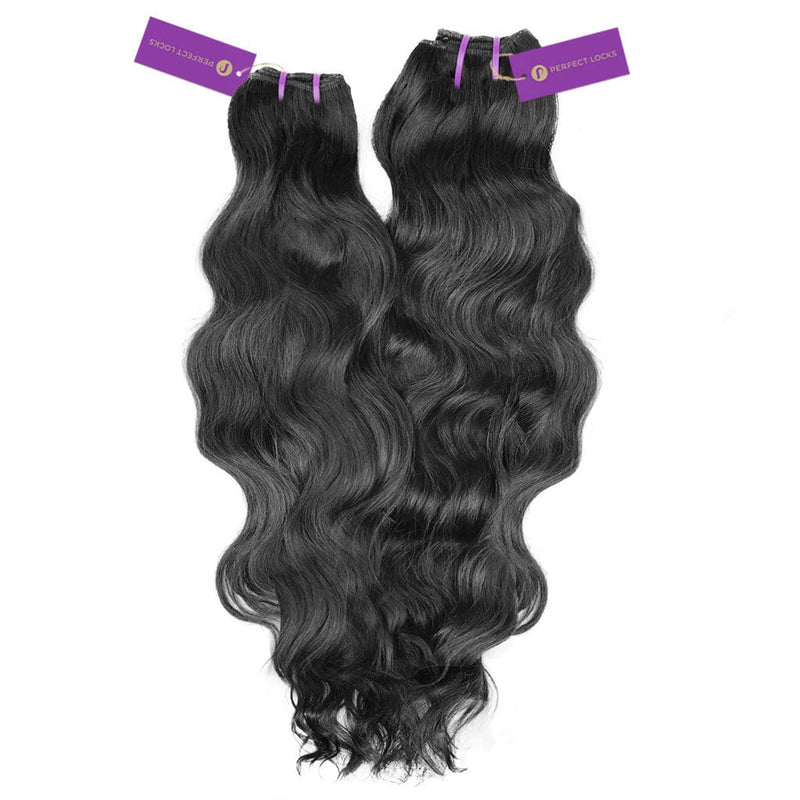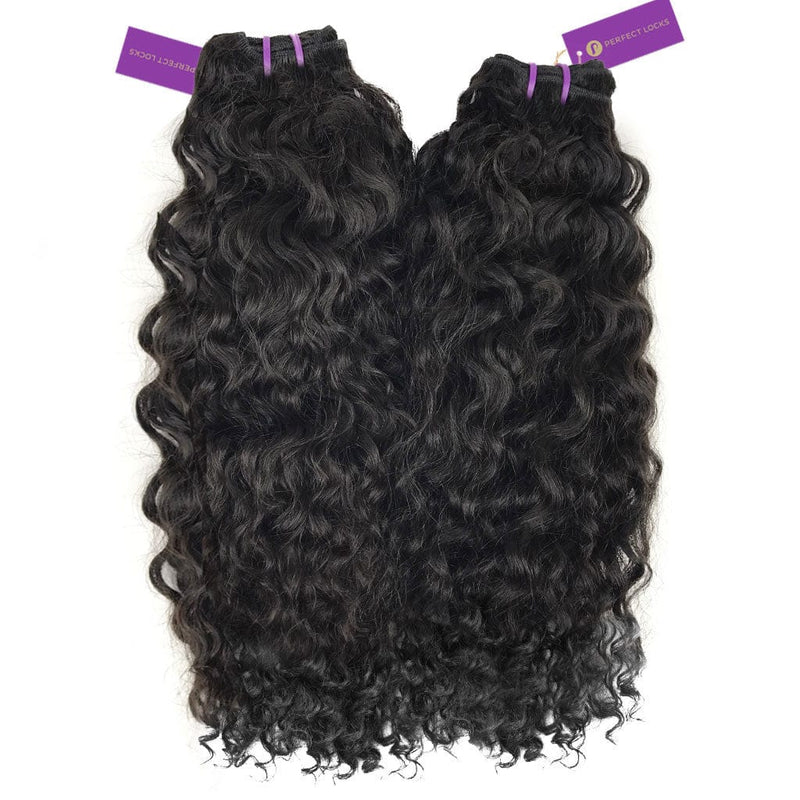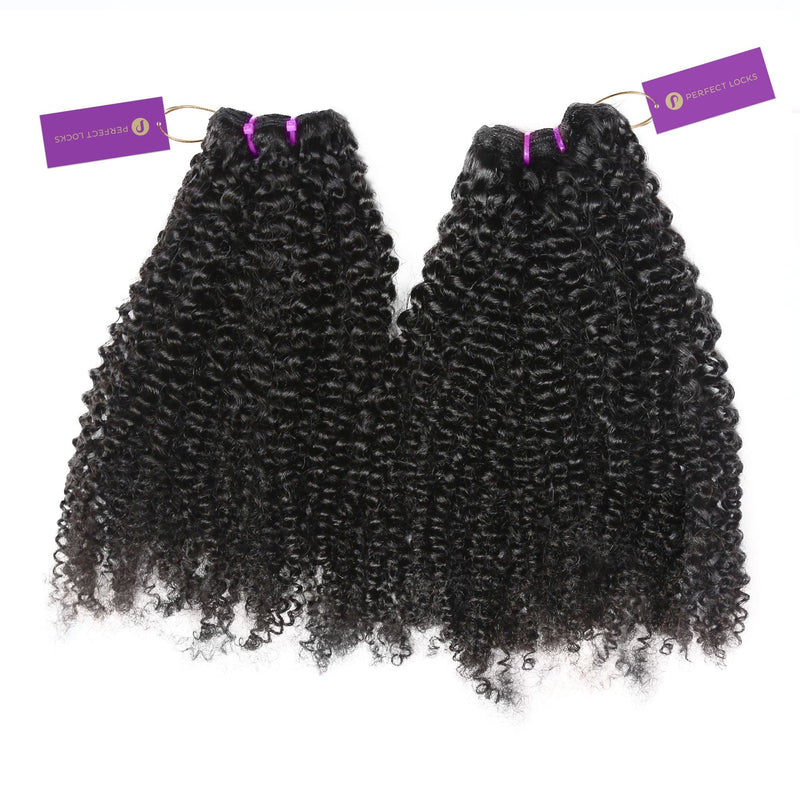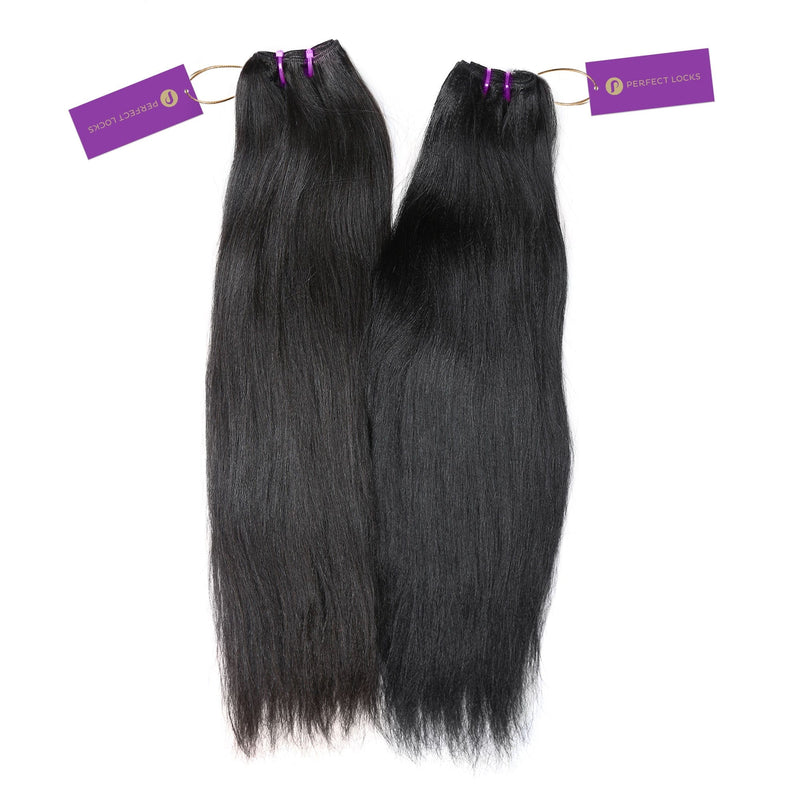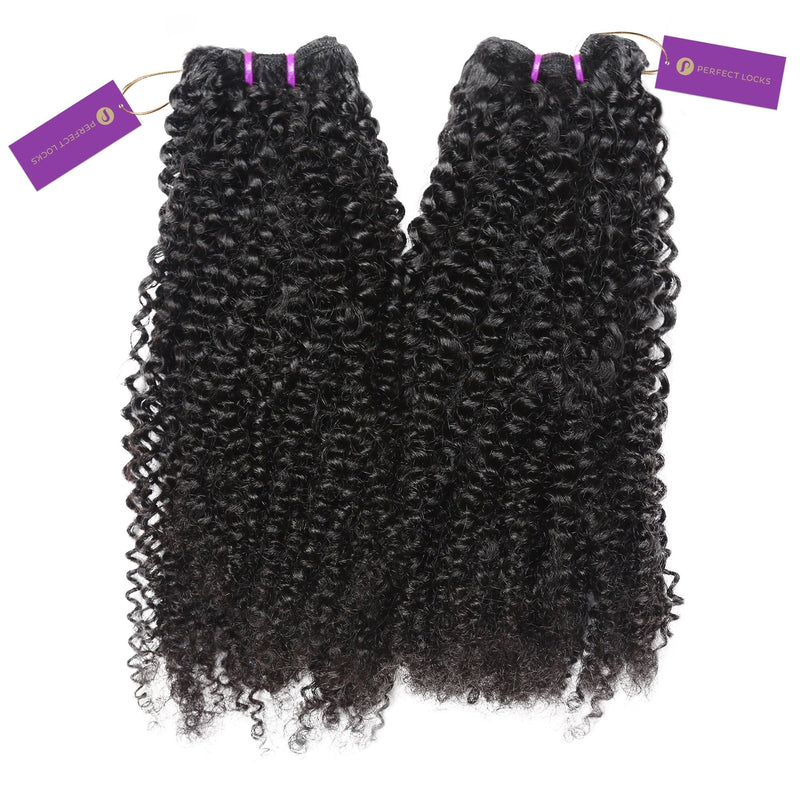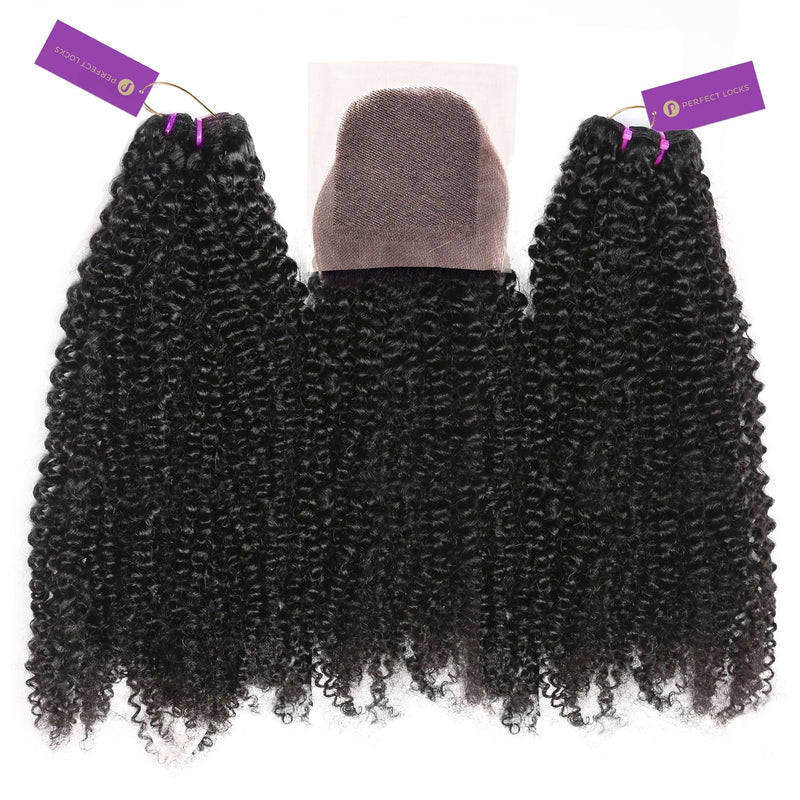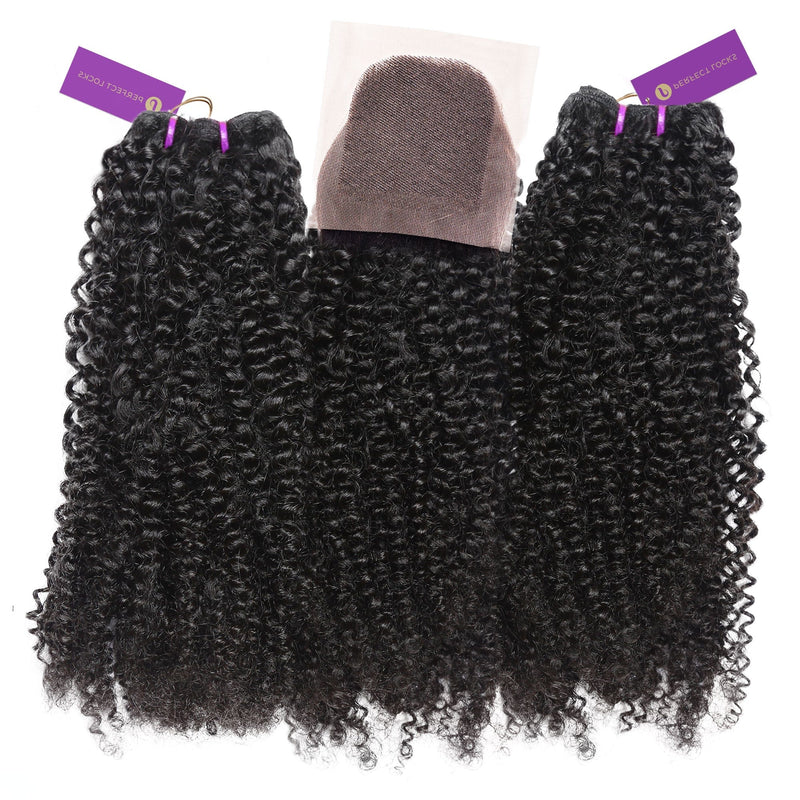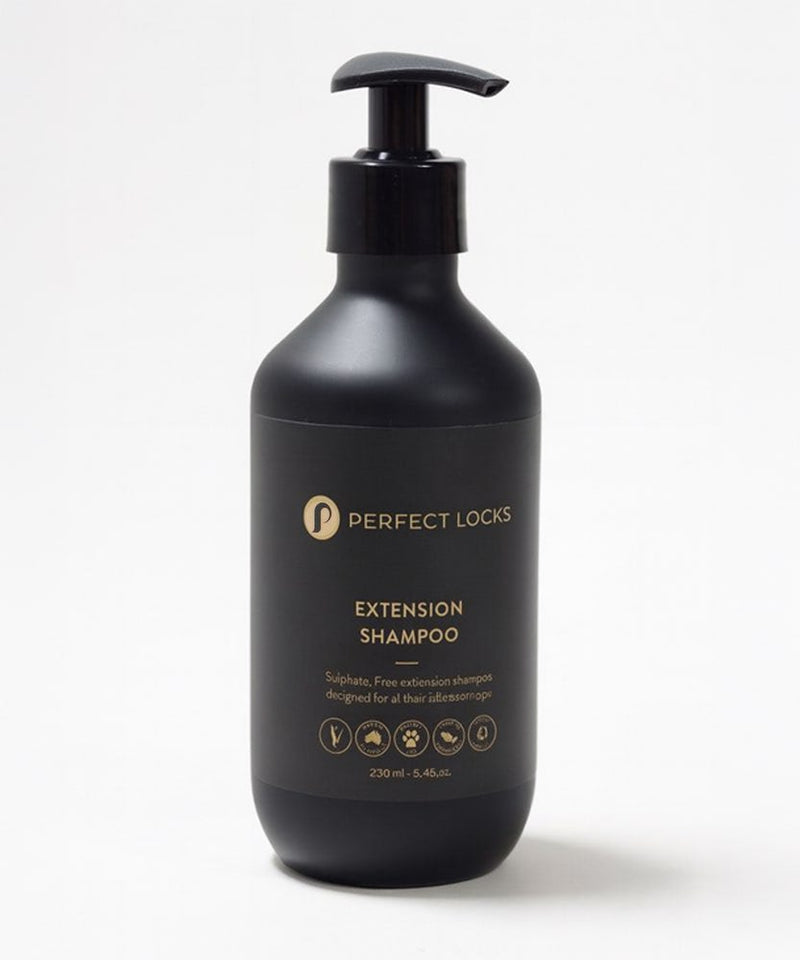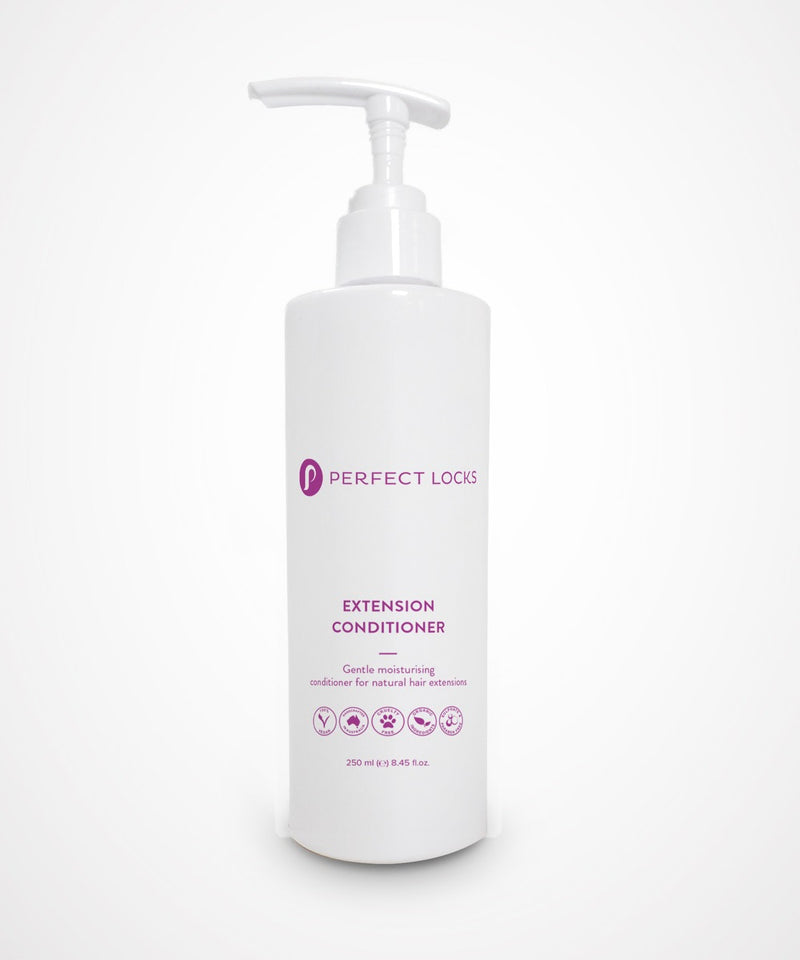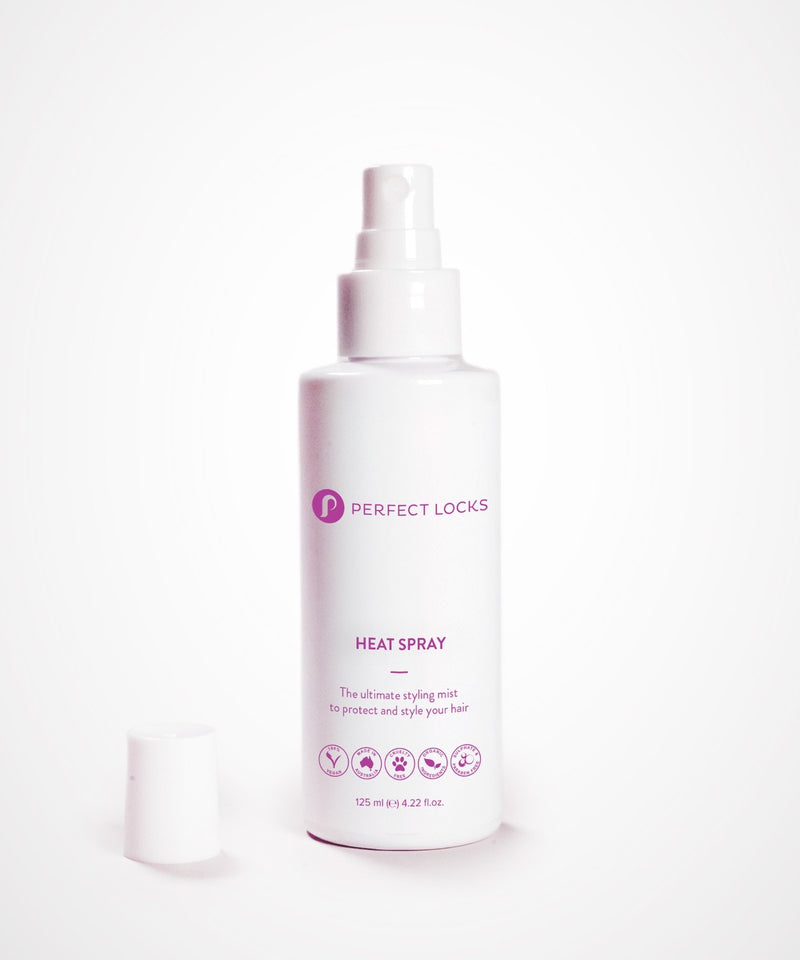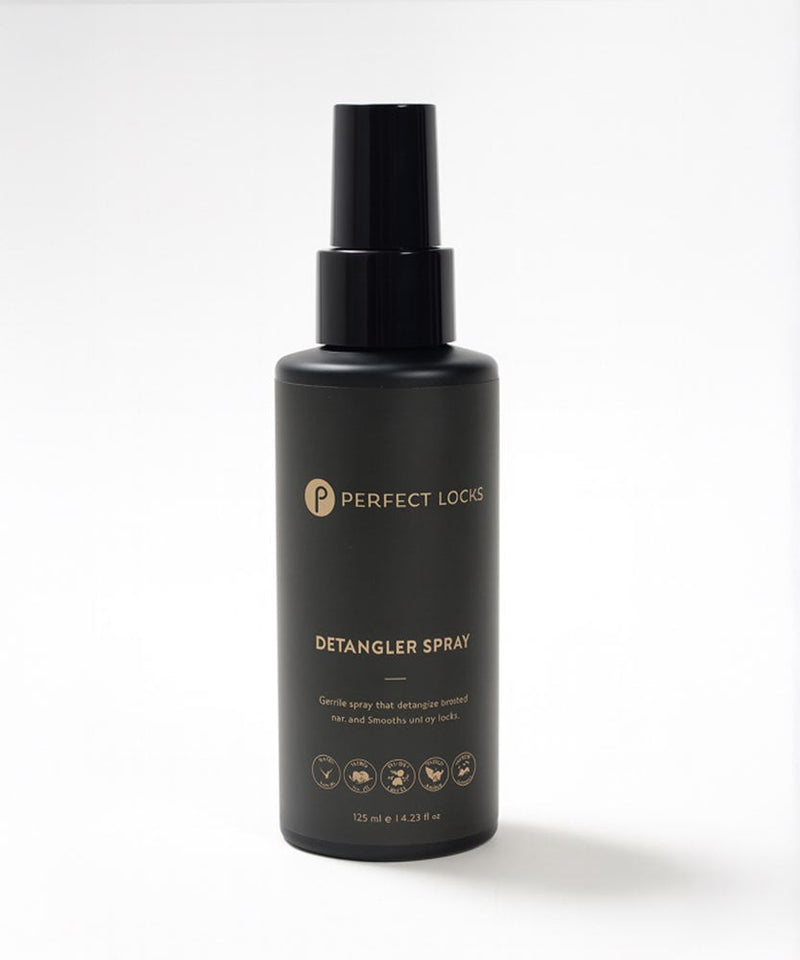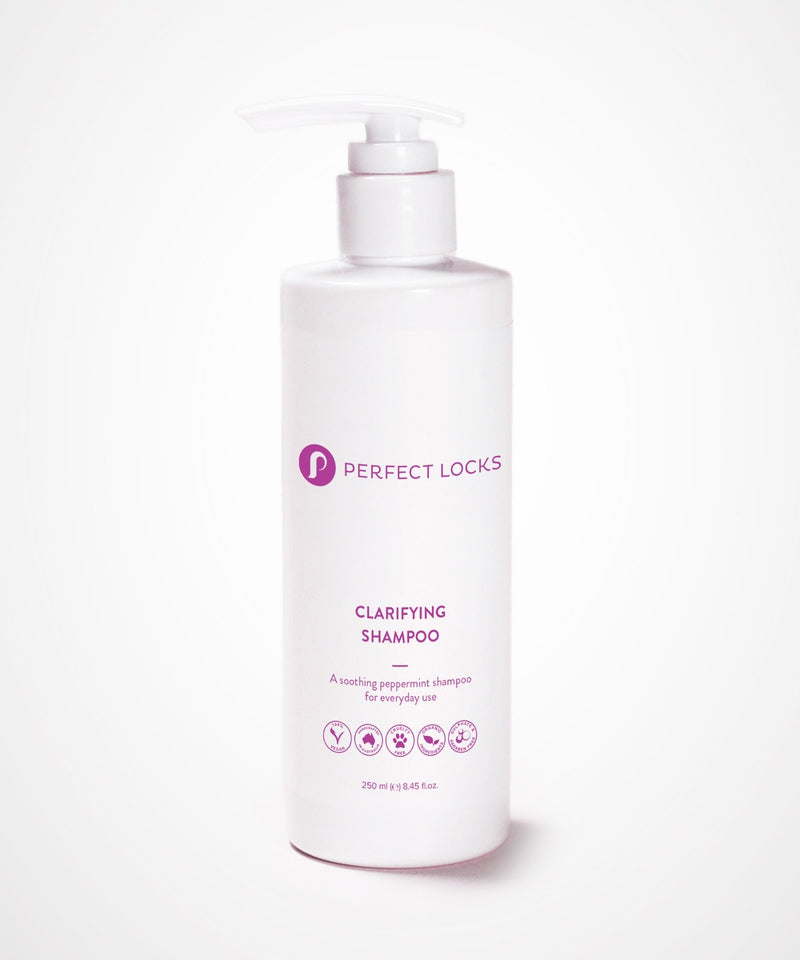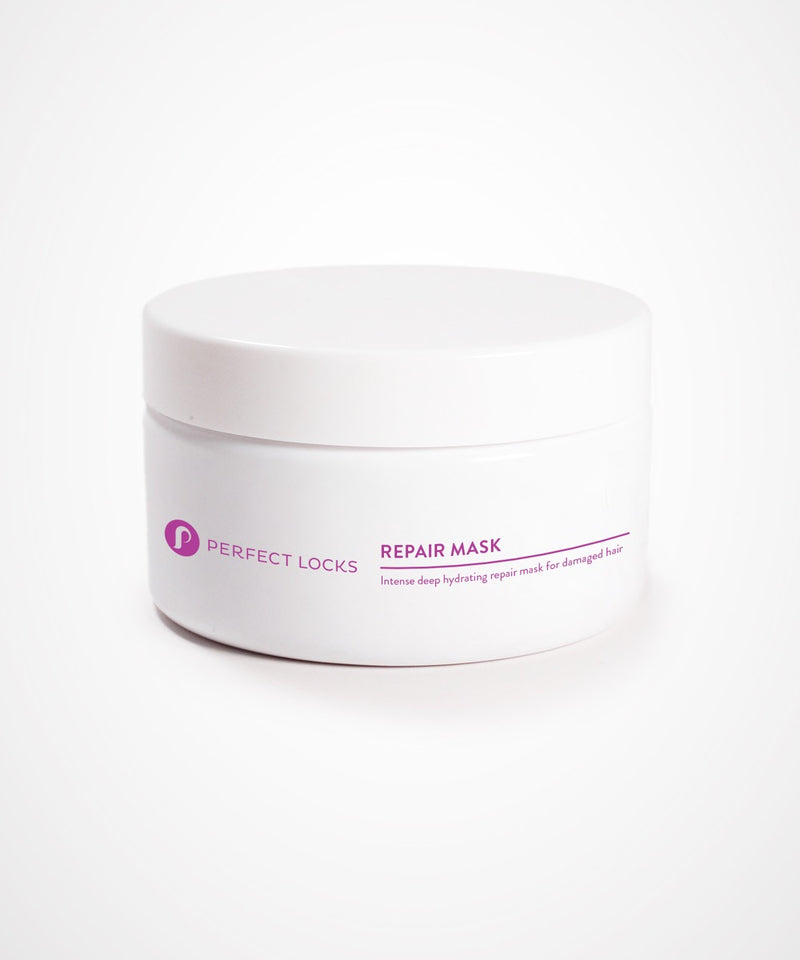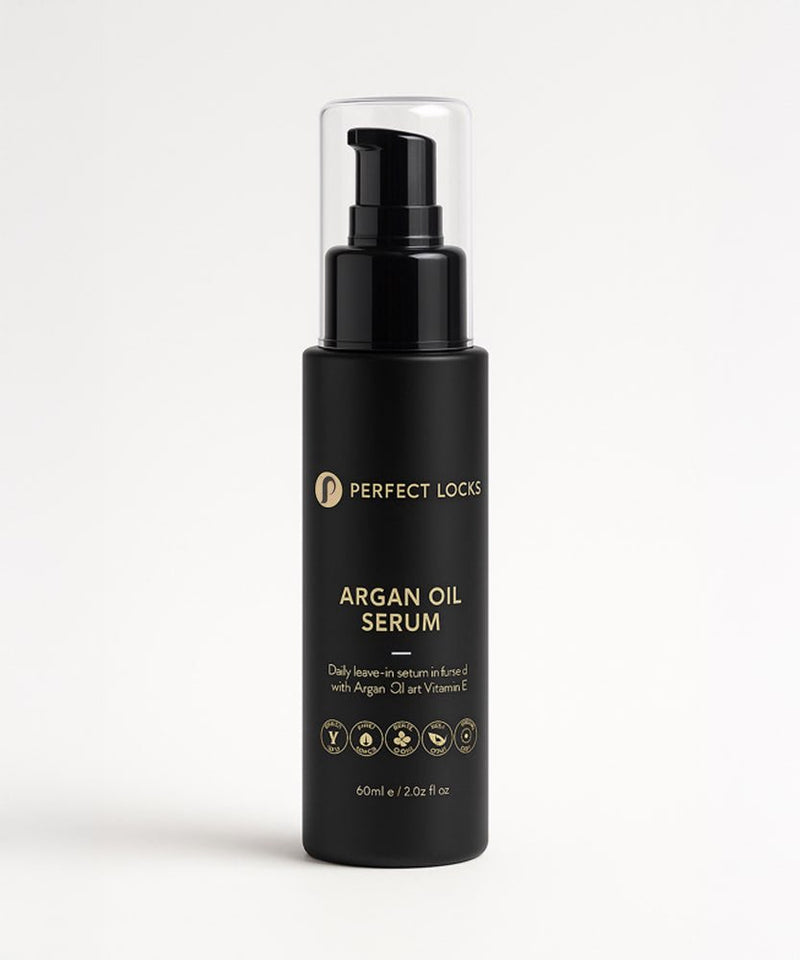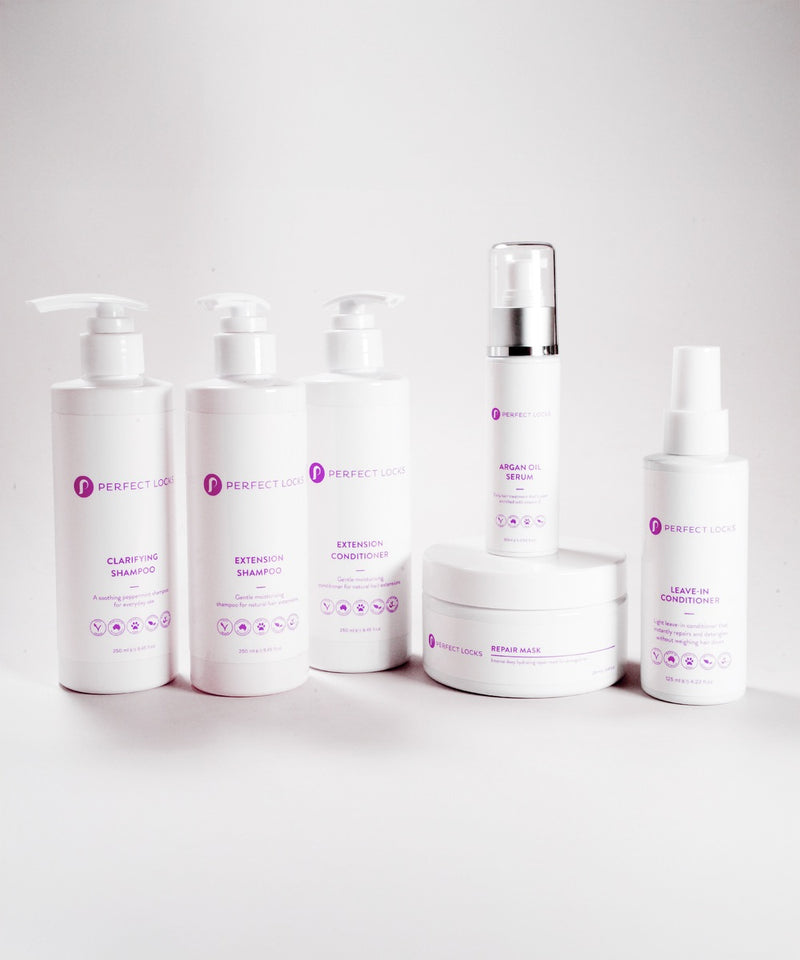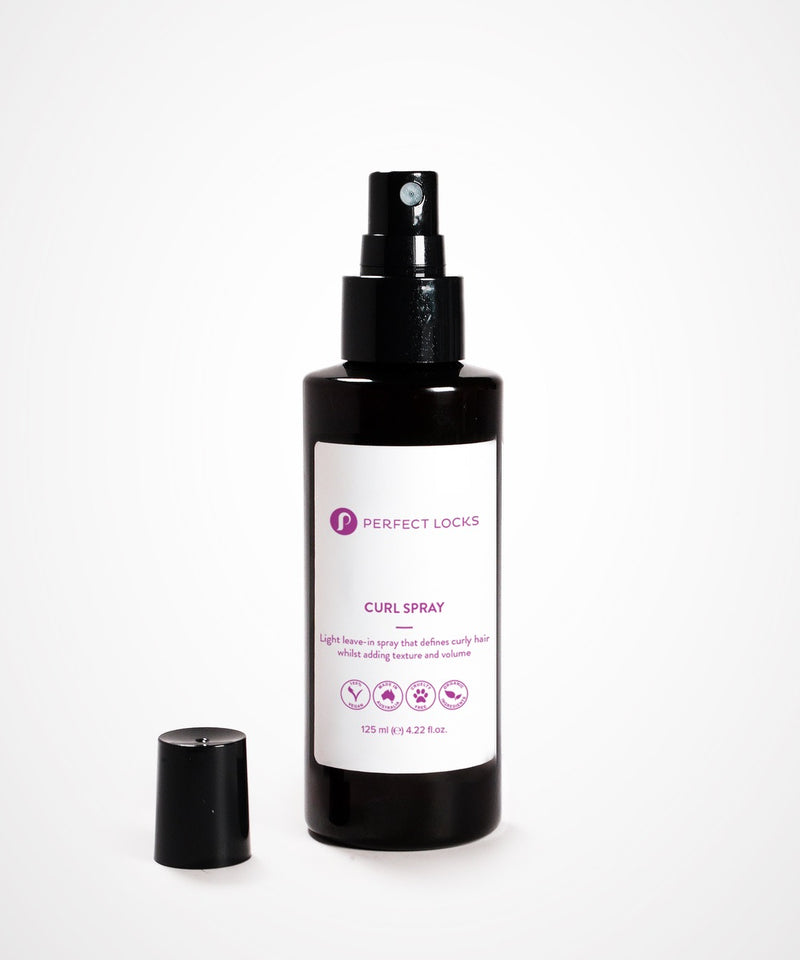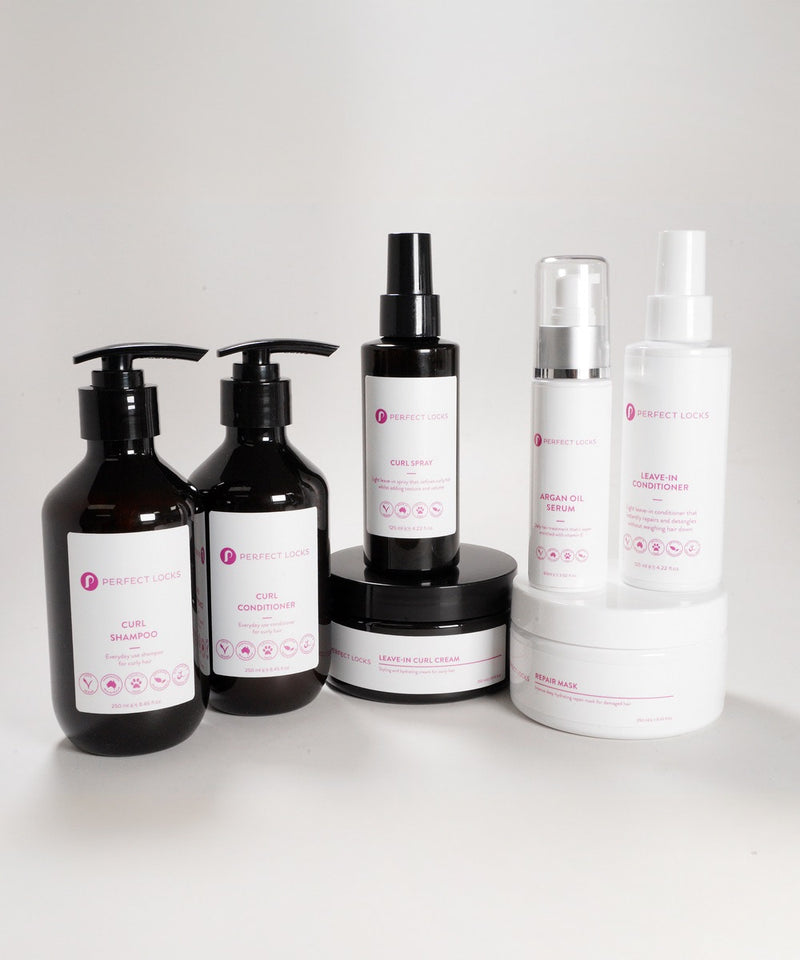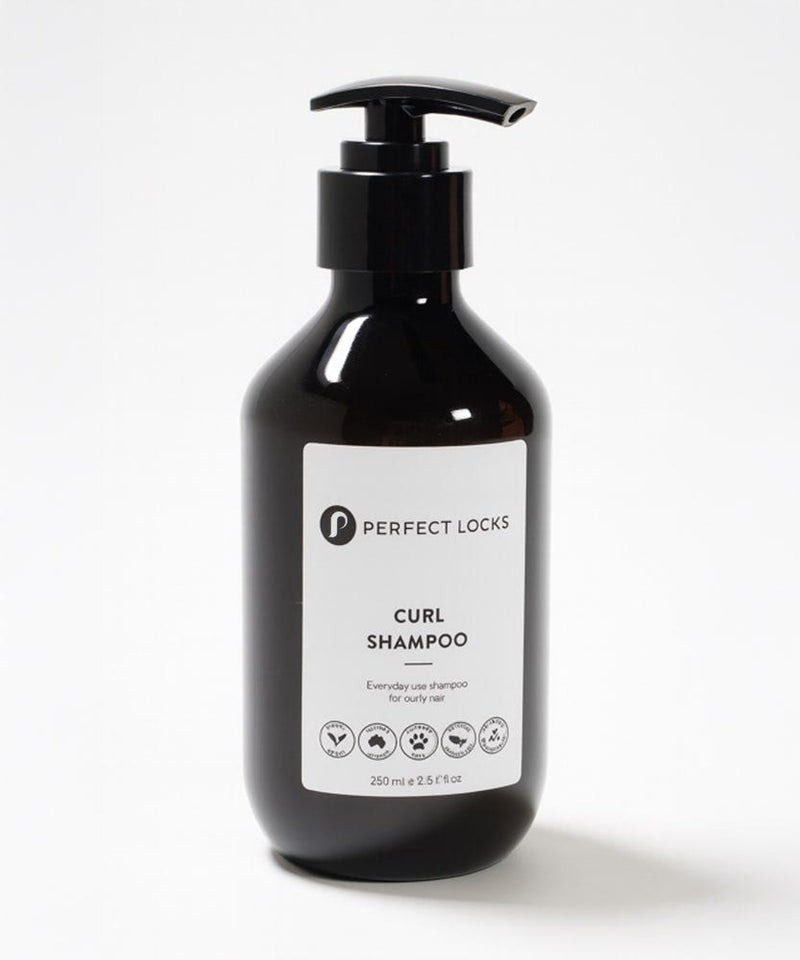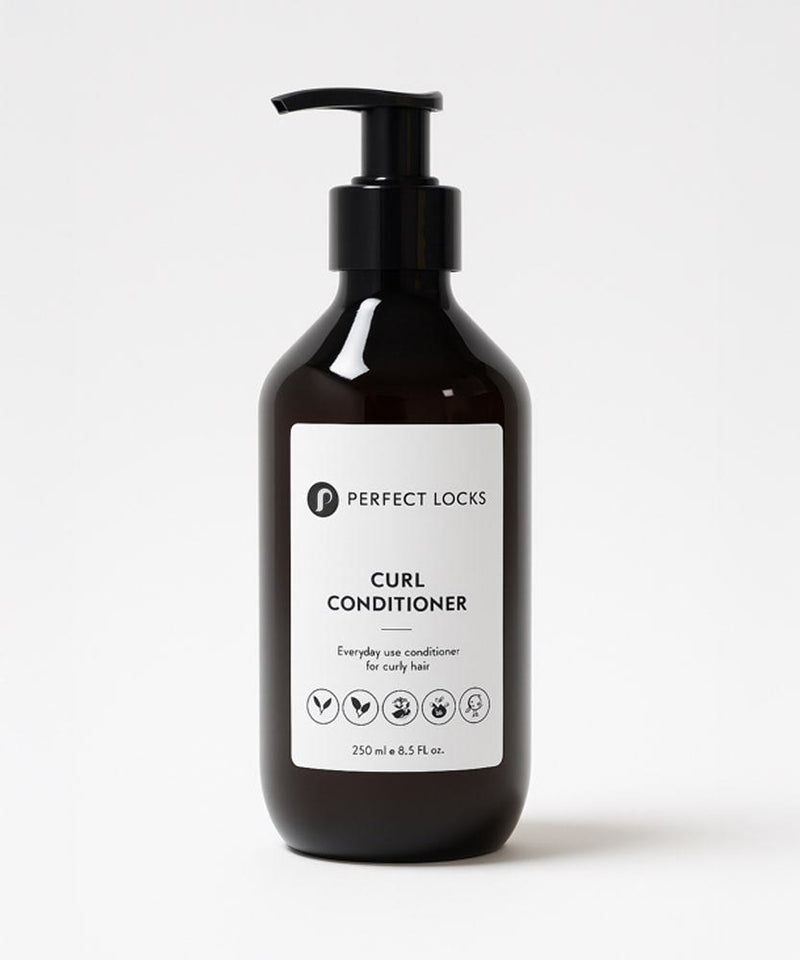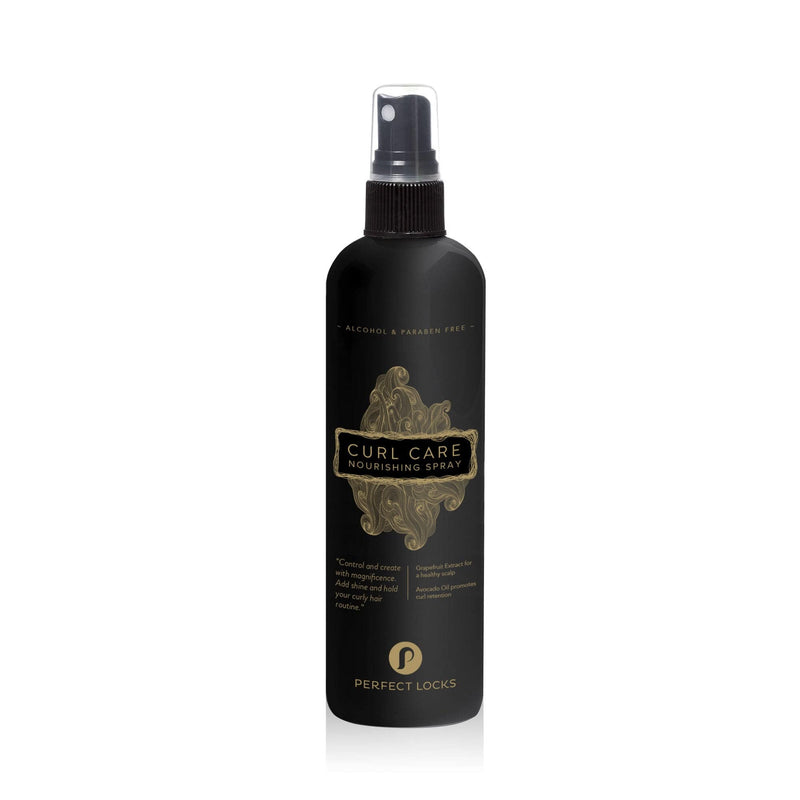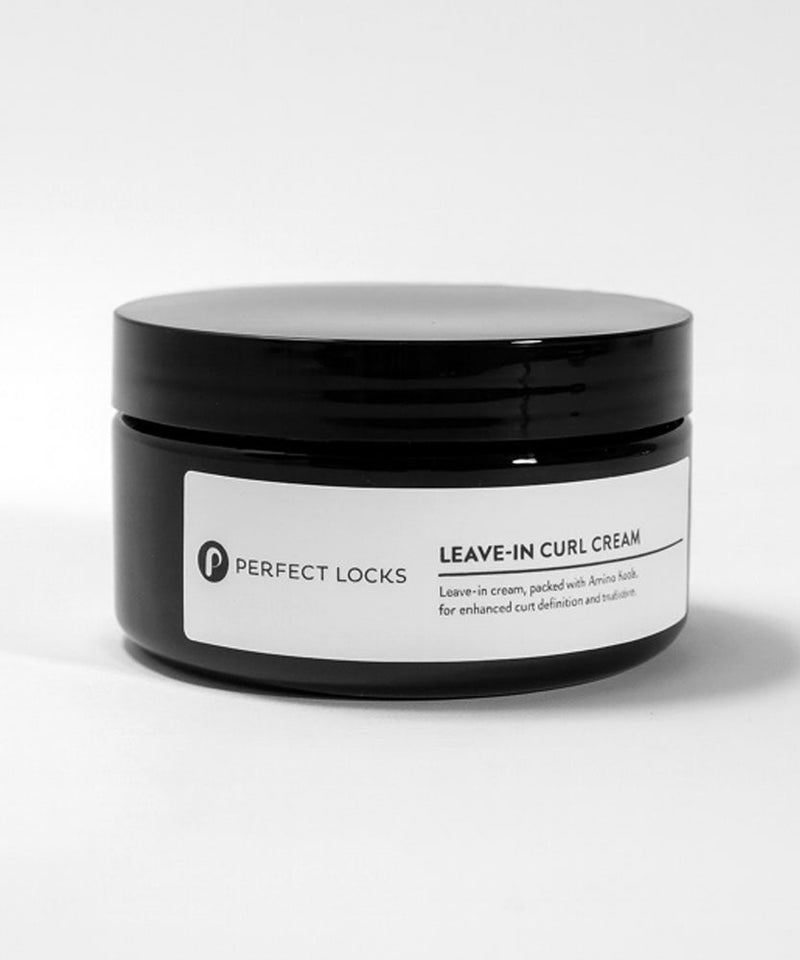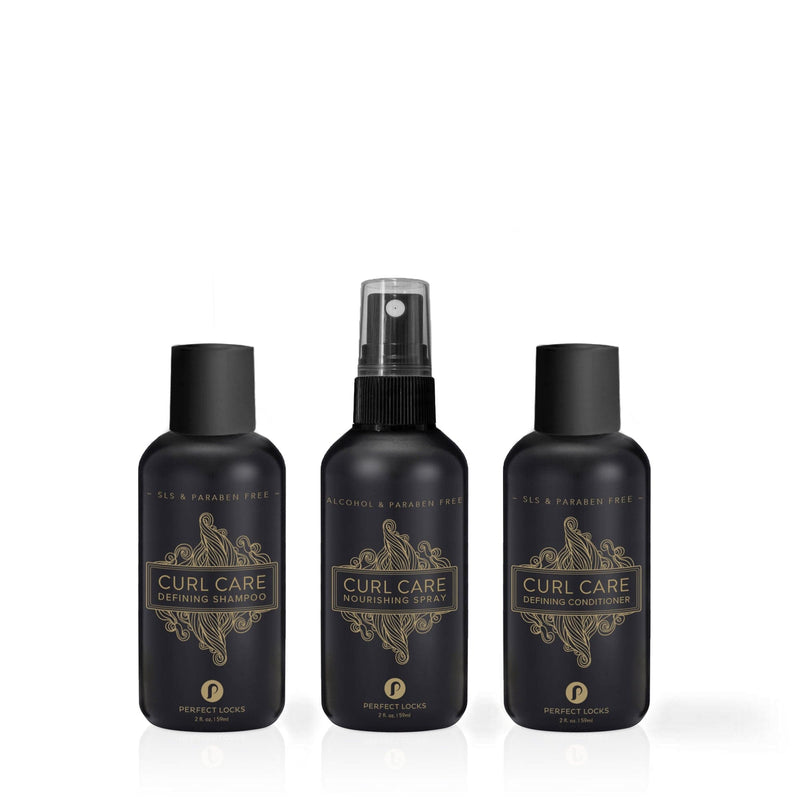Weft Hair Extensions: The Ultimate Guide
Can you believe weft extensions have been around since the 50s? A trailblazing woman named Christina Jenkins, came up with the ingenious idea to sew hair onto a fabric backing. This not only made the application process much quicker, but also caused less damage to the client's natural hair. Nowadays, wefts come in all shapes and sizes. You can get hand-tied wefts, machine-sewn wefts, skin wefts, beaded wefts… the list goes on! But they all have one thing in common: they're attached to your own natural hair using some kind of adhesive or sew-in technique.
What are Weft Hair Extensions?
Weft hair extensions are one of the most popular types of hair extensions available on the market today. They are made by taking strands of real or synthetic hair and weaving them into a base that can be attached to your natural hair. Wefts can be applied in a variety of ways, including bonding, sewing, clips, and even tape-ins.
Weft hair extensions are a great option if you are looking for a way to add length, volume, or even color to your natural hair. They can be applied in a matter of minutes and can last for weeks or even months at a time.
Watch a Hand-Tied Weft Installation

What are the benefits of weft hair extensions?
Weft hair extensions have a number of benefits, mainly being that they are less damaging to the hair than other types of extensions, such as tape-in extensions, fusion extensions, or clip-ins. Weft hair extensions can be worn for longer periods of time, anywhere from 2-3 months, and are less likely to cause tangling or matting of the hair. They are also less likely to fall out than other techniques. There are more benefits, read on!
- They can add length or add fullness to your hair in a matter of minutes.
- They can be applied in a variety of ways, including bonding, sewing, clips, and even tape-ins.
- They can last for weeks or even months at a time.
- They can be made from real or synthetic hair.
- They are a great way to add volume, color, or both to your natural hair.
Weft hair extensions are one of the most popular types of hair extensions available on the market today. They are made by taking strands of real or synthetic hair and weaving them into a base that can be attached to your natural hair. Wefts can be applied in a variety of ways, including bonding, sewing, clips, and even tape-ins.
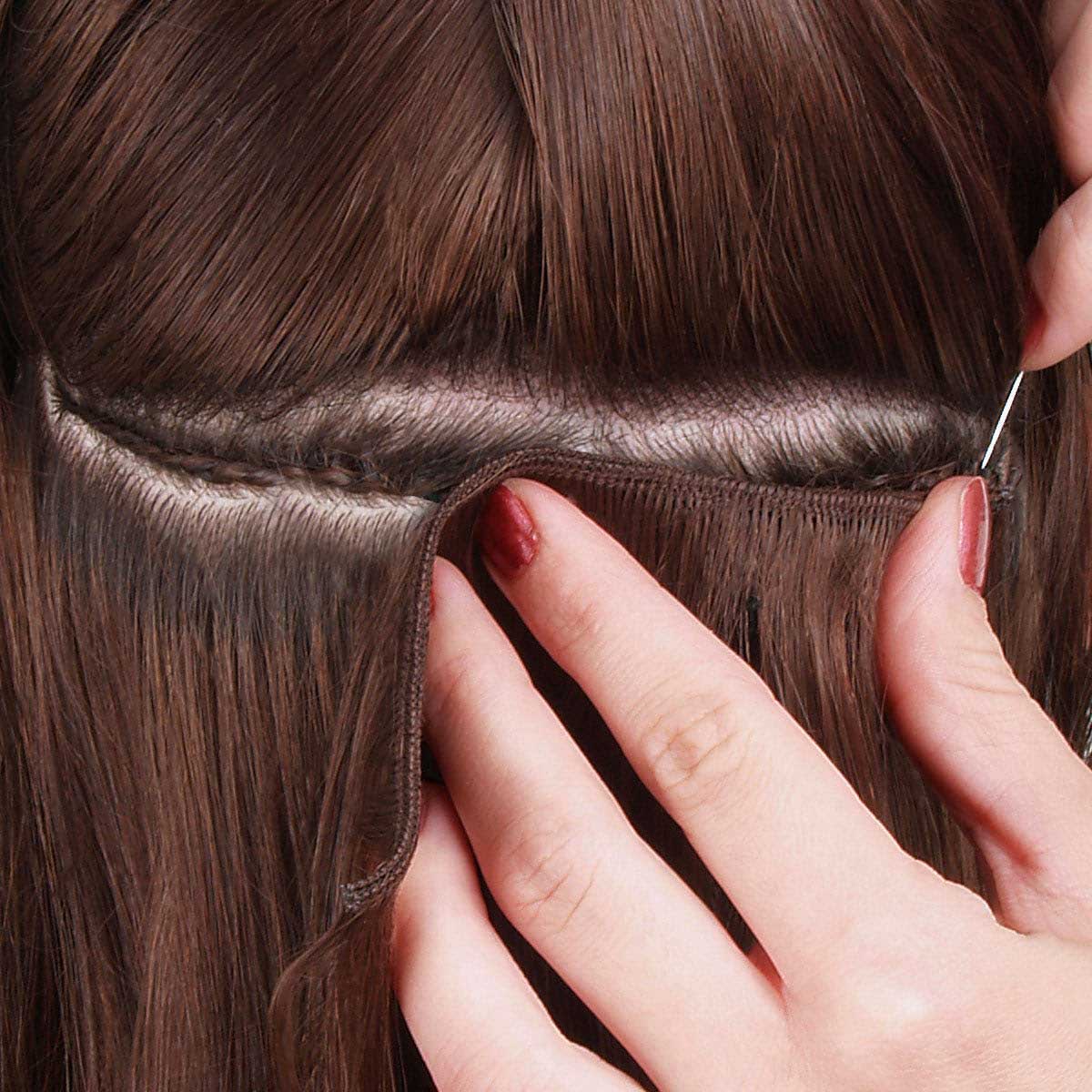
Next-level extensions
The Beauty of Wefts
Weft hair extensions are a great option if you are looking for a way to add length, volume, or even color to your natural hair. They can be applied in a matter of minutes and can last for weeks or even months at a time.
How is a Weft Constructed?
The Foundation: This is where the base of the weft will be attached to your natural hair. There are various ways to install a weft, such as a braided foundation or a beaded foundation. From there the weft is sewn onto the foundation.
The weft: The weft (otherwise known as "track") is what the strands of hair are woven into. It can be made from a variety of materials, including nylon, polyester, or even human hair. The common types of wefts are machine, and hand-tied. More on this later.
The beard: The beard is hair that's folded over under the weft before sewing. This helps to keep the weft from unraveling. Sometimes the beard can be long and uncomfortable. This is something you'll want to take into consideration when choosing wefts.
The hair: The most important part! Wefts can be made from real human hair or synthetic hair. Real human hair wefts are the most popular because they look and feel the most natural. However, they are also the most expensive. Synthetic hair wefts are a great alternative if you're on a budget.
Watch a Beaded Weft Installation

What are the different types of wefts?
Machine Wefts
Machine-made wefts are created using a special weaving machine that stitches the hair onto a base material. Machine wefts usually are best for thicker or coarse hair. One technique involves braiding the client's hair into a foundation, which is used to sew the weft around the client's head. Another technique that is used is a beaded foundation. This technique is great for the least amount of tension against your scalp and is progressing to be the most popular method across all hair professionals. Machine wefts are made into one long track which can be cut into smaller sections that are easier to work with. They can be sewn, glued, or even taped into the hair. Sewing is the method we recommend. Machine extensions are also quite limited. Machine wefts are not suitable for thin or fine hair due to them not being as discreet as other wefts. Another factor is the weight of the machine weft; this can cause a lot of strain on your fine strands, which can result in discomfort and tugging.
Hand-Tied Wefts
Hand-tied wefts, you guessed it, are made by hand tying strands of hair onto a base material. The track on hand-tied extensions is much thinner than machine wefts and is great for thin hair or fine hair, as the weft is lighter and more flexible. Hand-tied wefts come pre-cut in smaller pieces and should not be cut, as they can unravel. Hand-tied wefts can be sewn, glued, or taped into the hair. There are several newer techniques in the market, including natural beaded rows, which use beads in a technique that attaches the weft to your own hair. For this method, hand-tied rows are a popular option, they weigh in at 2 ounces, where hand-tied wefts weight in at a full 4 ounces.
Beaded Wefts
Beaded wefts are a type of weft that uses small beads which are sewn directly onto the weft. This is sort of a hybrid method, that is similar to fusion hair but makes use of the weft. In the small sections of the client's hair, the weft is installed with small beads. The beads are then clamped down to secure the weft. Beaded wefts should only be done by a professional and require some maintenance every 4-6 weeks. Beaded wefts also cuts down on installation time and is a much quicker method.
What is the best type of hair for wefts?
When shopping for premium quality sew-in weaves, you want hair that's resilient. Indian hair has proven to be very flexible in both styling terms and longevity. This is due to the fact that Indian hair is rich in a natural protein called keratin. This protein allows the strands to withstand heat and chemicals, making it ideal for long-lasting weaves. Not all Indian hair is created equal, however. The best Indian hair for weaves is virgin Indian hair, which has never been chemically processed. Virgin Indian hair can be found in a variety of textures, including straight, wavy, and curly. These textures are completely natural and come from different regions of India.
Thicker Hair
If you have thicker hair, then machine-made wefts are a great option, as your hair will be able to handle the weight of the machine weft extensions.
Thin or Fine Hair
If you have thin or fine hair, then the hand-tied weft approach is a better option. Hand-tied extensions are considerably lighter and more flexible. The downside is that hand-tied extensions may cost more and take more time to apply. However, they are discreet and lie flatter against the scalp.
Beaded wefts are a good option for all hair types as they are attached to your own hair with small beads rather than being sewn in. Adjustments on beaded weft extensions can be easier as the bead can be unclamped, slid up, and re-clamped.
How much hair do you use for installation?
When determining the amount of hair you need for an installation, it’s important to determine how dense your hair is.
If you have a blunt cut or very thick hair you will need approximately 3 - 4 packs of hair. This is going off the weight of the hair being 100 grams.
If you have thin, fine, or layered hair you will need approximately 2 -3 packs of hair. This is going off the weight of the hair being 100 grams.
If you are still wary of how much hair you need for your installation, speaking with your hair professional is also very important. Once you have determined how much hair you will need, the next step is to color match your hair.
How do I choose the right color and length?
Your stylist can help you choose the right color for your weft hair extensions. If you are shopping for the hair yourself, then take a look at our guide on how to color-match hair extensions.
As for length, it depends on what style you are trying to achieve. If you want longer hair, then go with a longer length. If you want to add volume, you can sacrifice 2 to 4 inches so the end result remains thicker throughout the body of your hairstyle.
How much does it cost to get weft hair extensions?
The cost of weft hair extensions will vary depending on a number of factors, including the type of hair you choose, the length of the extensions, and the method of installation. Generally speaking, you can expect to spend anywhere from $200 to $600 for a full head of weft hair extensions for the extensions themselves. Additionally, you'll need to take the service charge into account. Experienced stylists will charge anywhere from $300 to $1000 for installation. The fee will vary greatly on the expertise of your stylist.
You will then need to factor in additional costs for ongoing servicing and maintenance. It's recommended to see your stylist regarding any adjustments that need to be made. For example, accommodating for new hair growth, or removal of the extensions. These charges can range from $100 to $400 per visit.
PRO TIP: Weave bundle deals are a great way to save on wefts.
Will hand-tied or machine wefts damage my hair?
Machine Wefts
Machine weft hair extensions can be damaging to your real hair depending on the installation and how well you maintain them. If you are choosing to do a sew-in method, where the weft is sewn onto a braided foundation of your own hair. Not only will you not be able to put these extensions in your hair on your own, but you will also need to wait several hours until they're firmly attached to your hair. Many people find that this can be an uncomfortable process since the hair extensions are attached so closely to the scalp and can end up pulling on the scalp as a result. Because of this, you might end up pulling out strands of your real hair from the root due to the weight of the hair extensions.
Hand-Tied Wefts
These wefts are generally less damaging to your hair than machine-sewn wefts, but they can still cause some damage if not installed correctly. The beaded row method is less likely to cause damage to your hairline because the beads distribute the weight of the wefts more evenly. Plus, the hand-tied weft is more lightweight so the difference in weight is noticeable. Generally, this method is safer than other types of wefting techniques.
It's recommended to schedule an appointment with your stylist for the removal of the extensions if you are feeling any discomfort or possible damage. Trying to remove the extensions on your own can lead to breakage, damage, and tangling of your hair.
How long do weft hair extensions last?
The average lifespan of weft hair extensions is around 6 to 8 weeks. However, this can vary depending on how well you take care of your extensions and how often you wear them. If you take good care of your extensions and only wear them occasionally, they can last up to 3 months. When it comes to longevity, a lot will depend on the quality of your hair and your comfort level. Wearing a weft for too long can cause a lot of irritation and even damage to your scalp. If you're not comfortable wearing a weft for more than a few weeks, it's best to take them out and give your scalp a break.
Hair Care for Wefts
How do you care for and maintain weft wefts?
Your stylist will go over the aftercare instructions with you, but here are some general tips:
- Wash your hair 1 - 2 times a week using a sulfate-free shampoo and conditioner made for human hair extensions
- Use a hair detangling brush to avoid snagging the wefts.
- Brush your hair at least twice a day, morning and night.
- Brush your hair from bottom to top, make sure to gently brush as close to the weft as possible.
- Be gentle when towel drying your hair.
- NEVER go to bed with wet hair, always blow dry beforehand.
- Before going to bed, braid or put your hair in a low ponytail.
- Use a satin pillowcase or satin bonnet when sleeping to protect your hair.
- Use a leave-in conditioner and argan oil to keep your hair hydrated.
- Protect your hair when swimming or any other activities that will get your hair wet.
- Do not wear your hair in a high ponytail or bun for extended periods of time as this can cause damage









